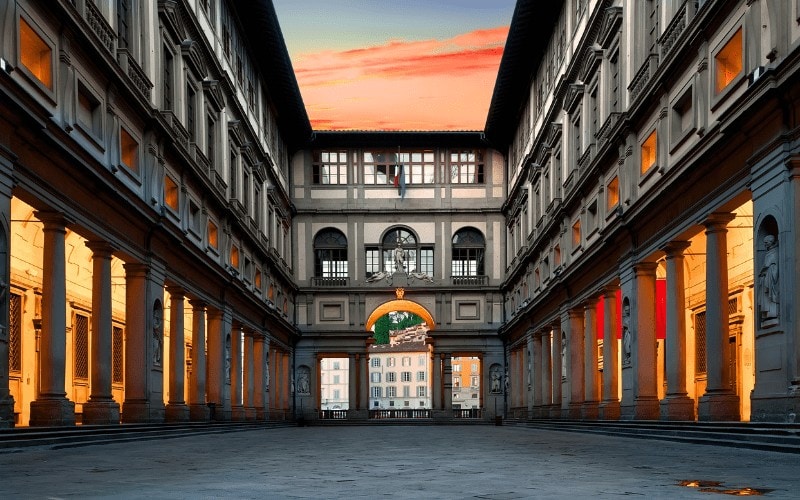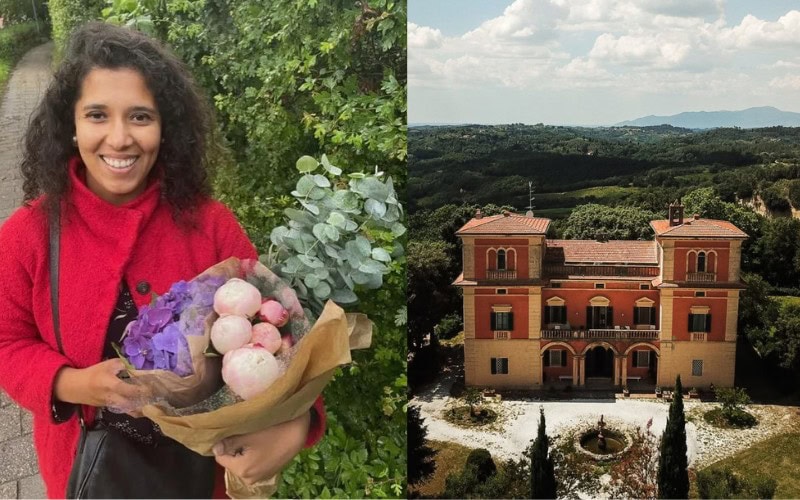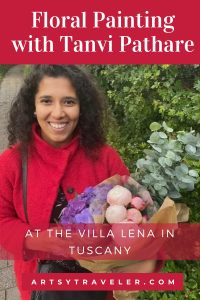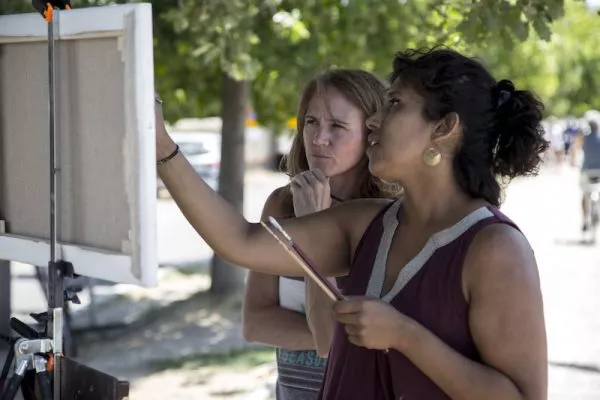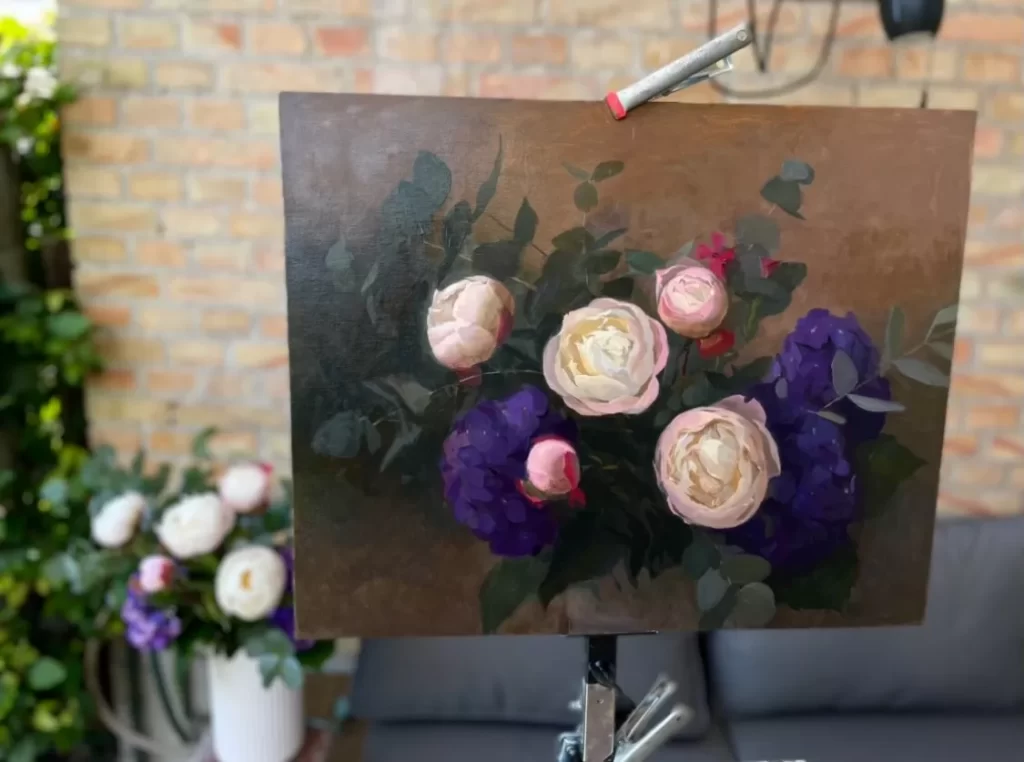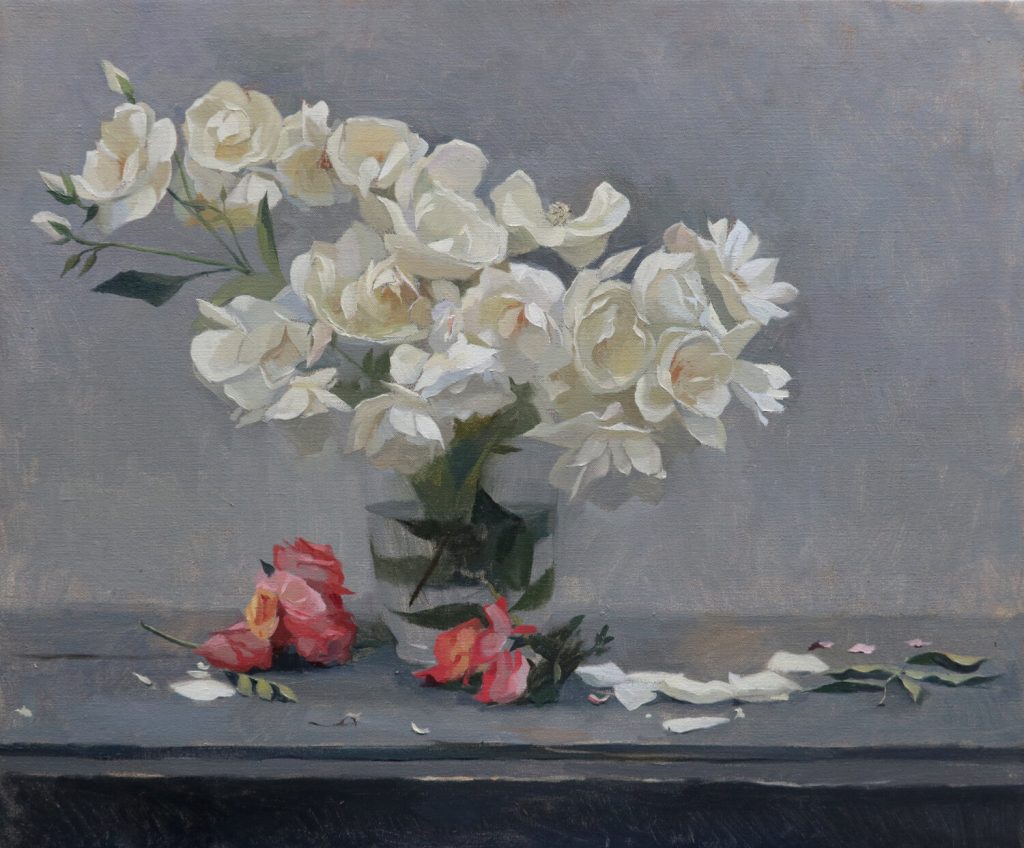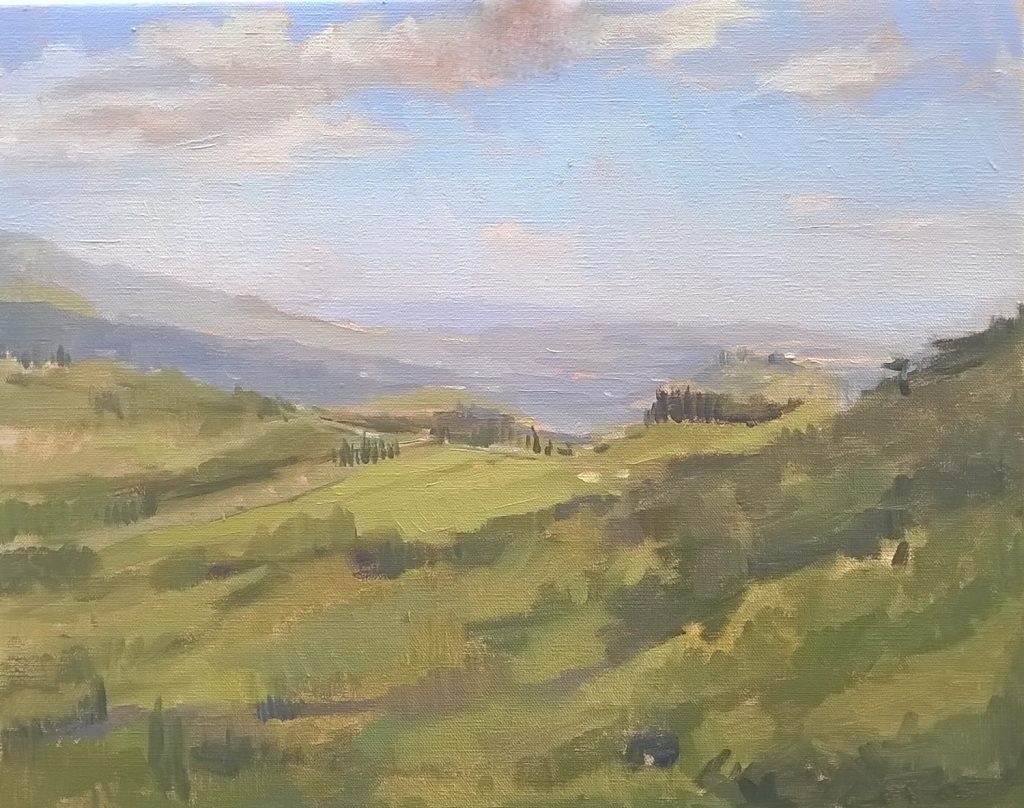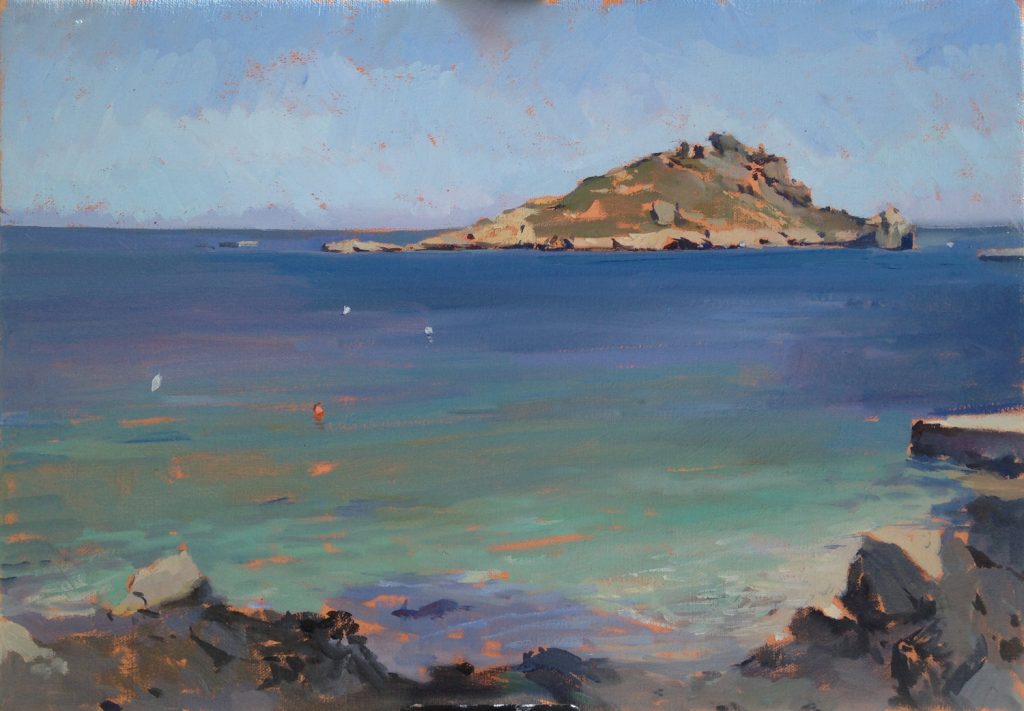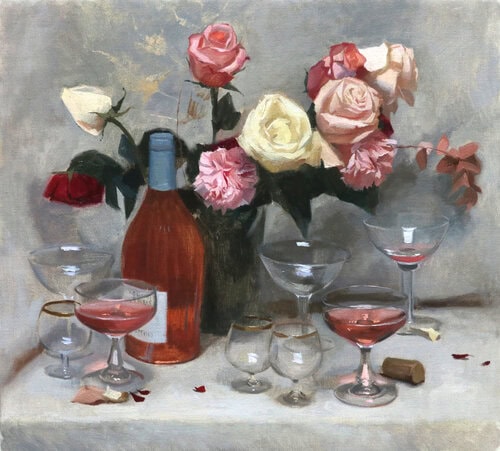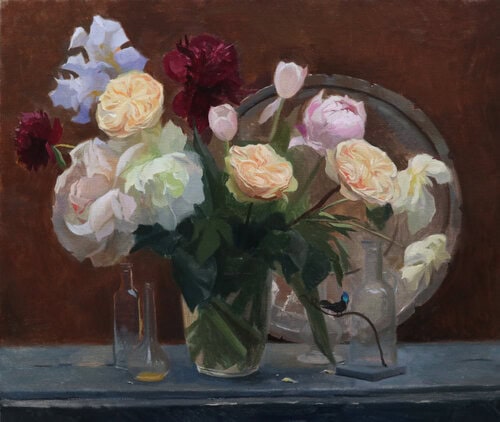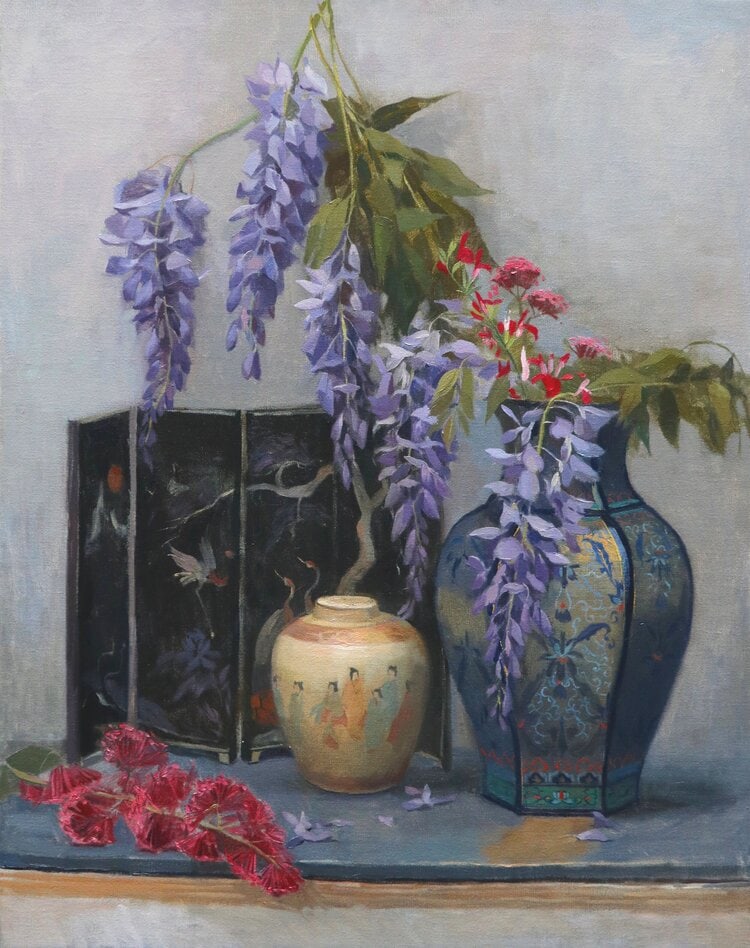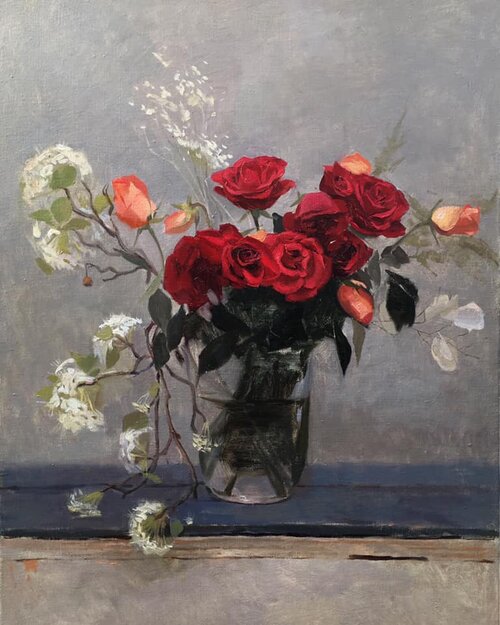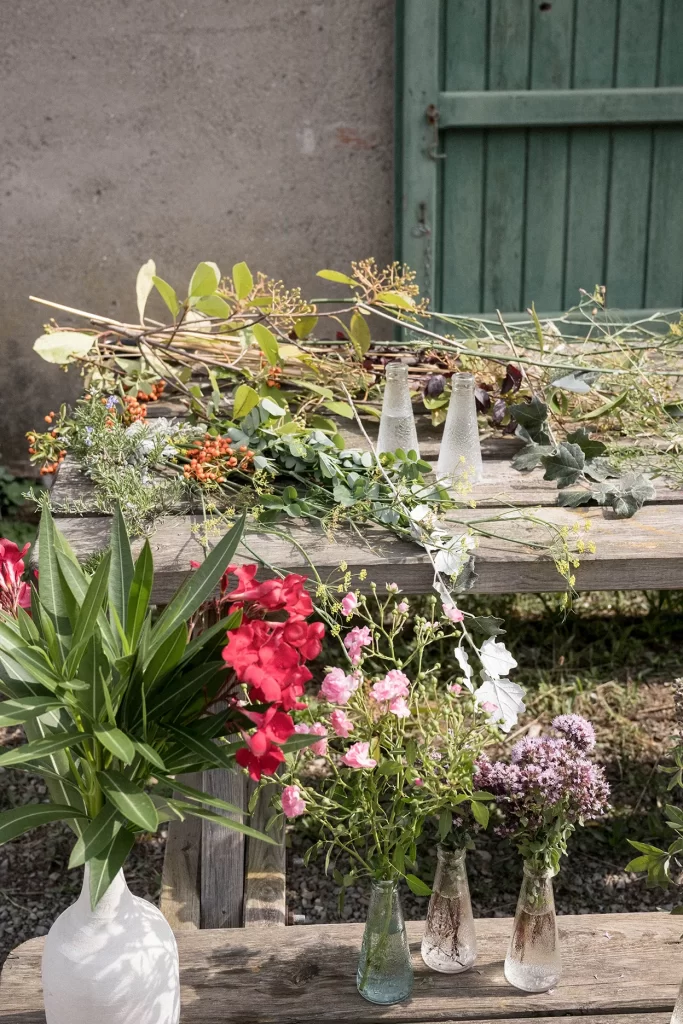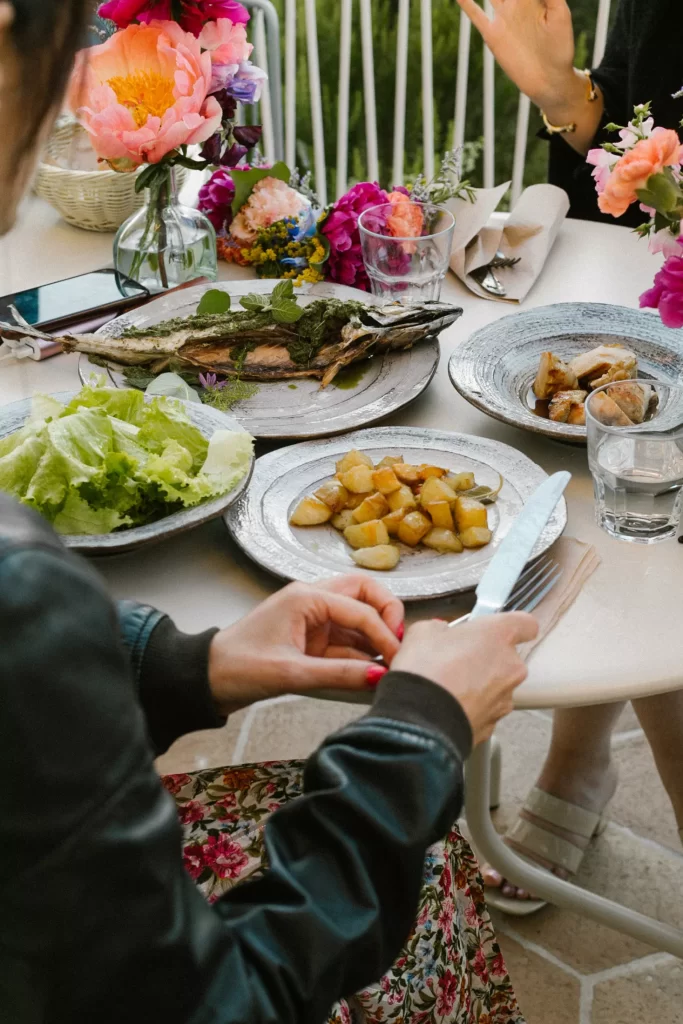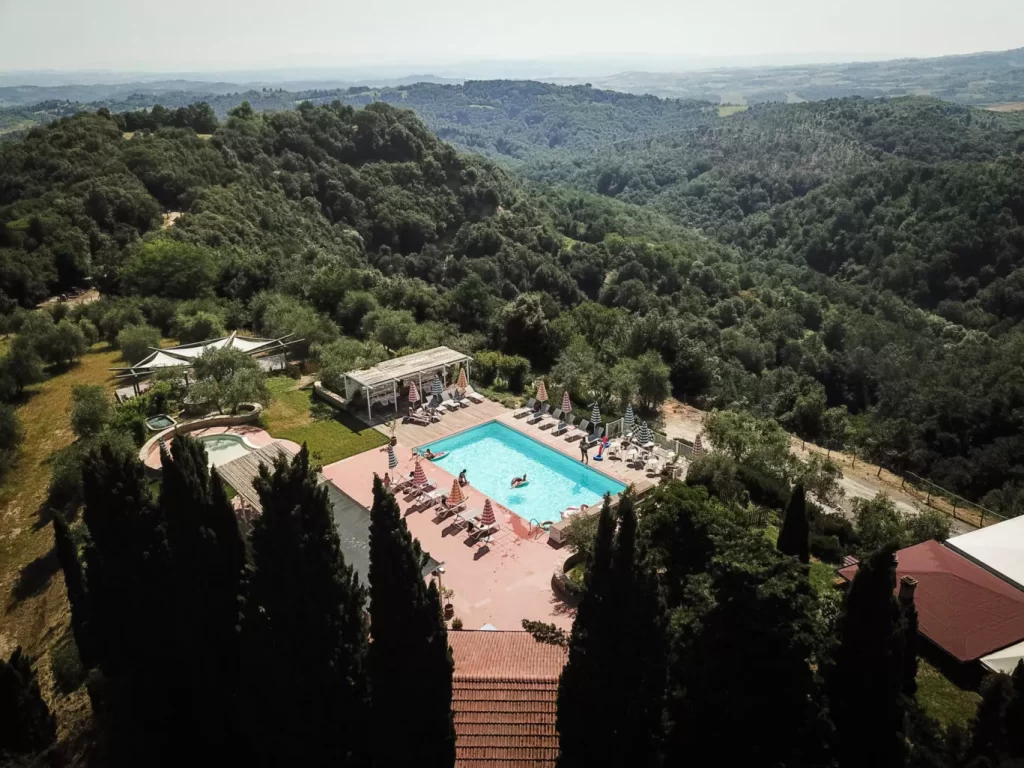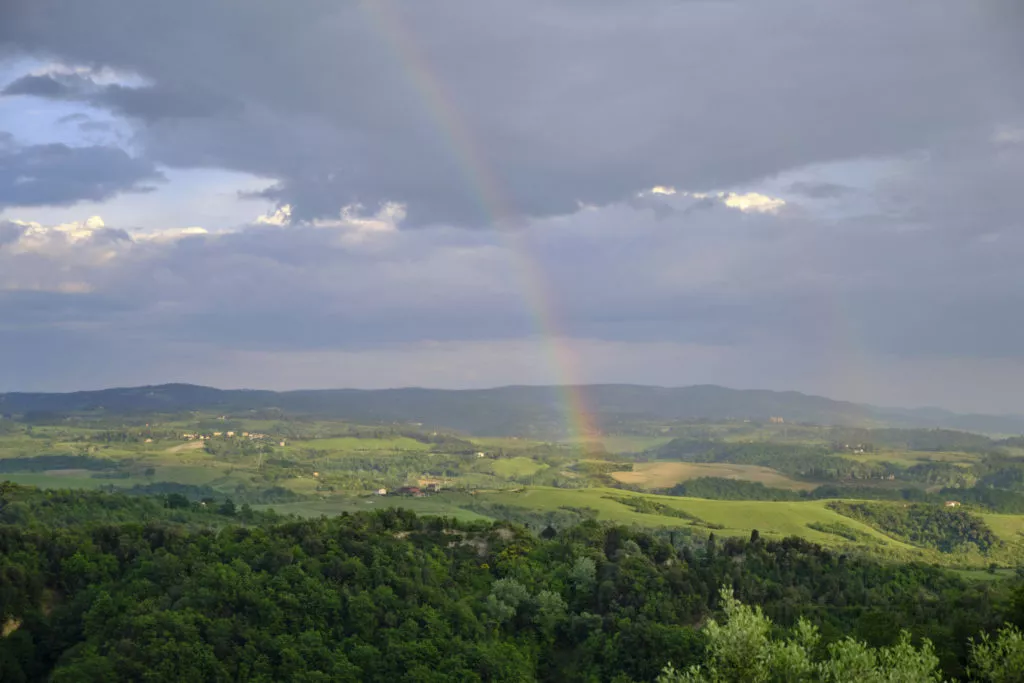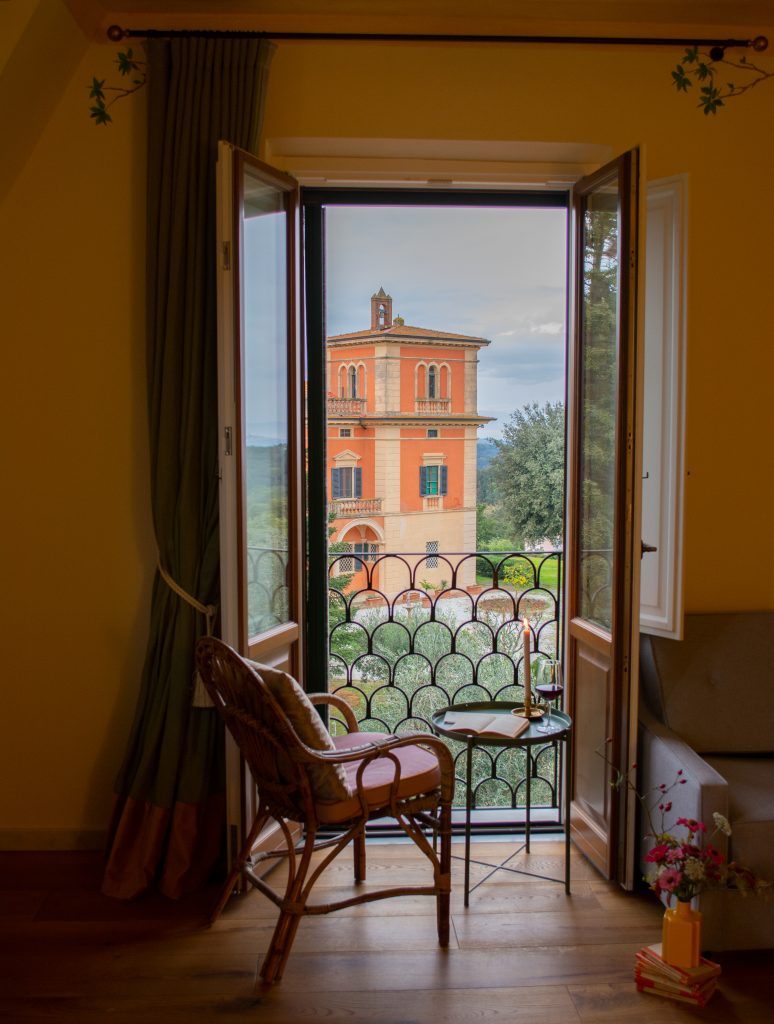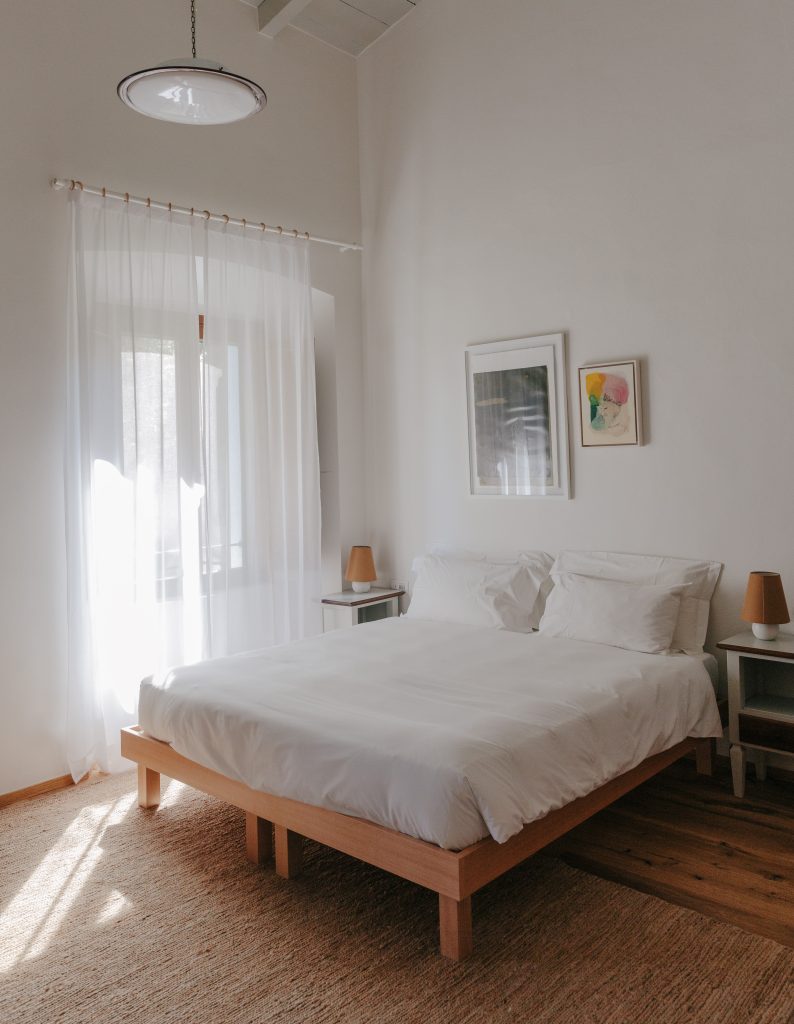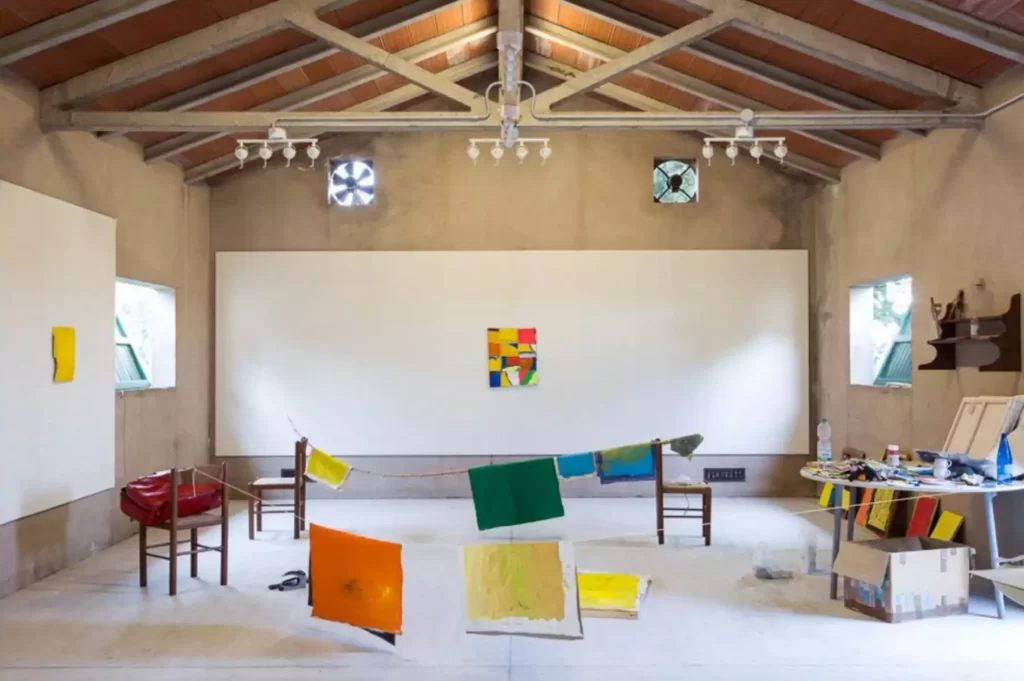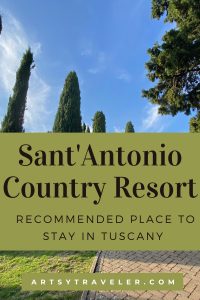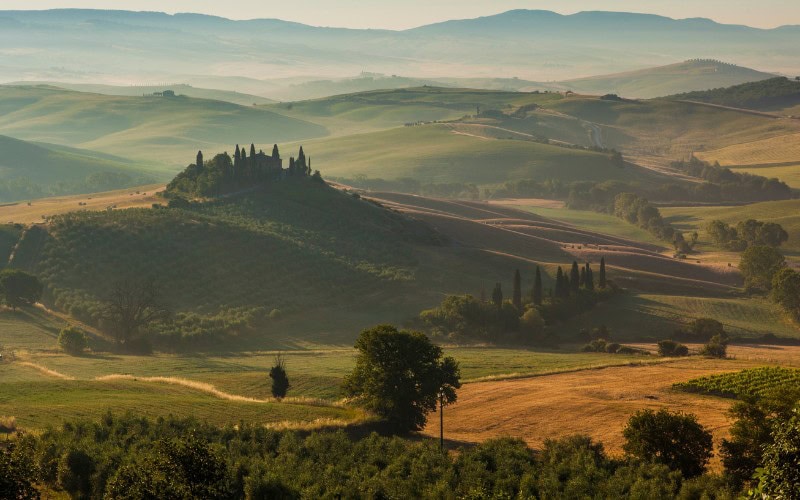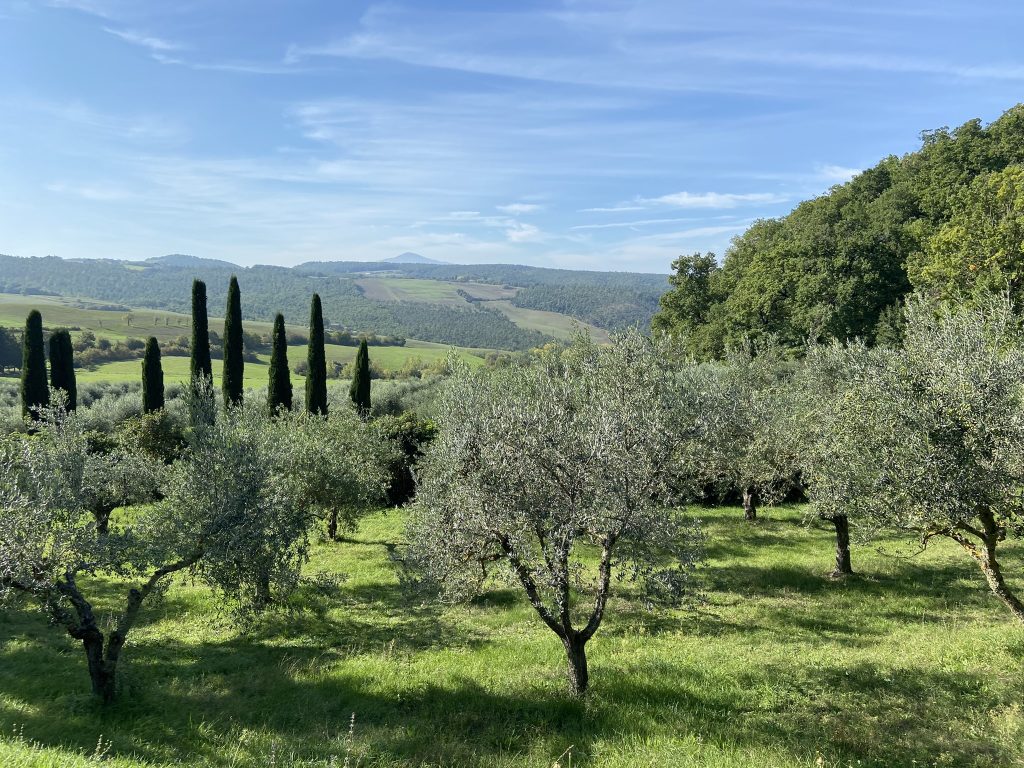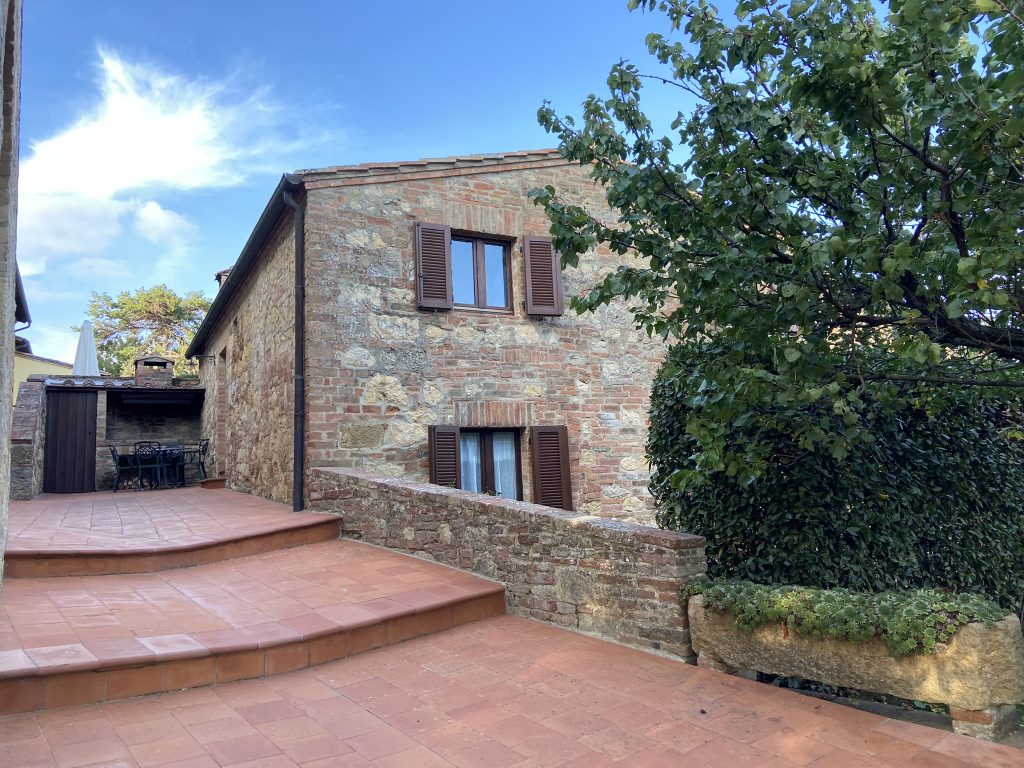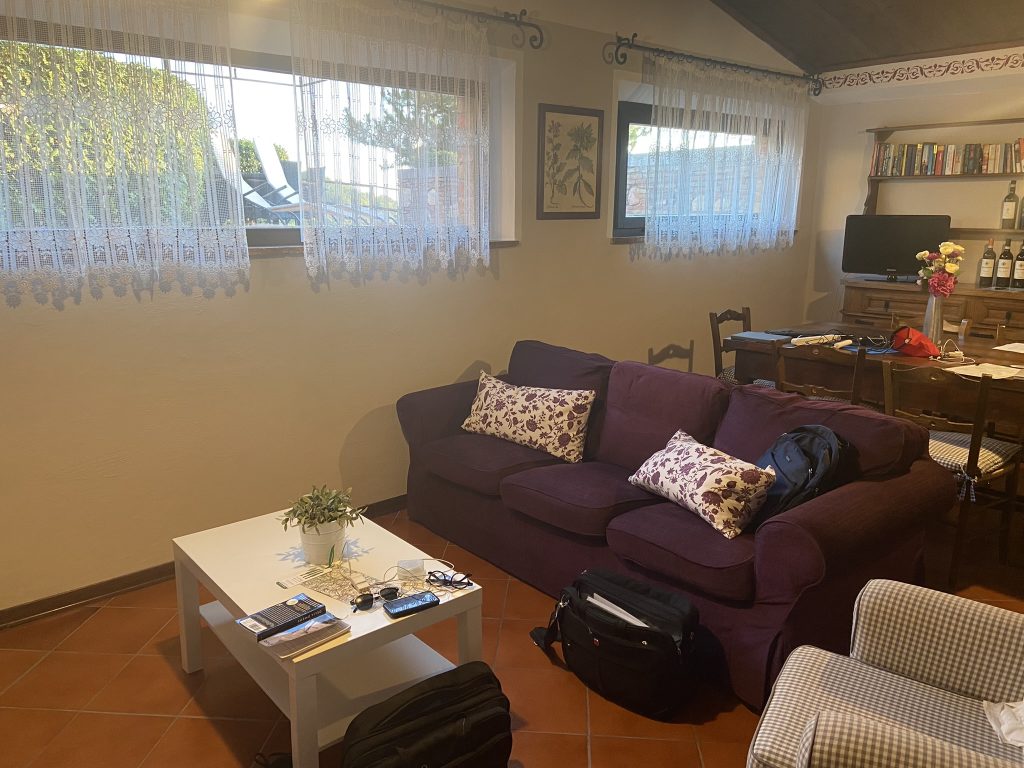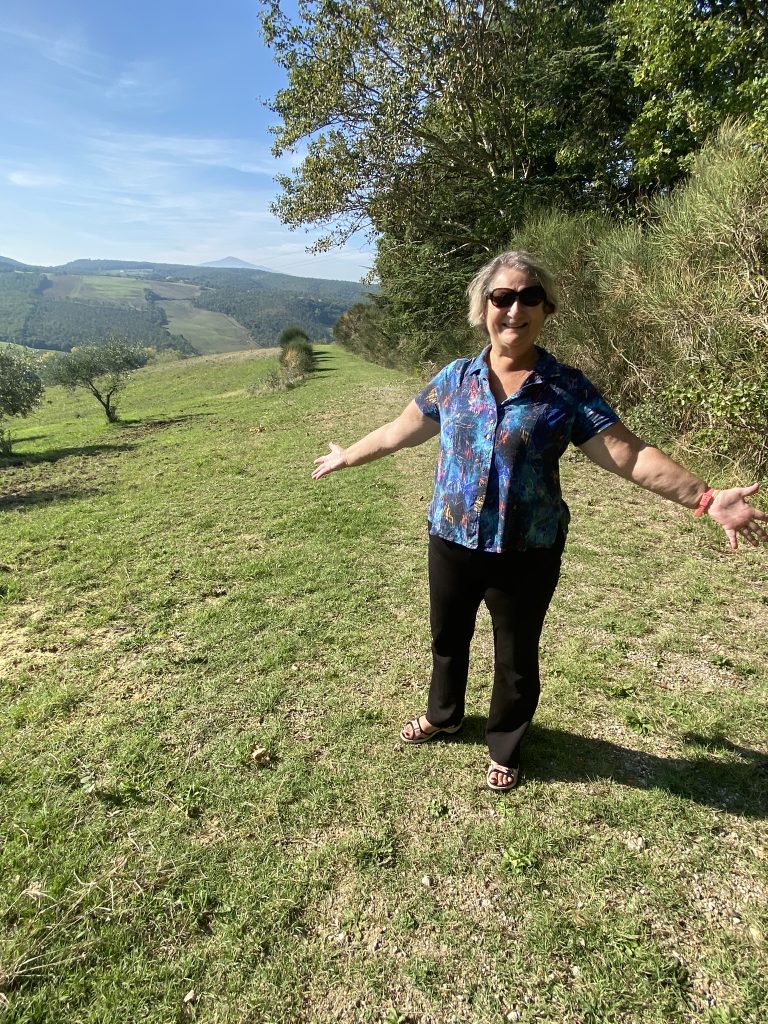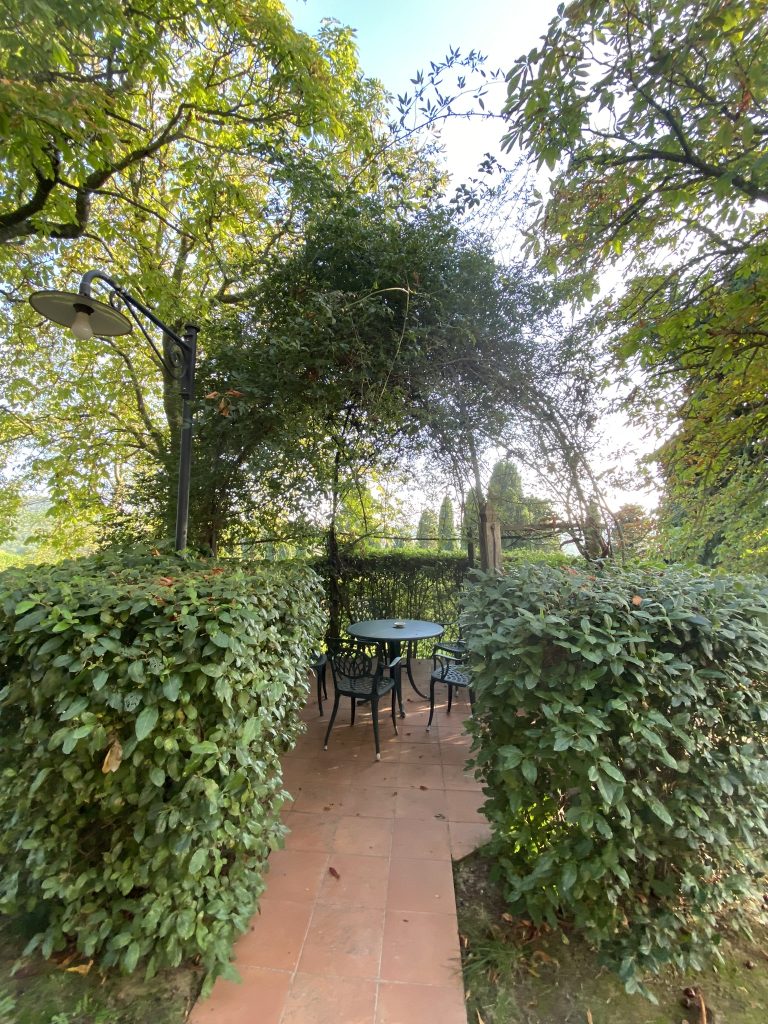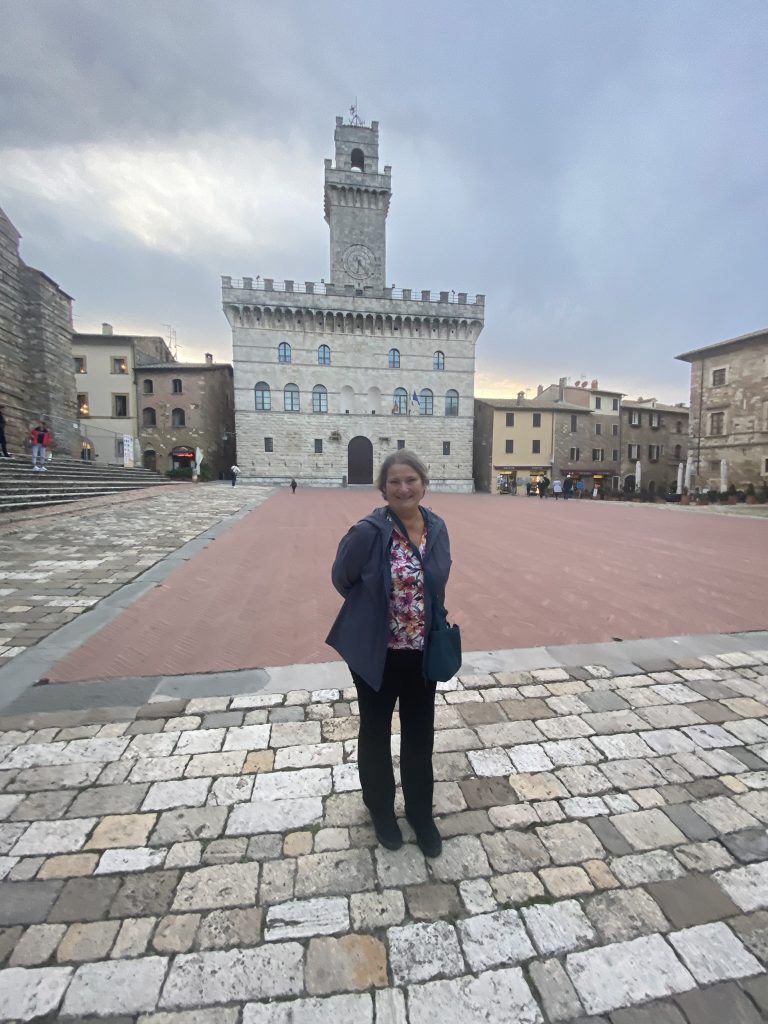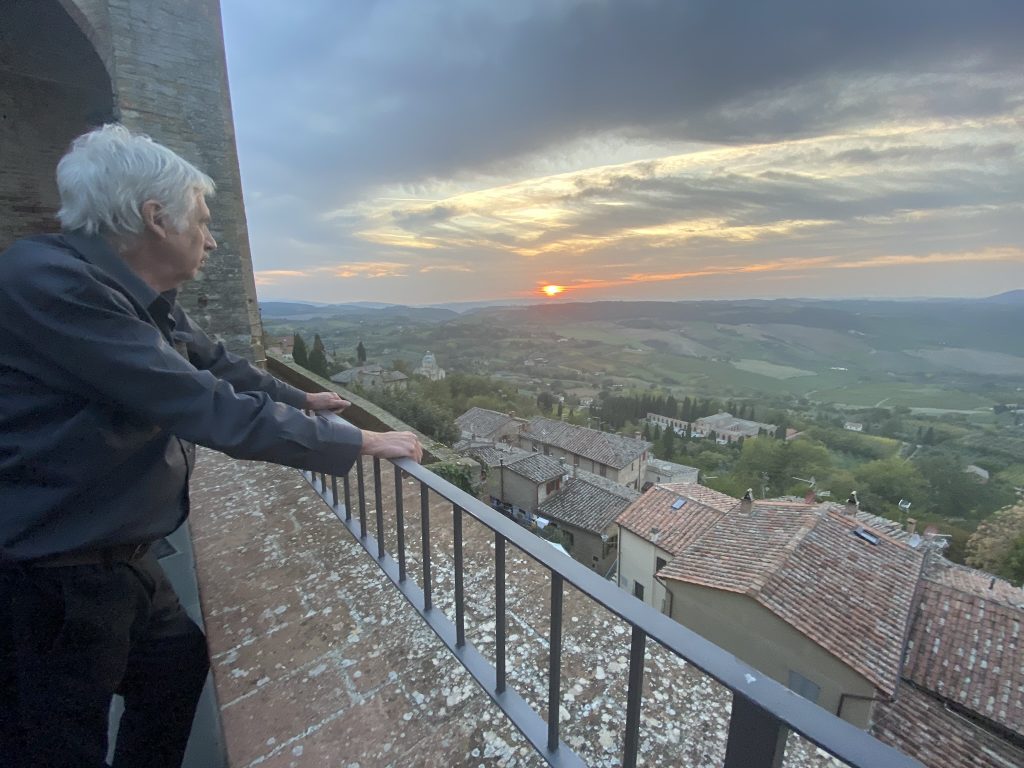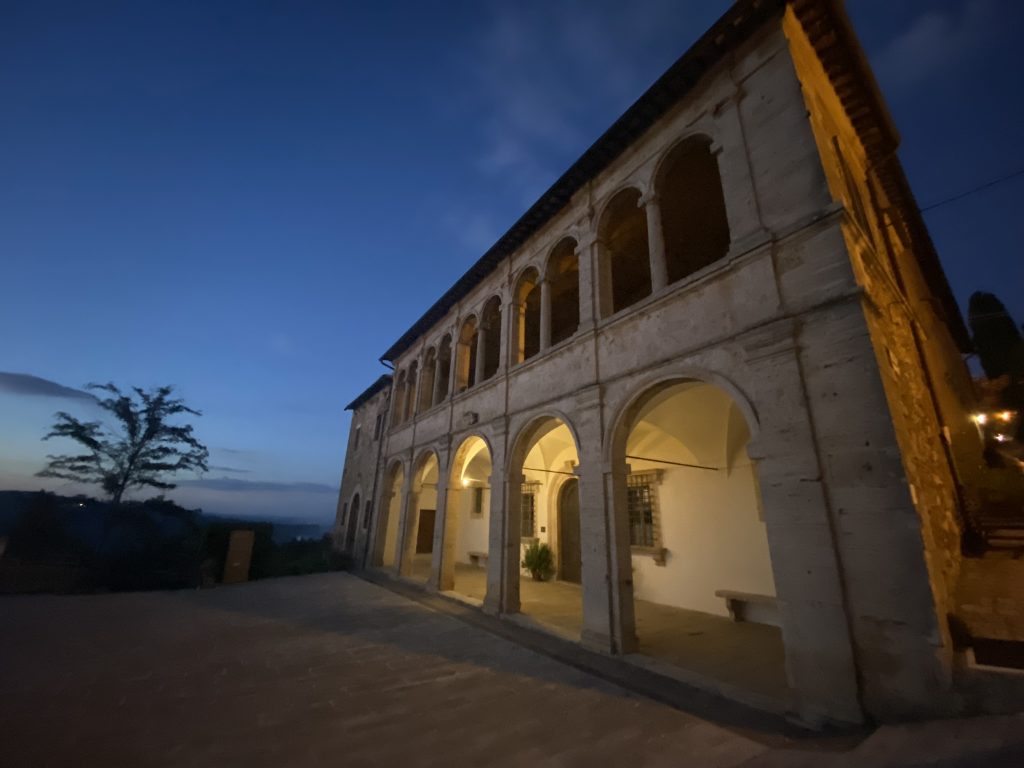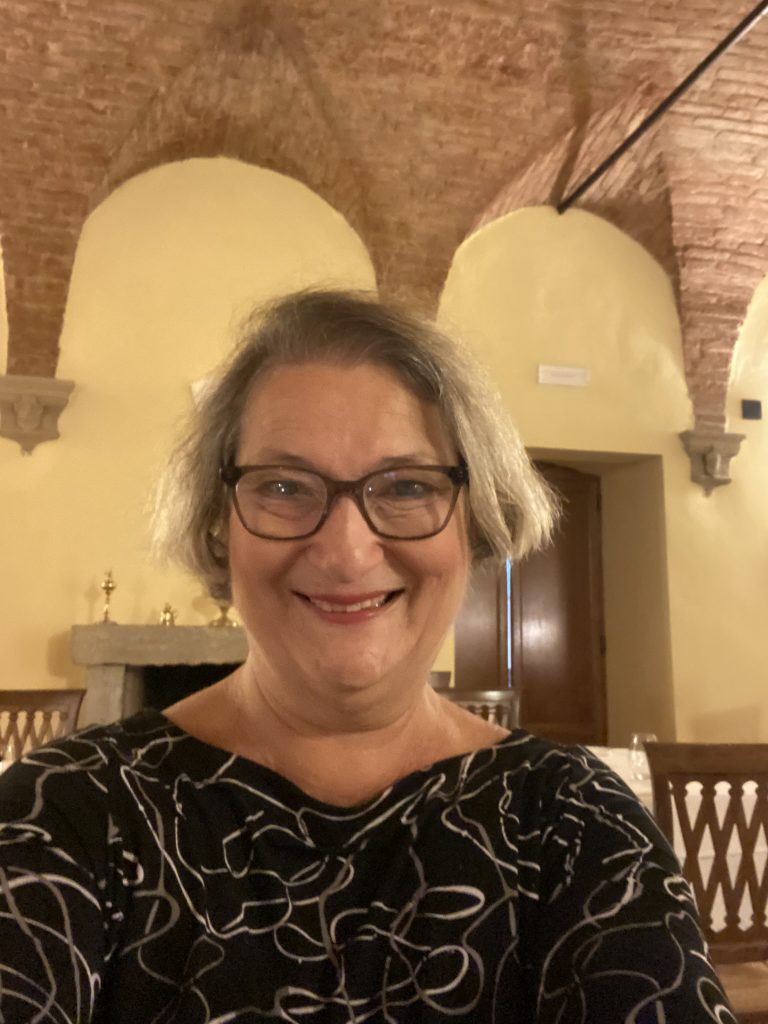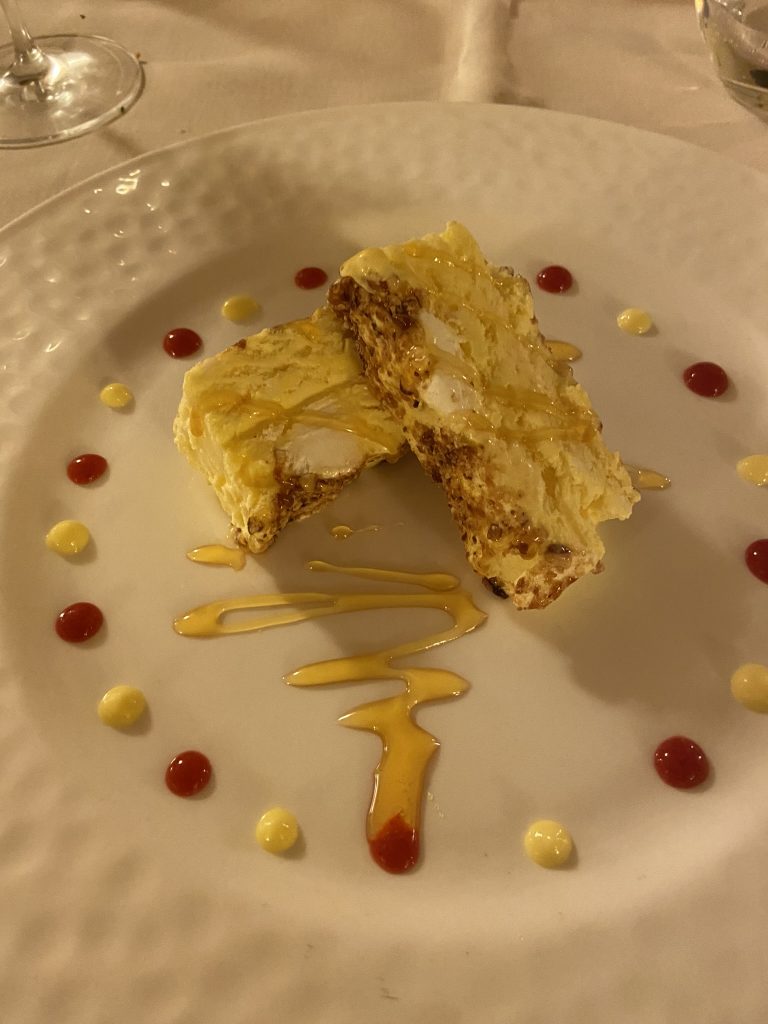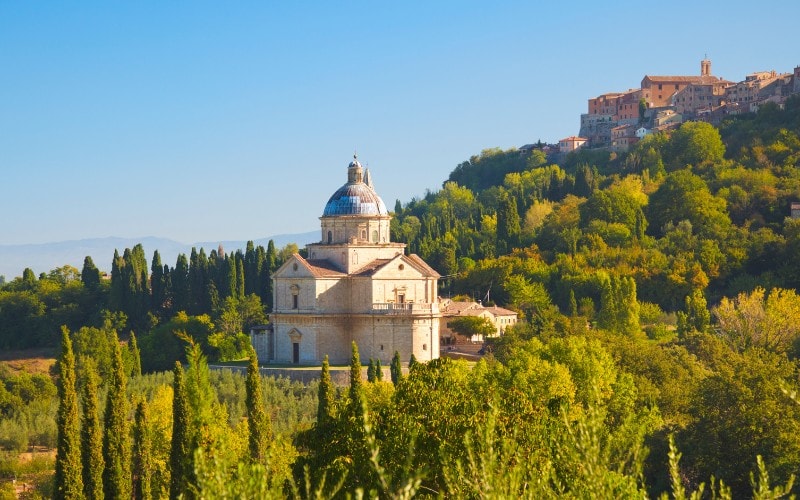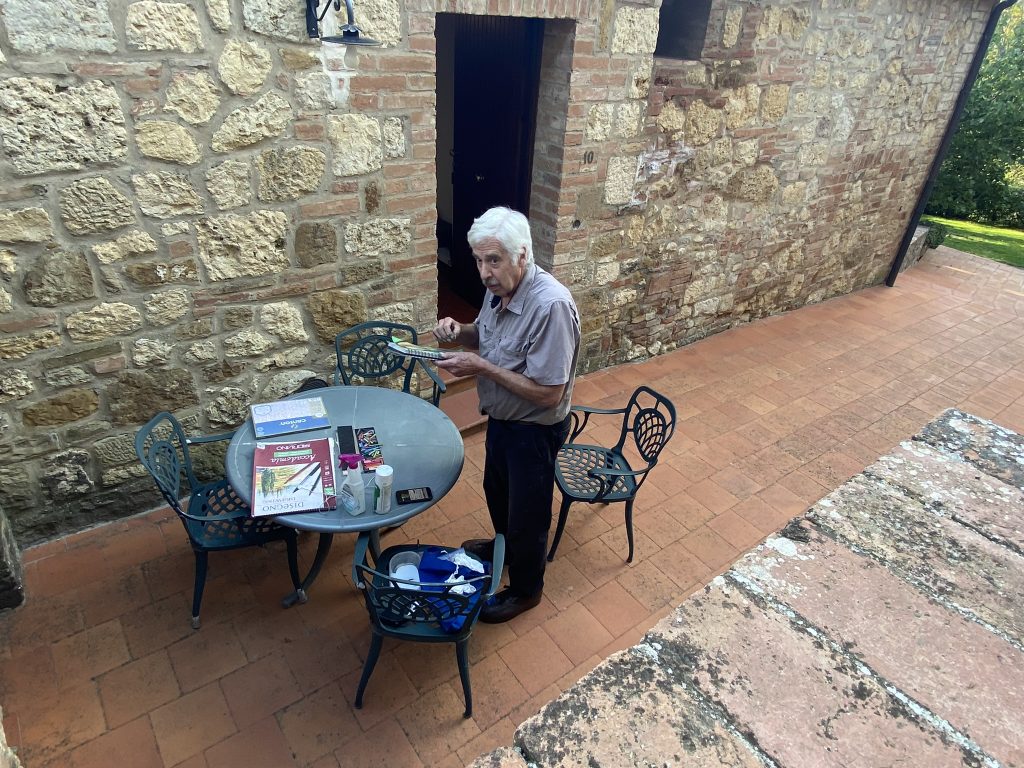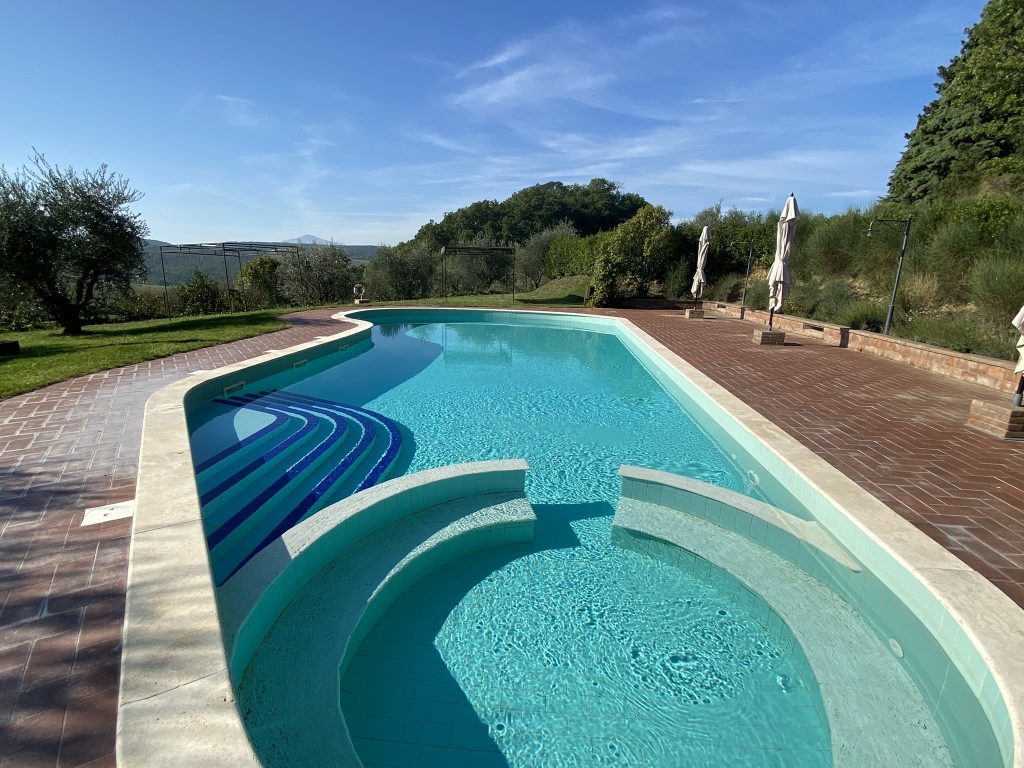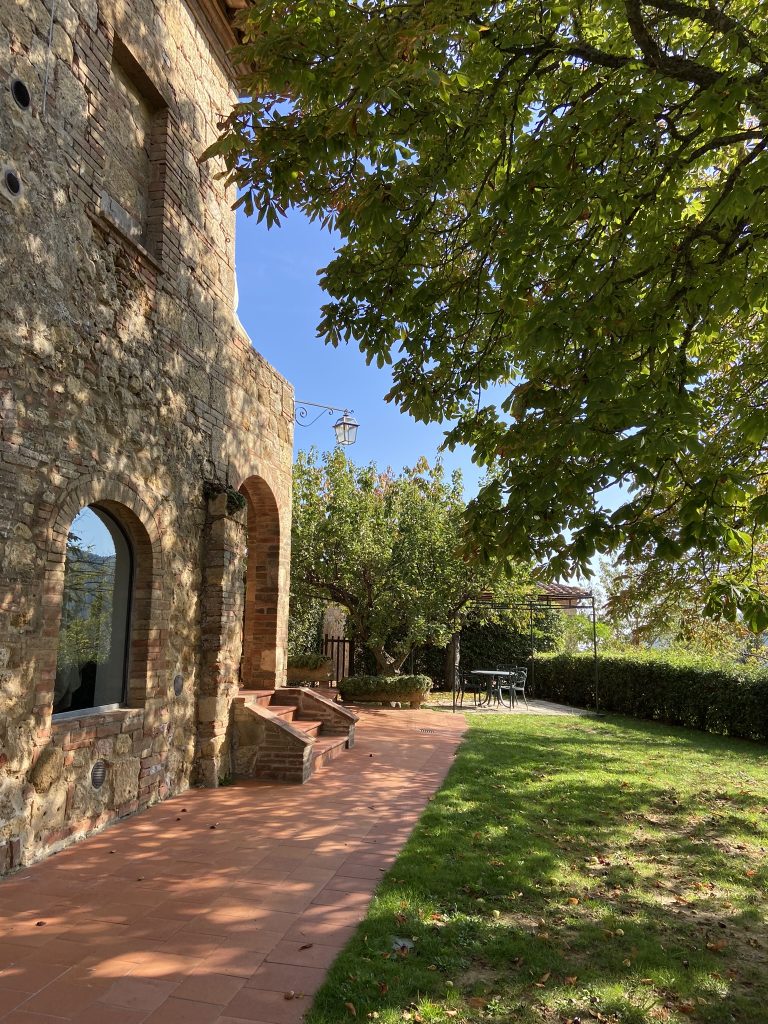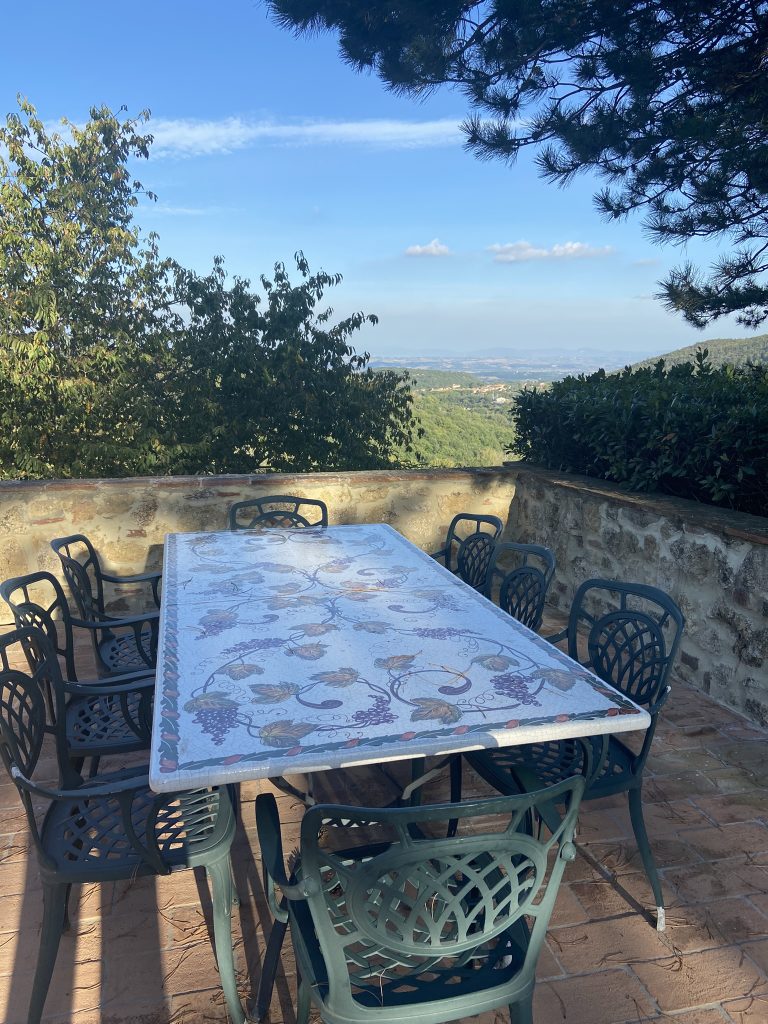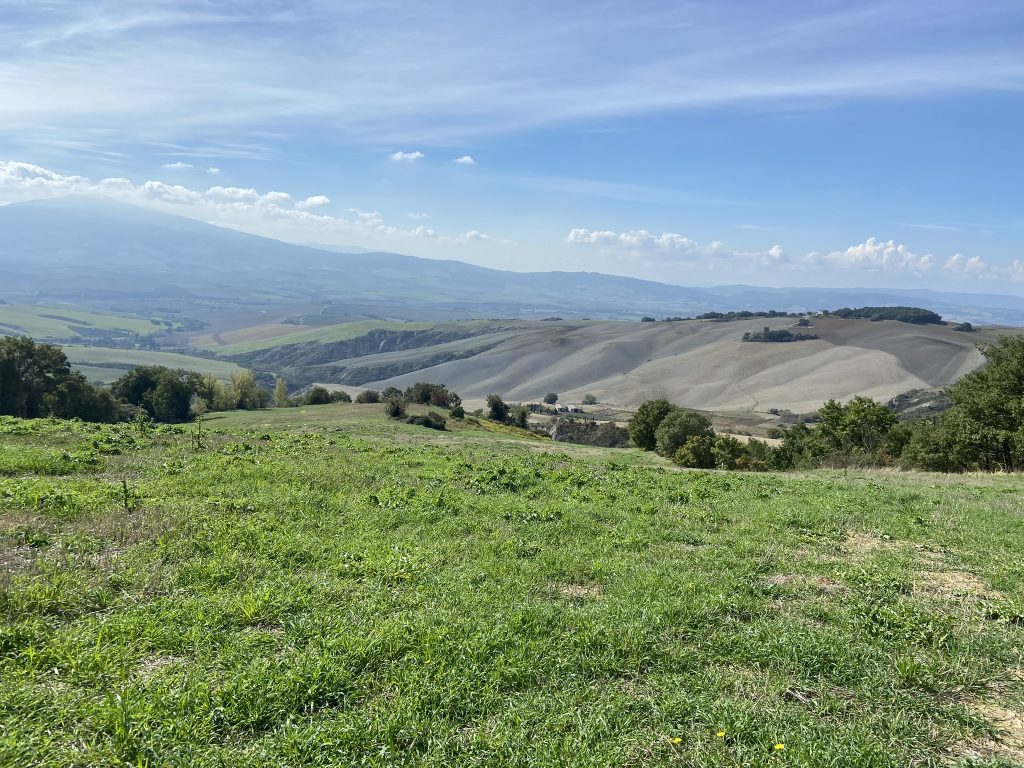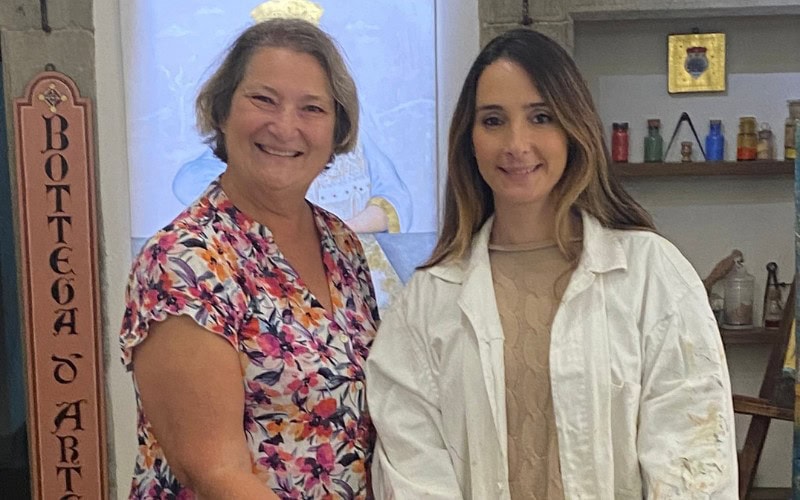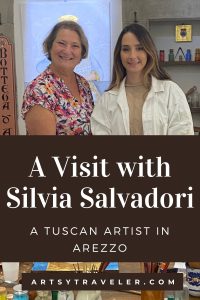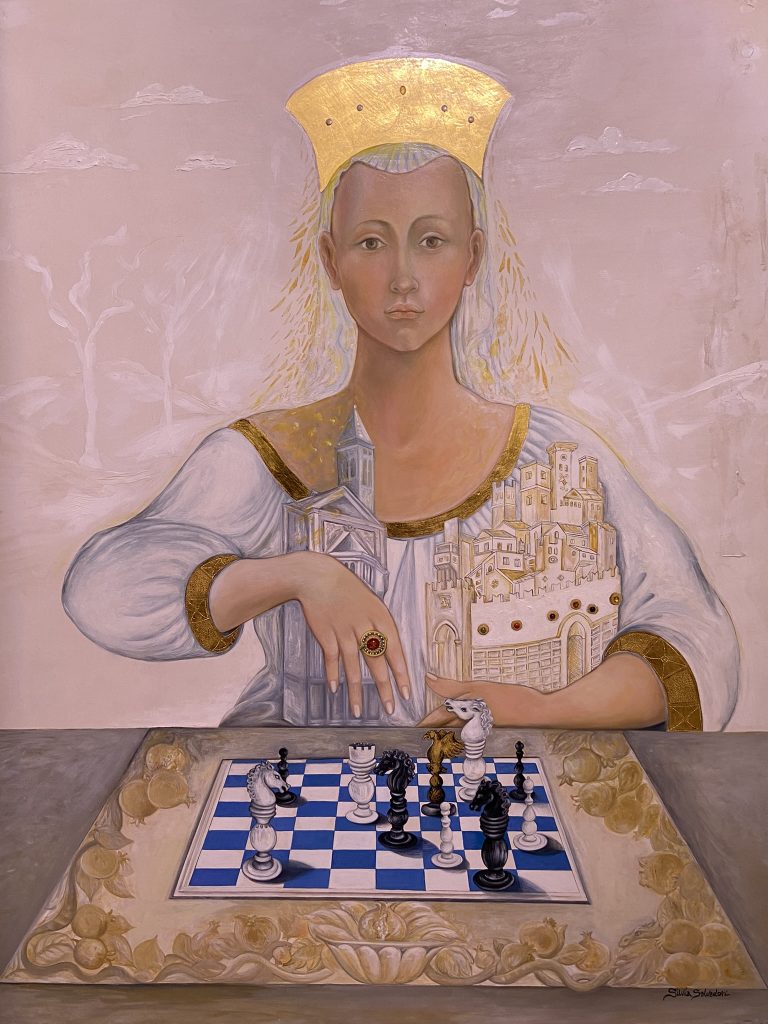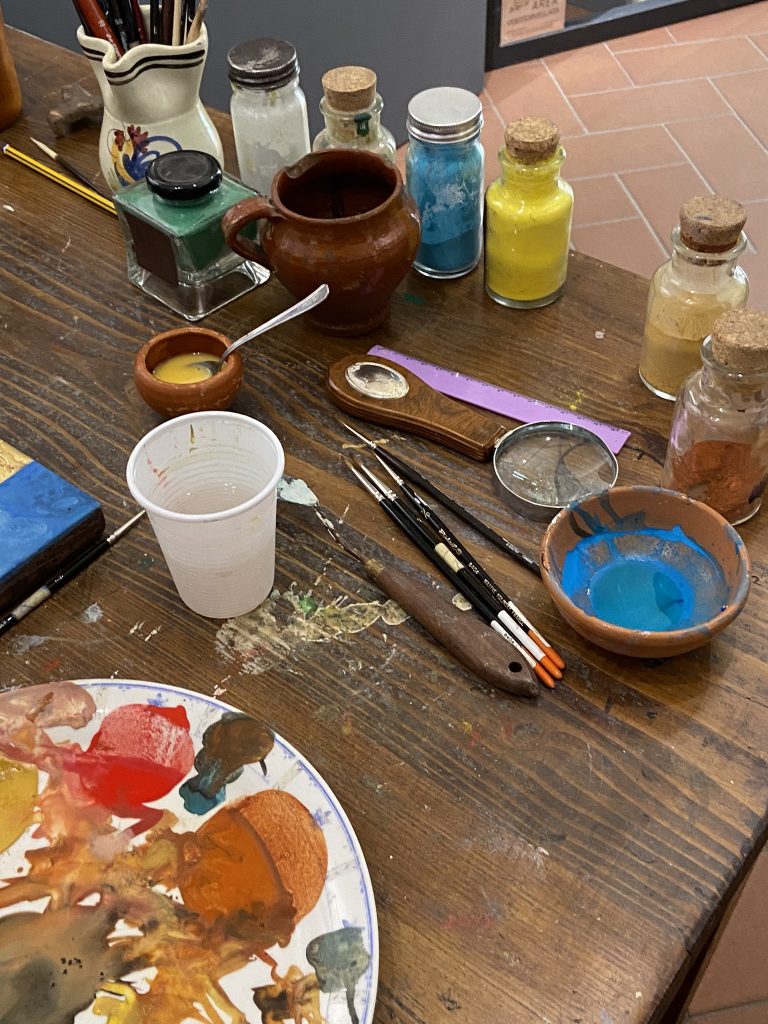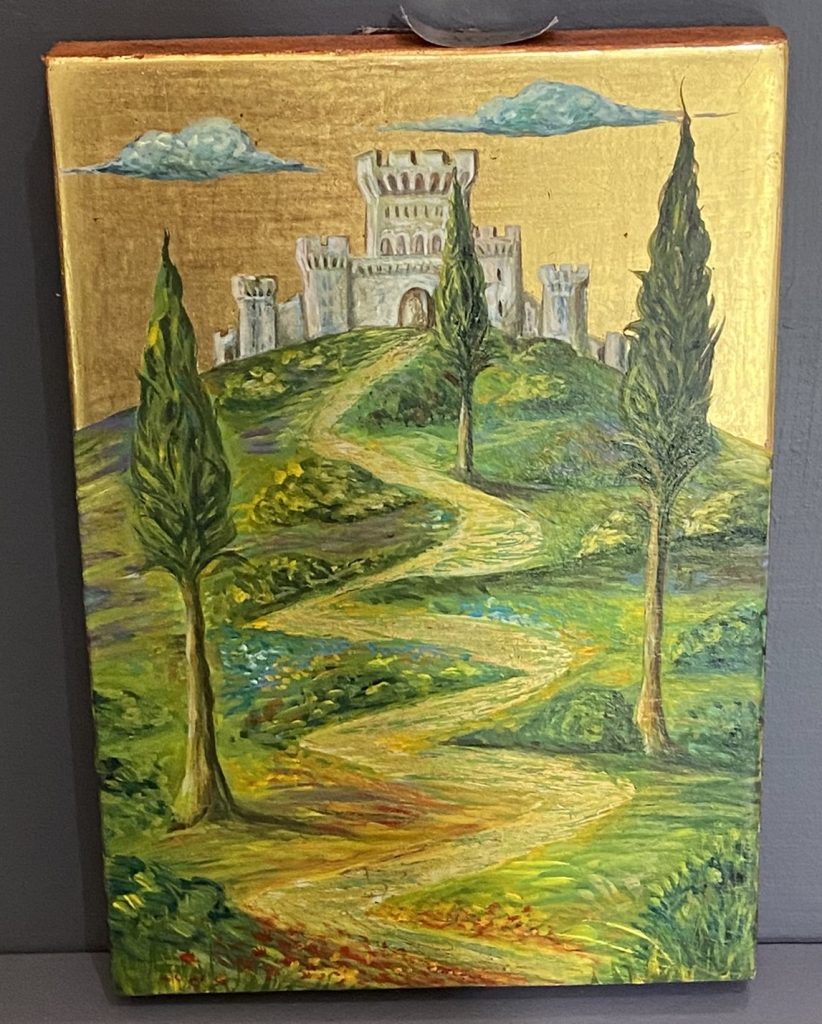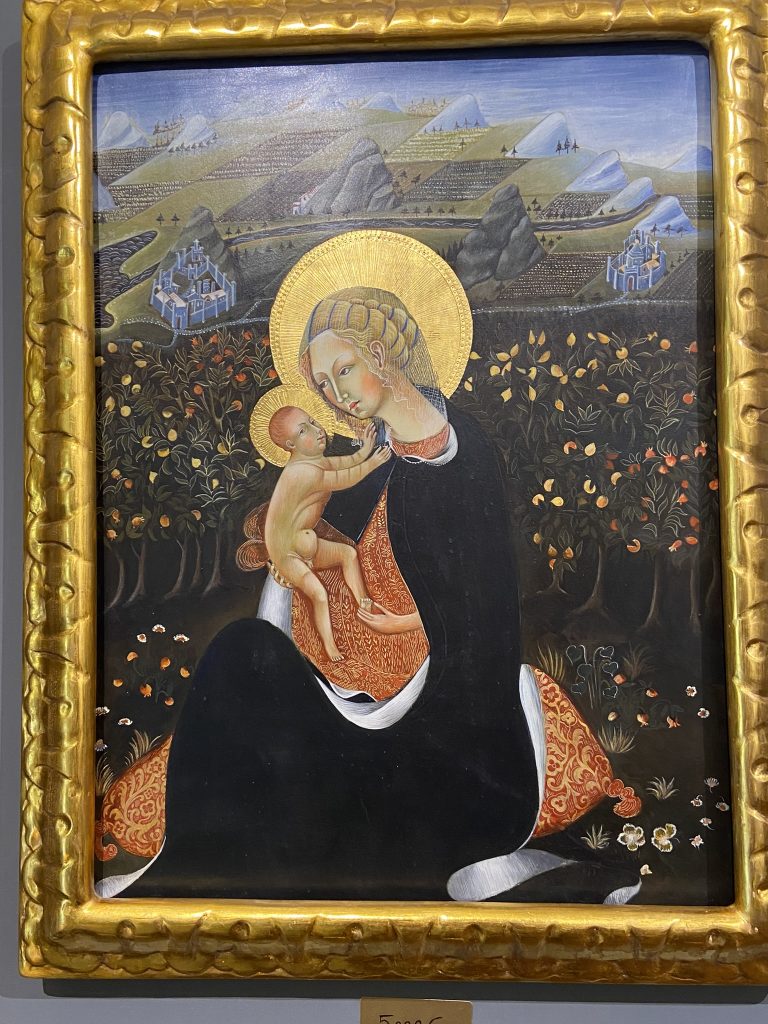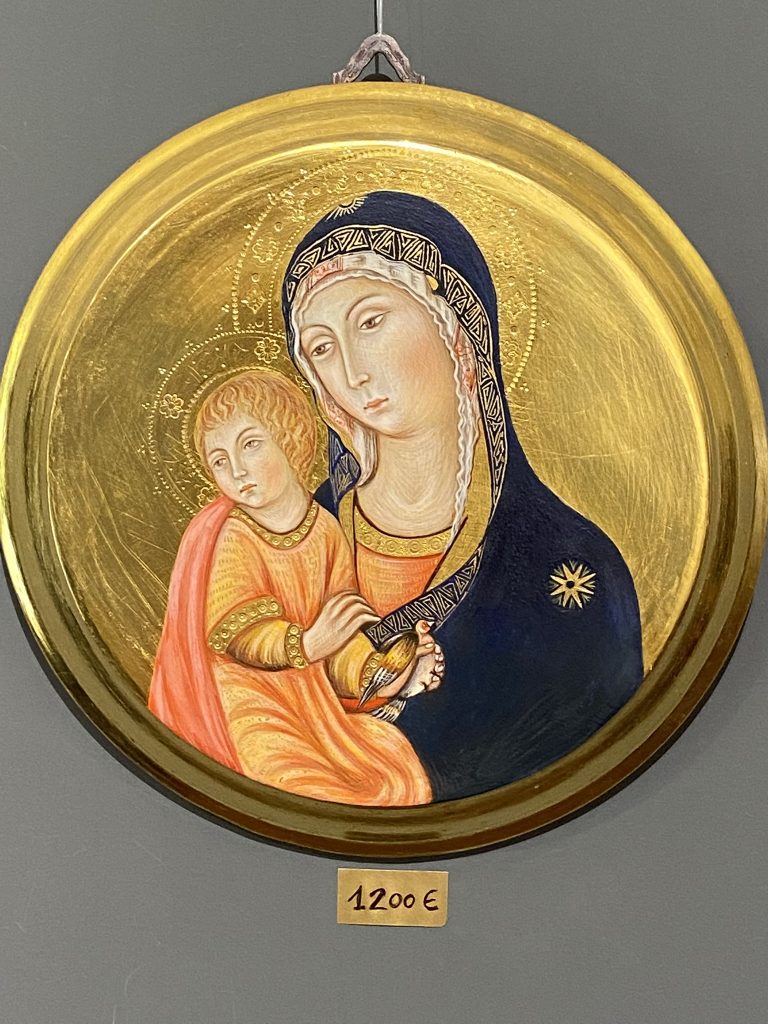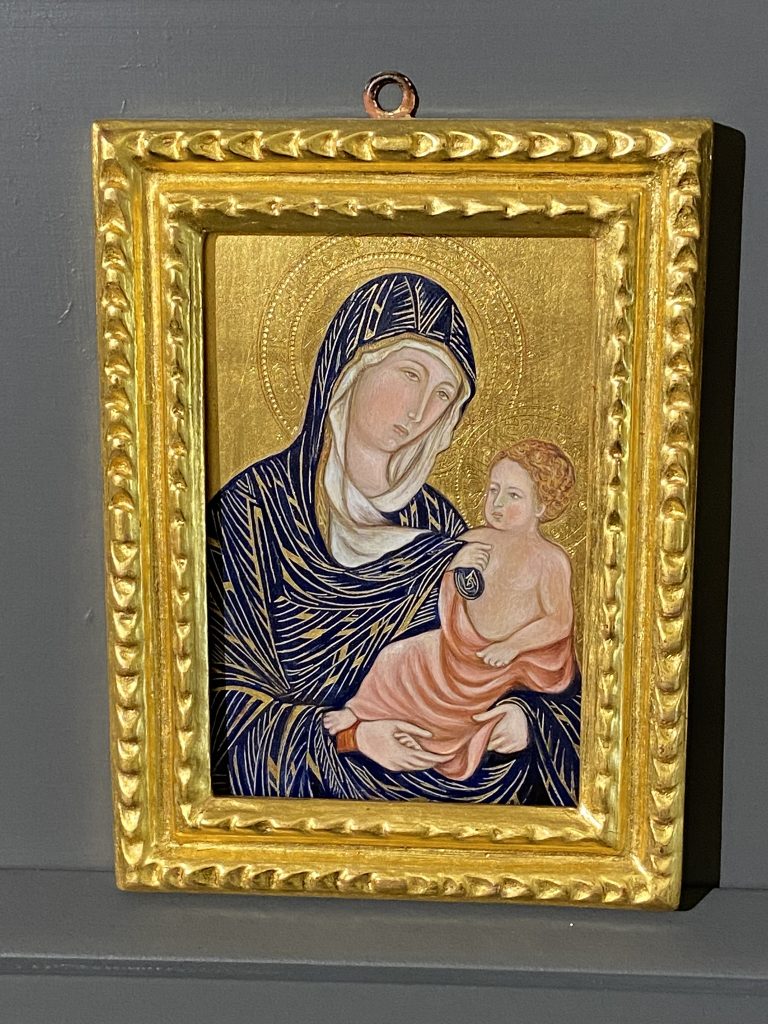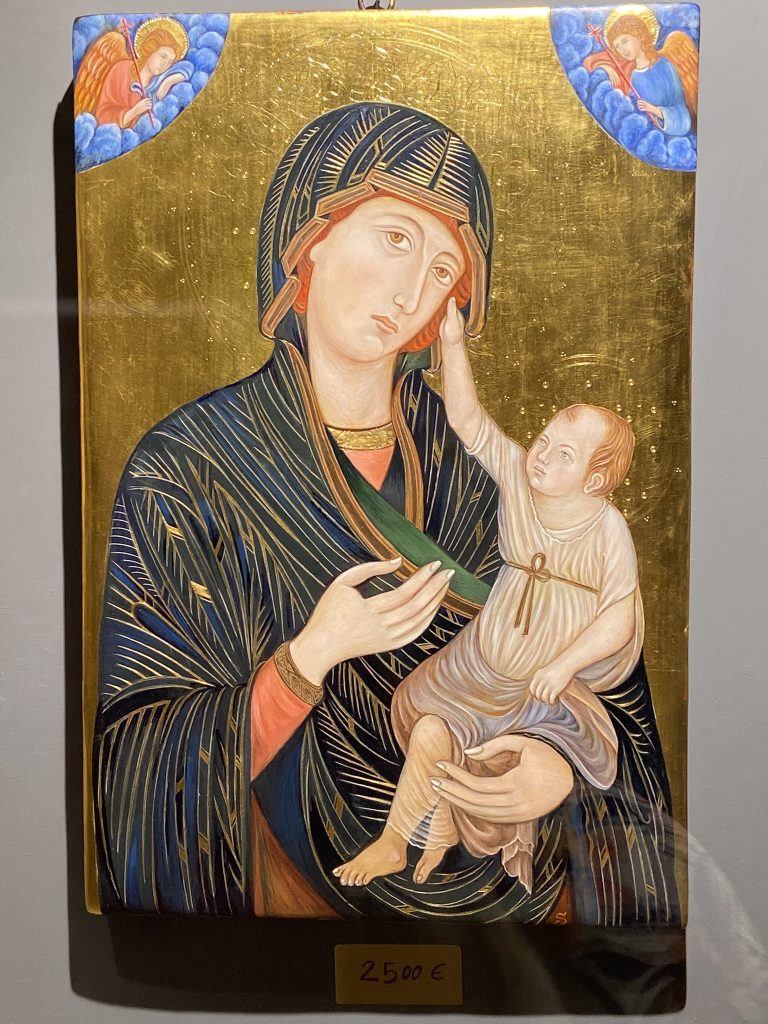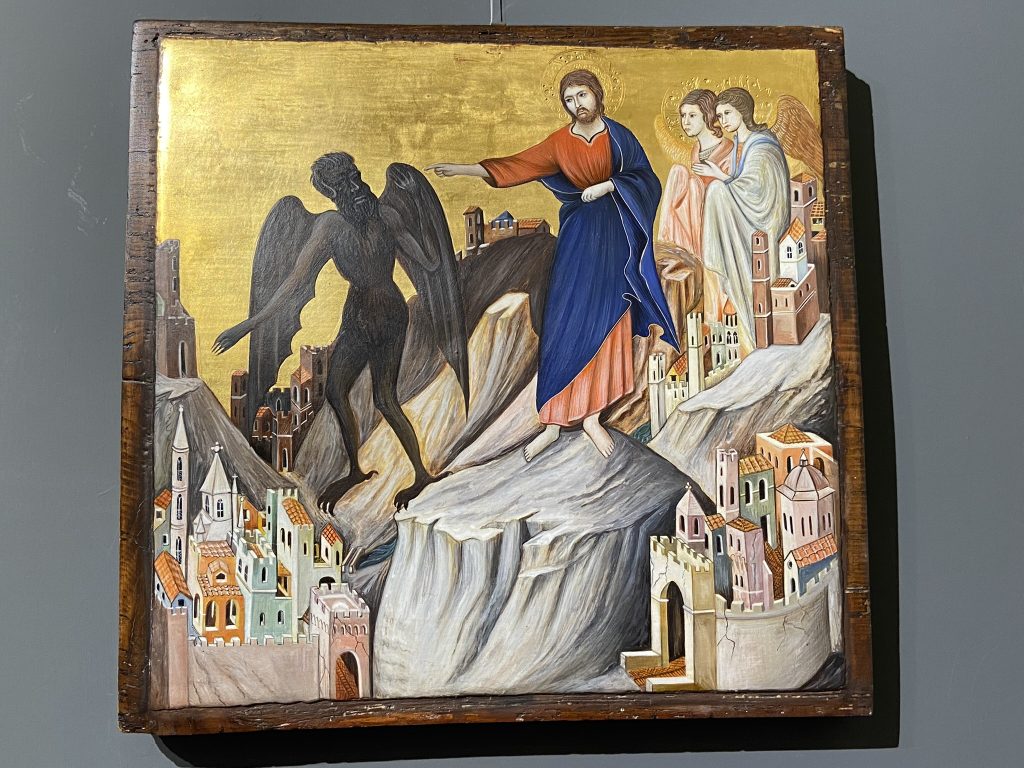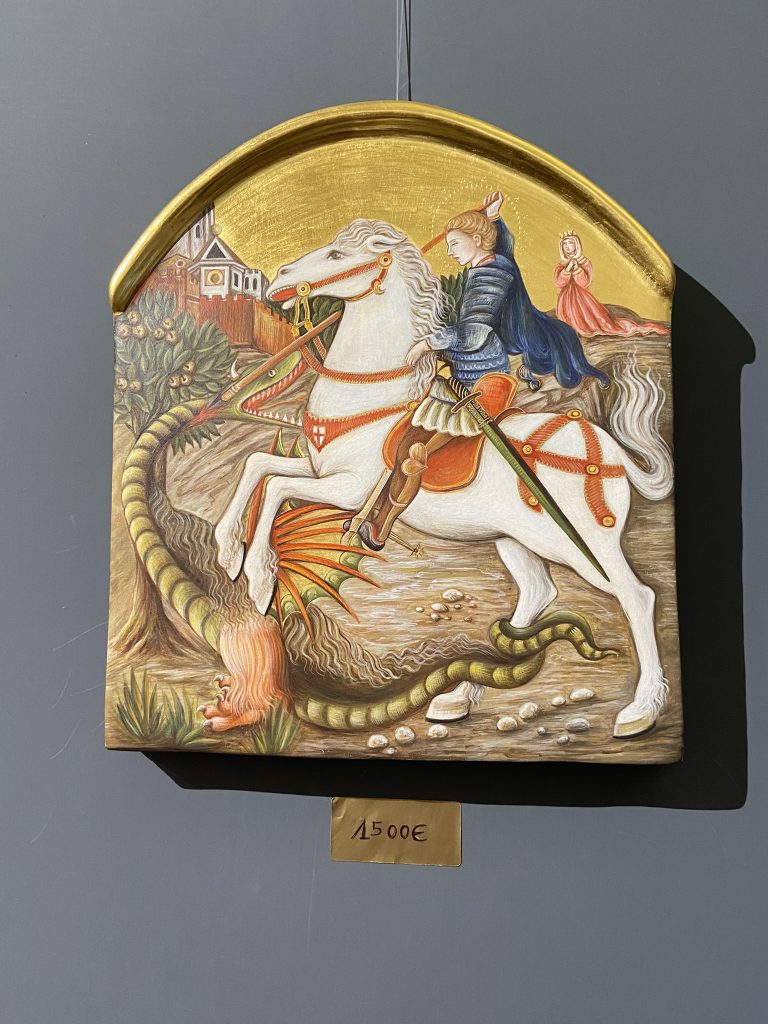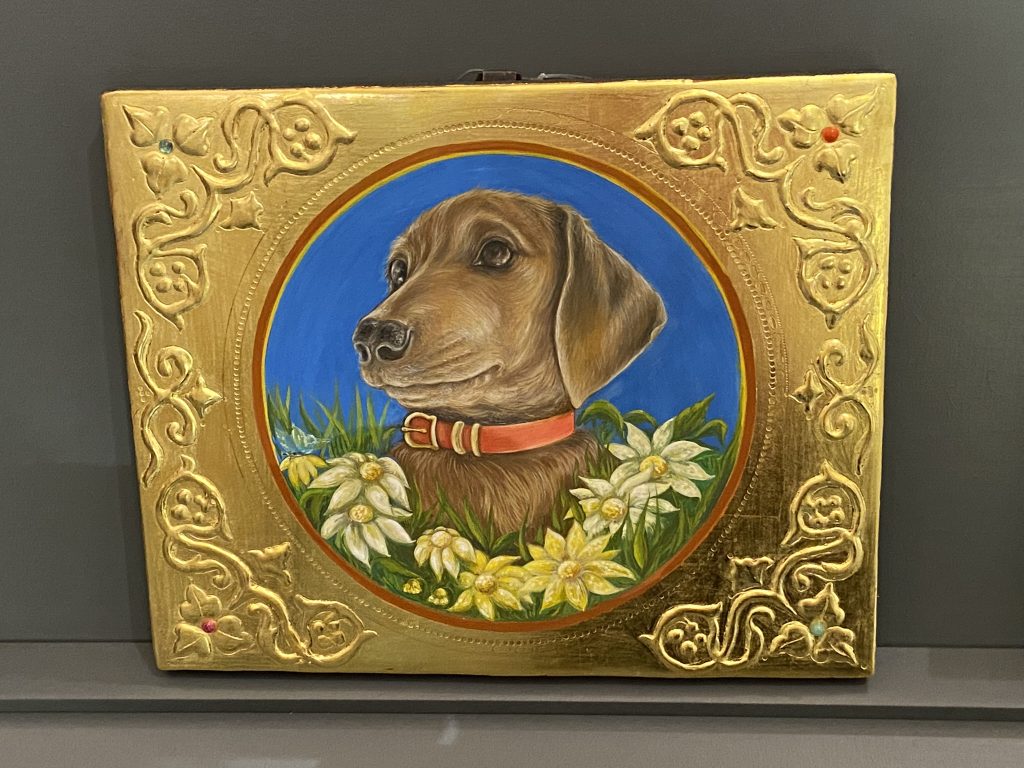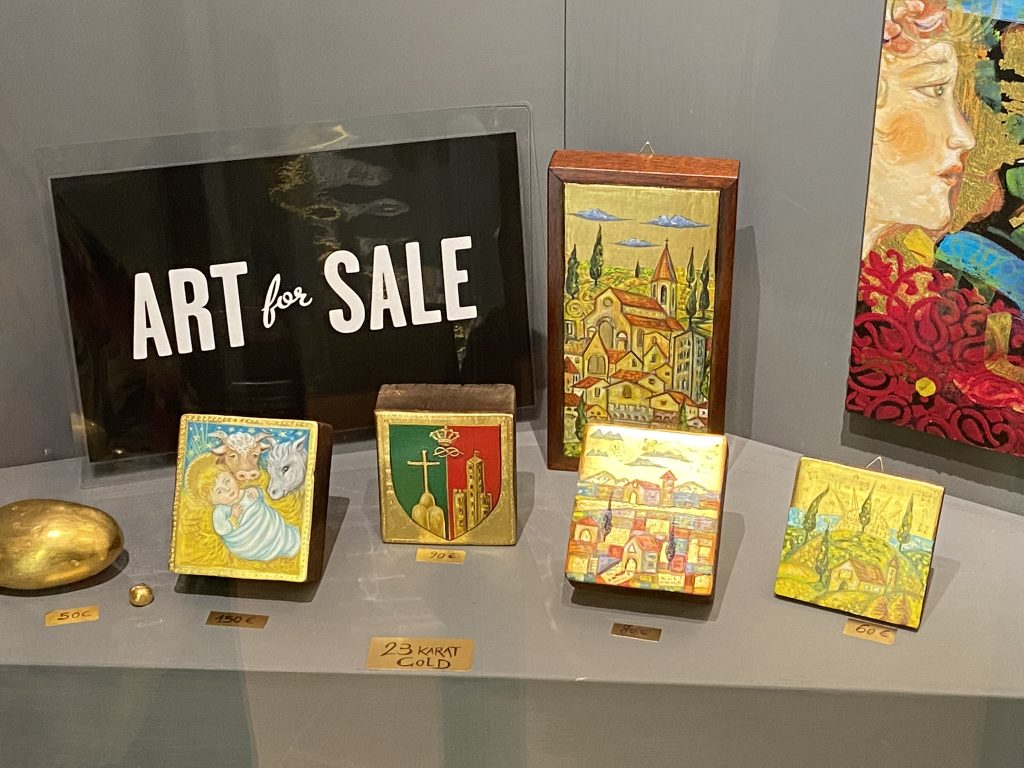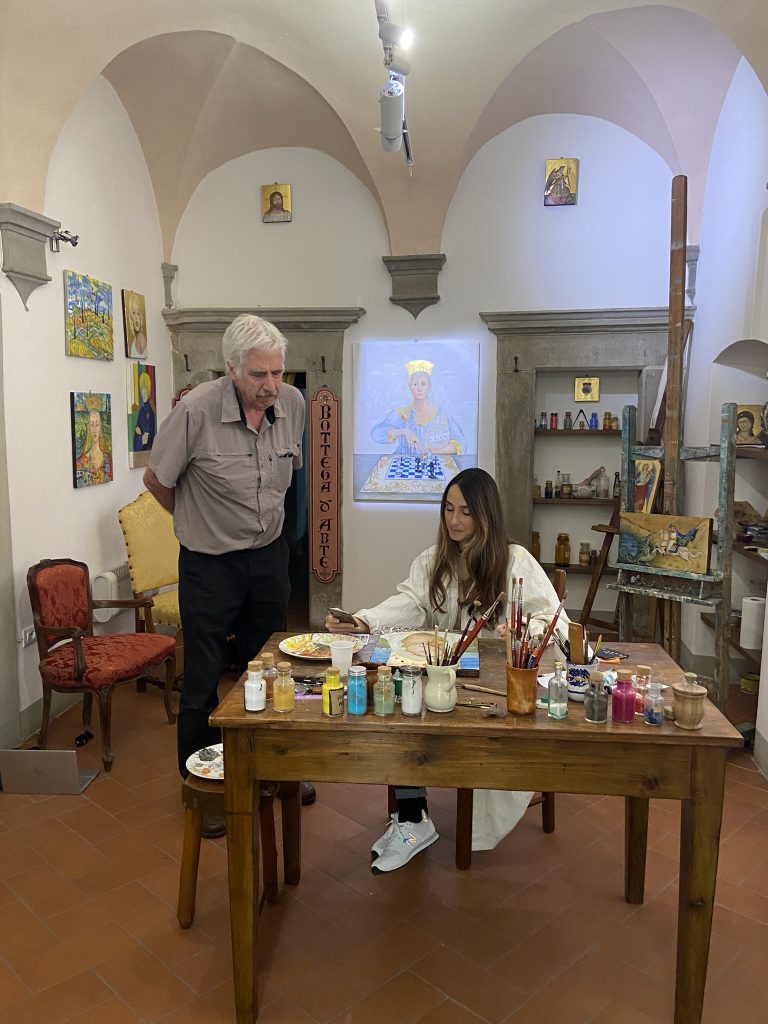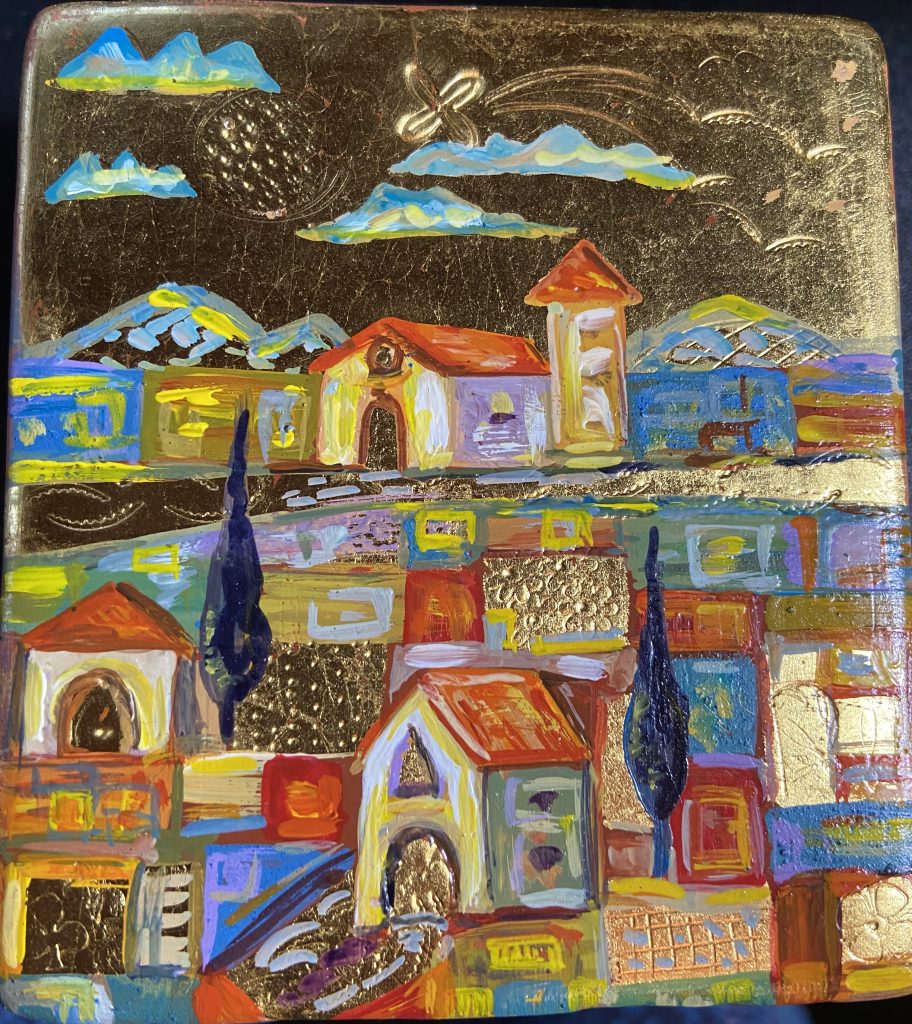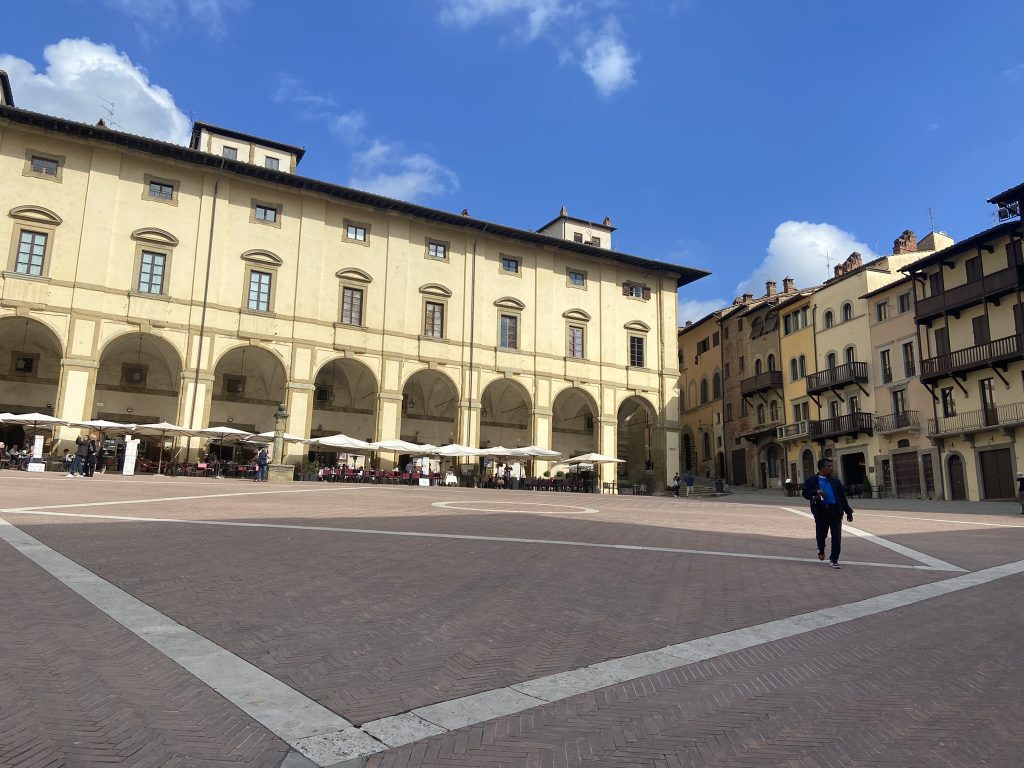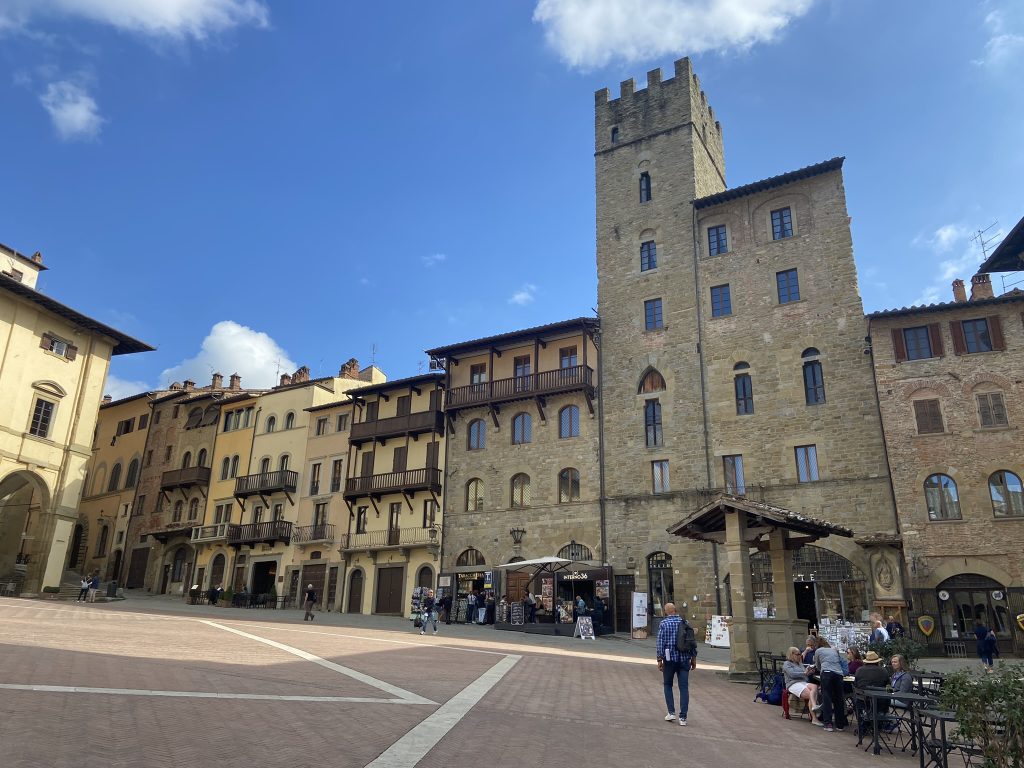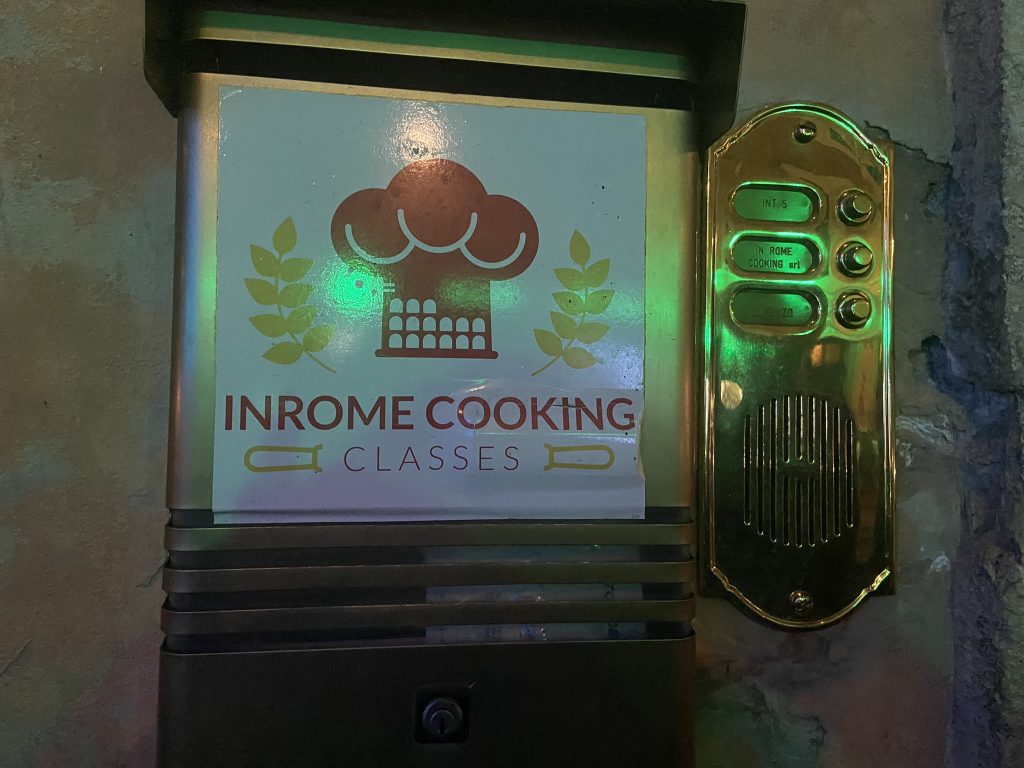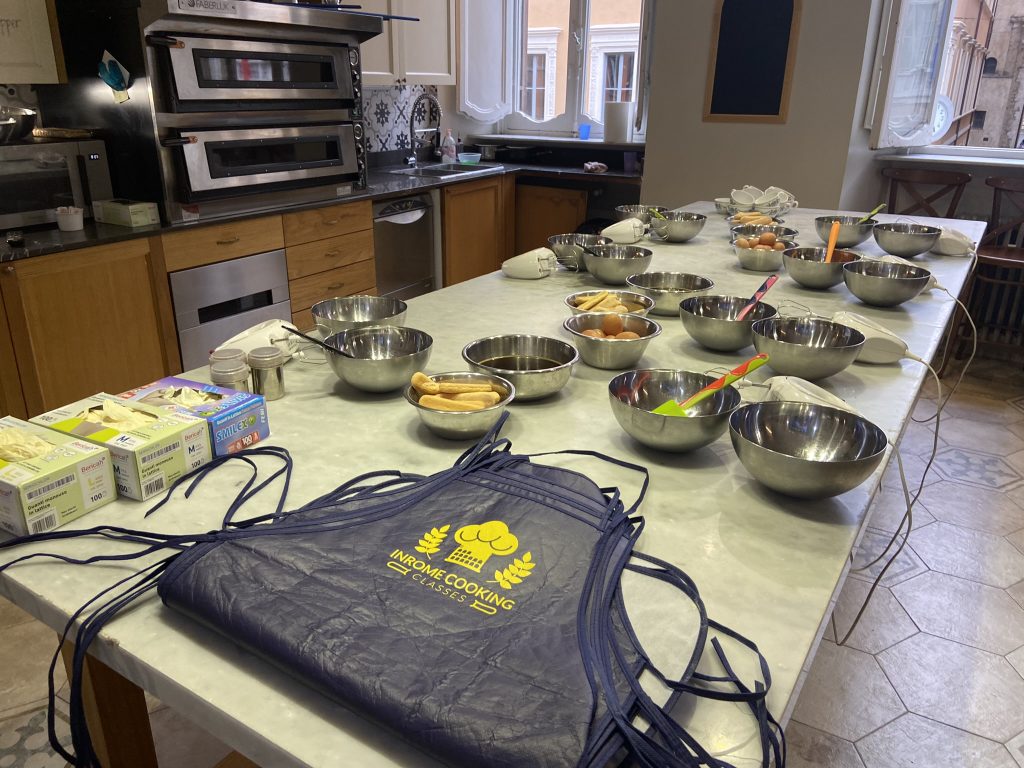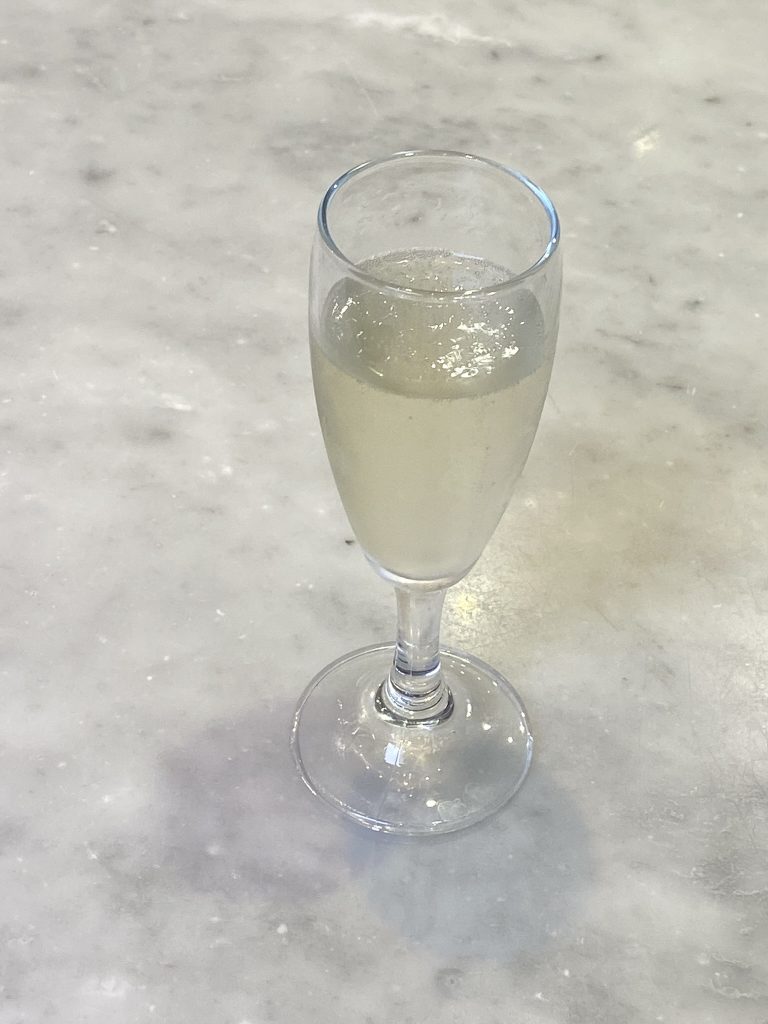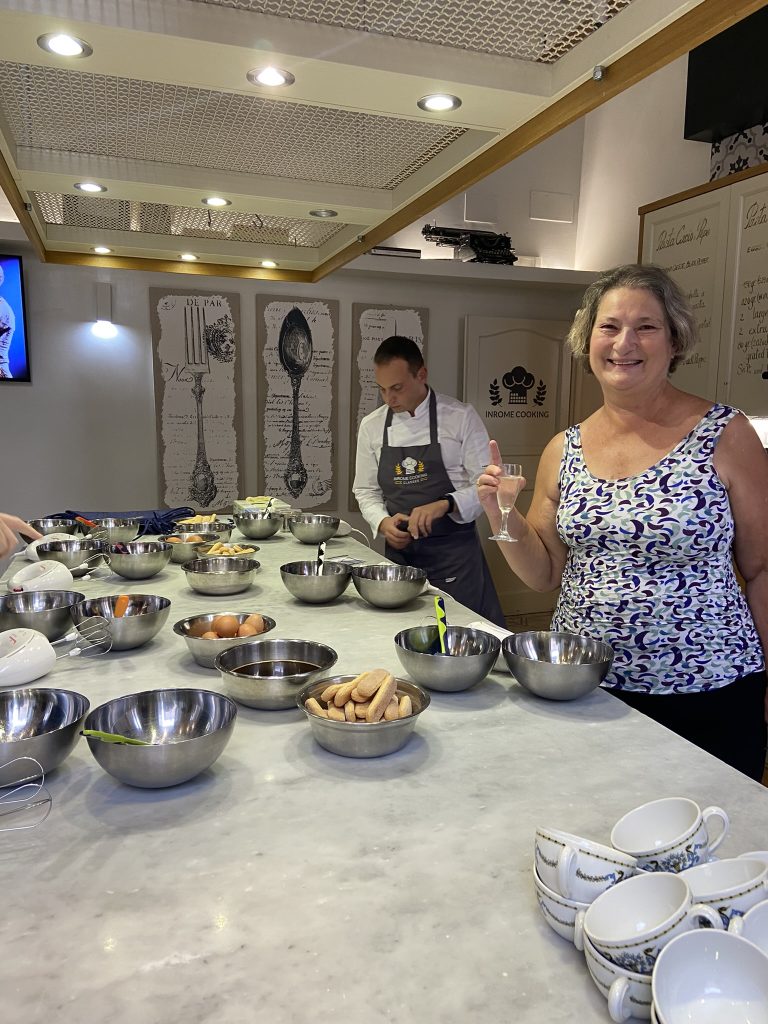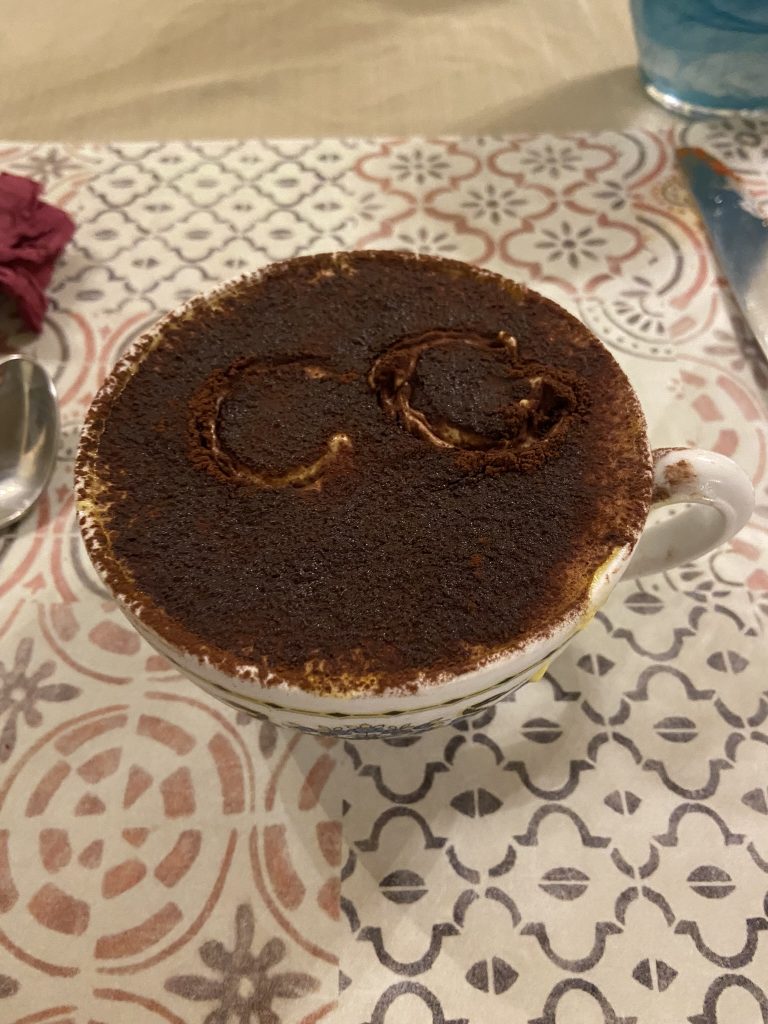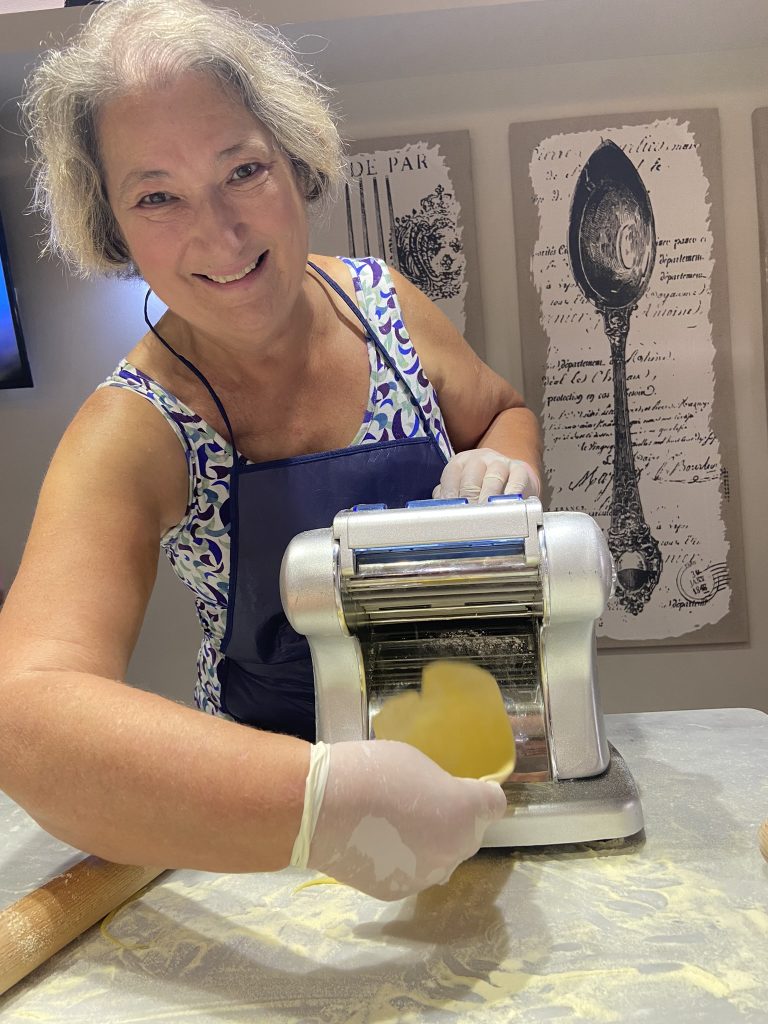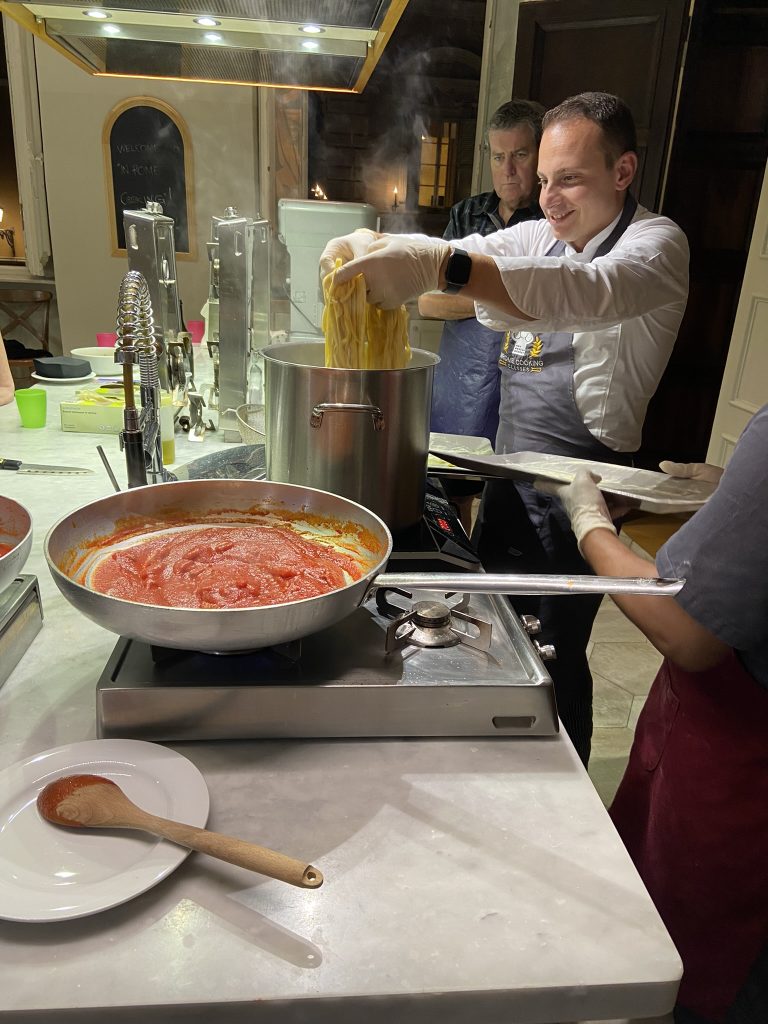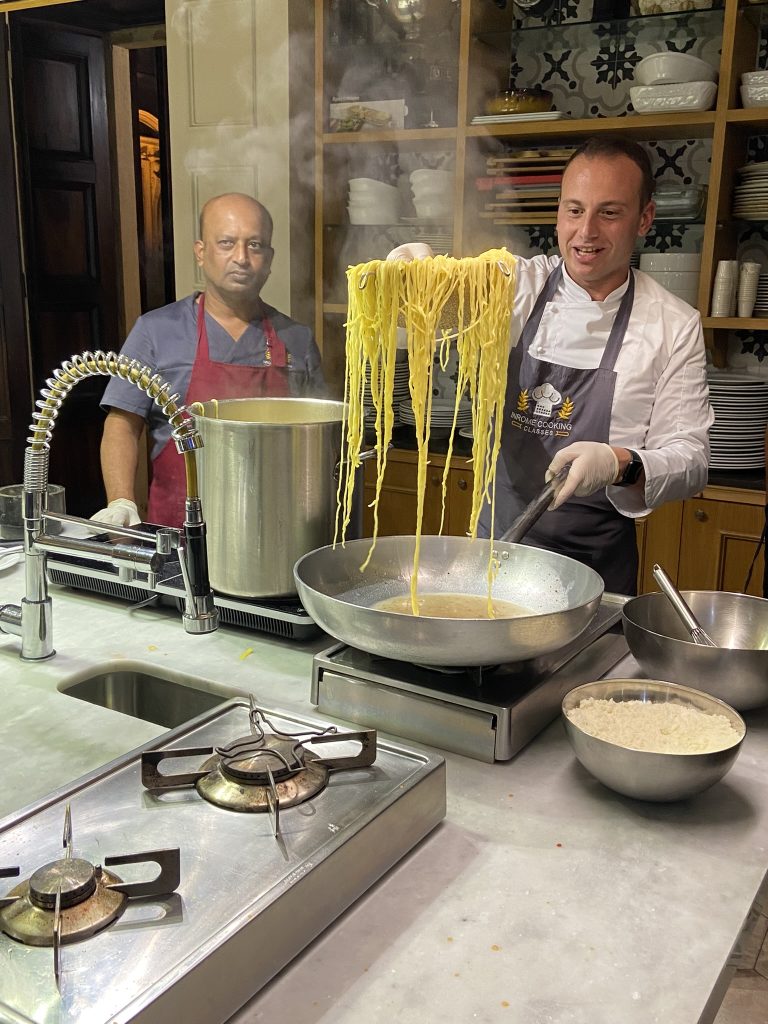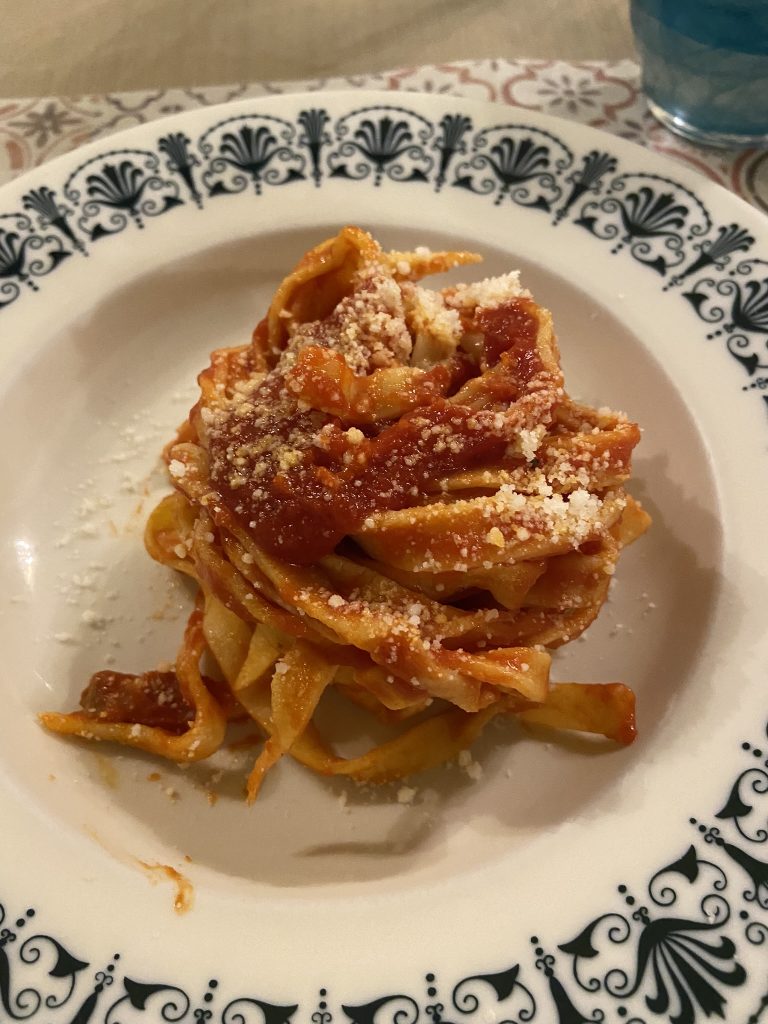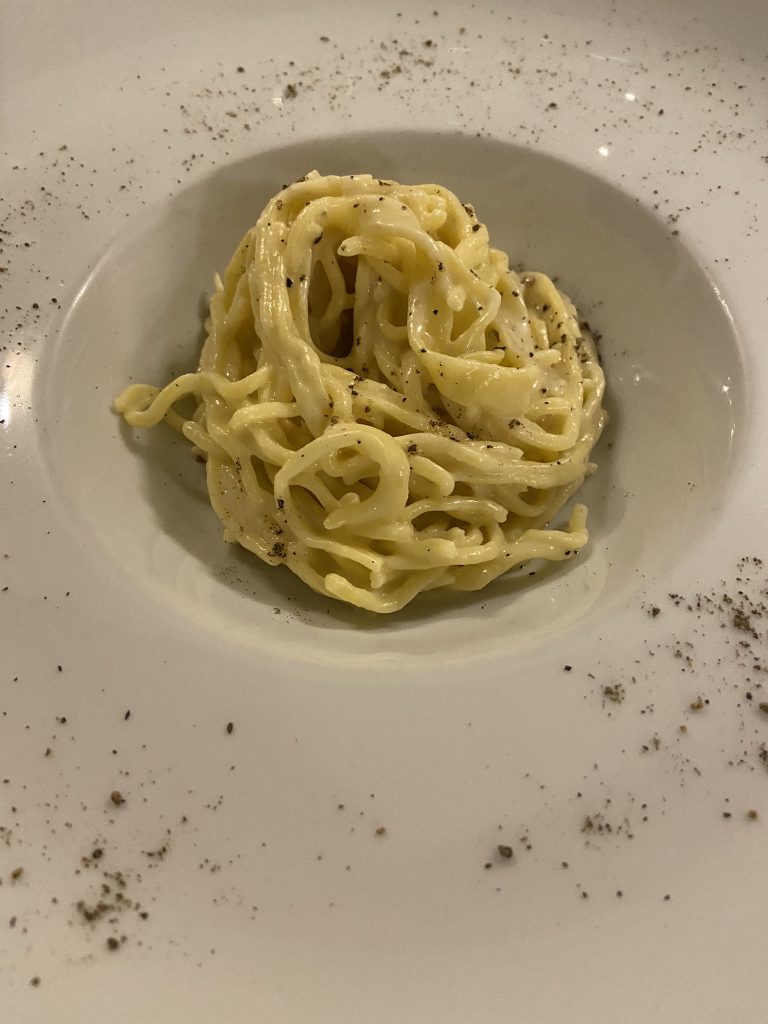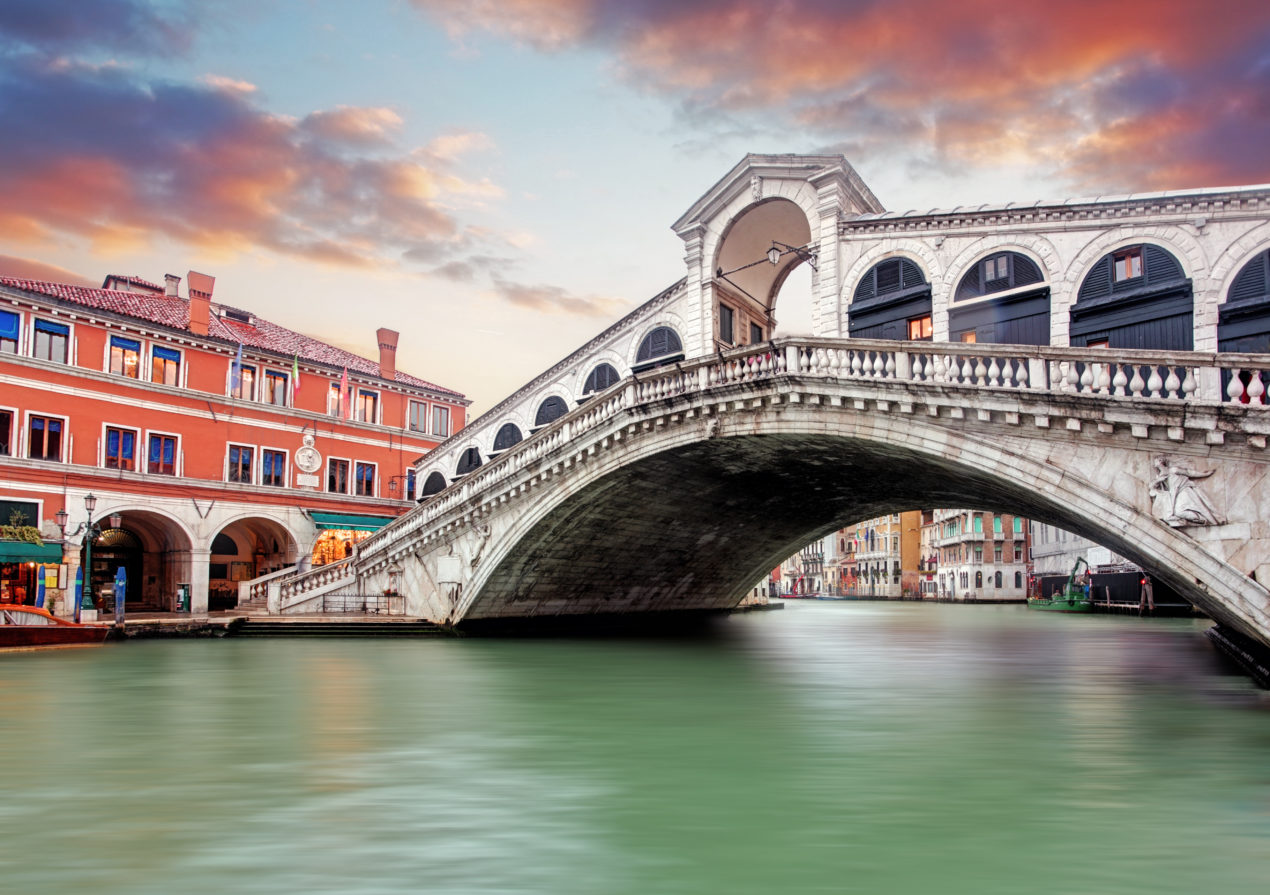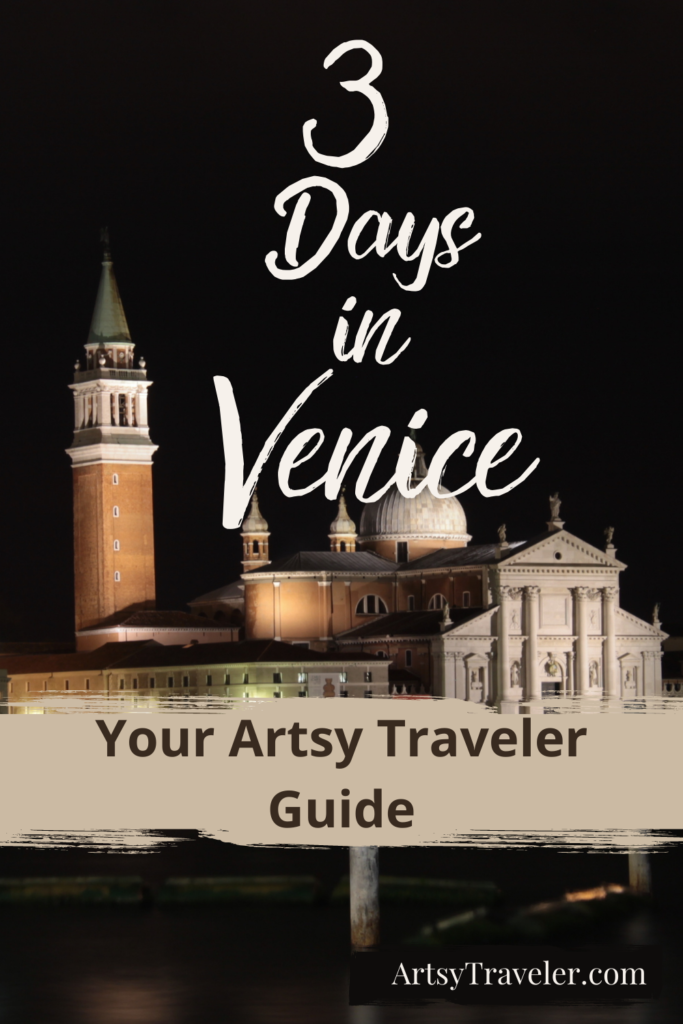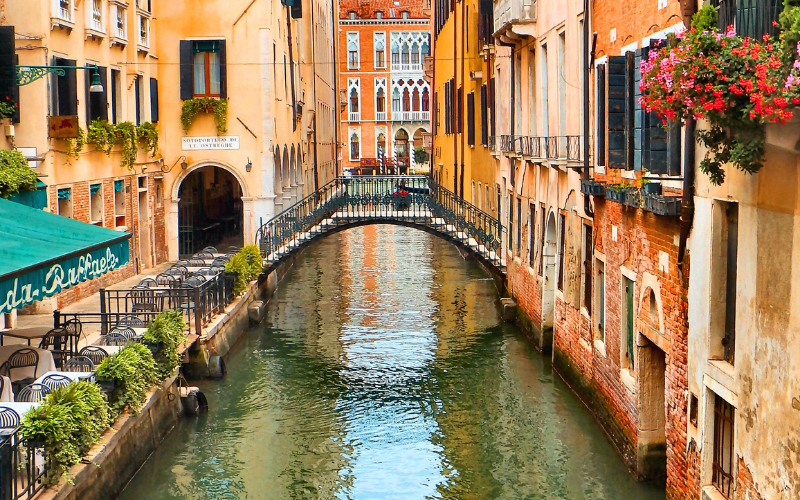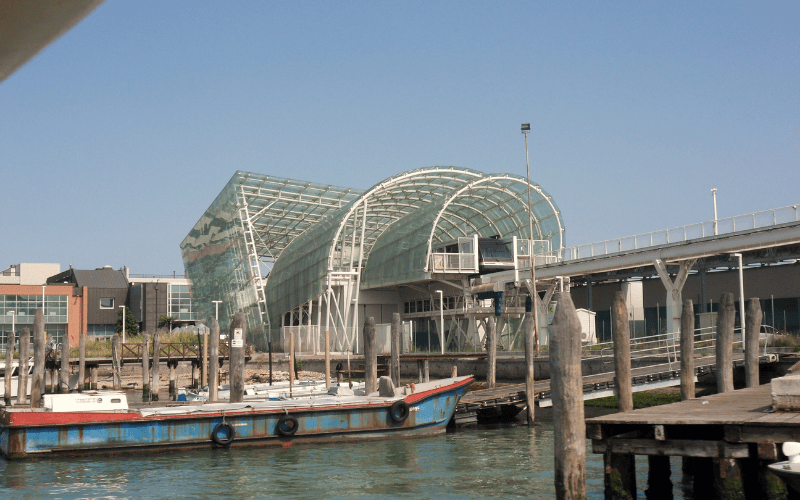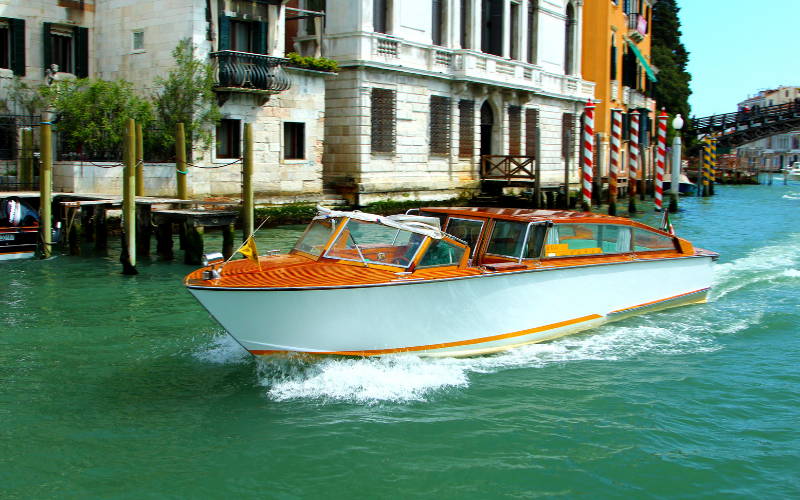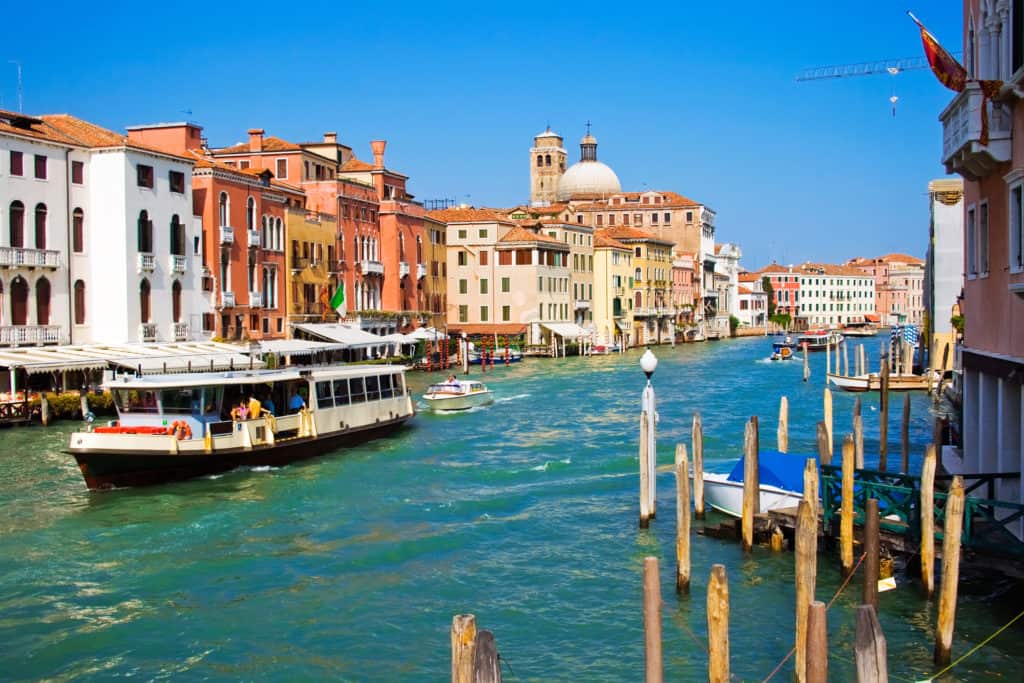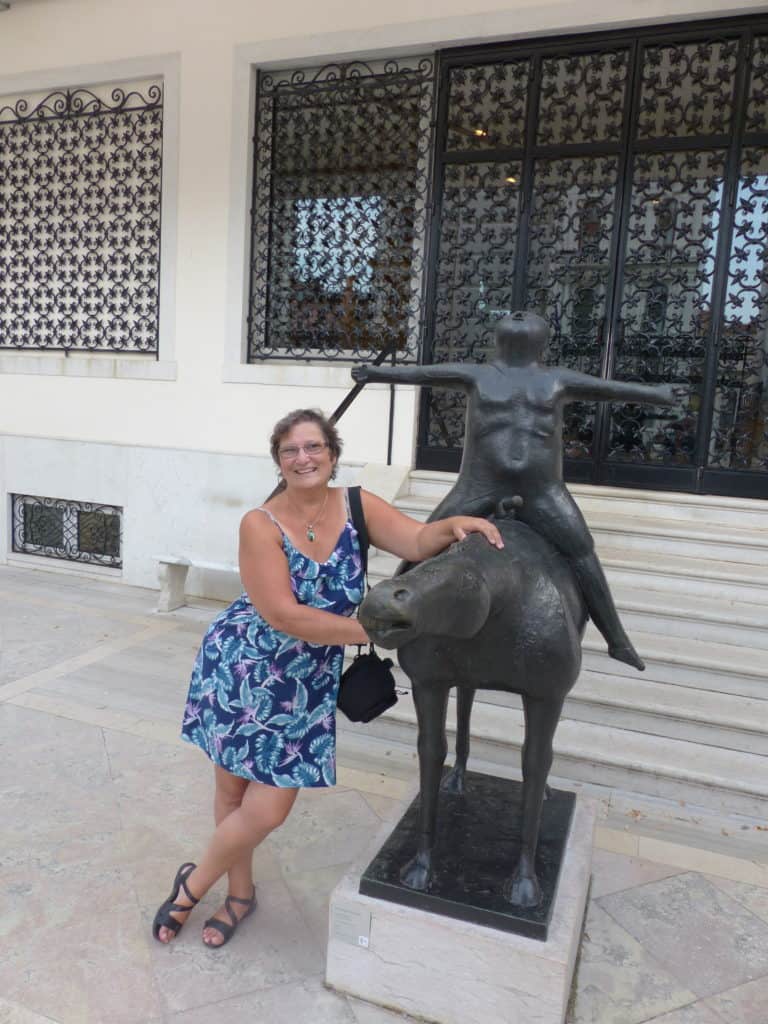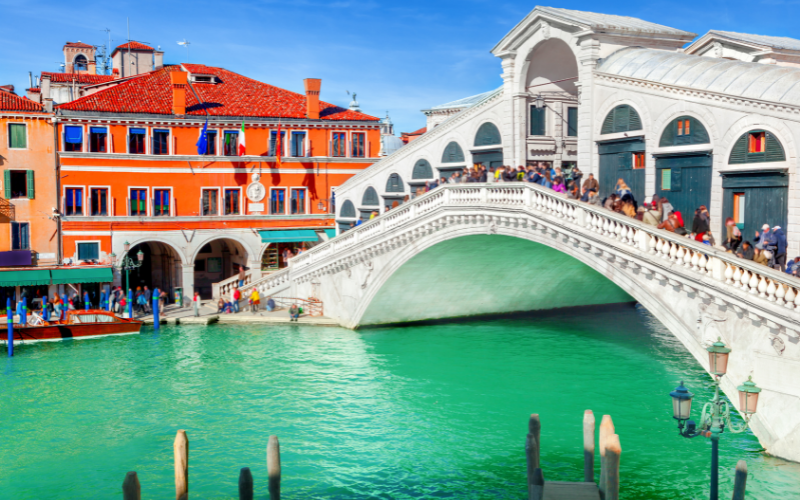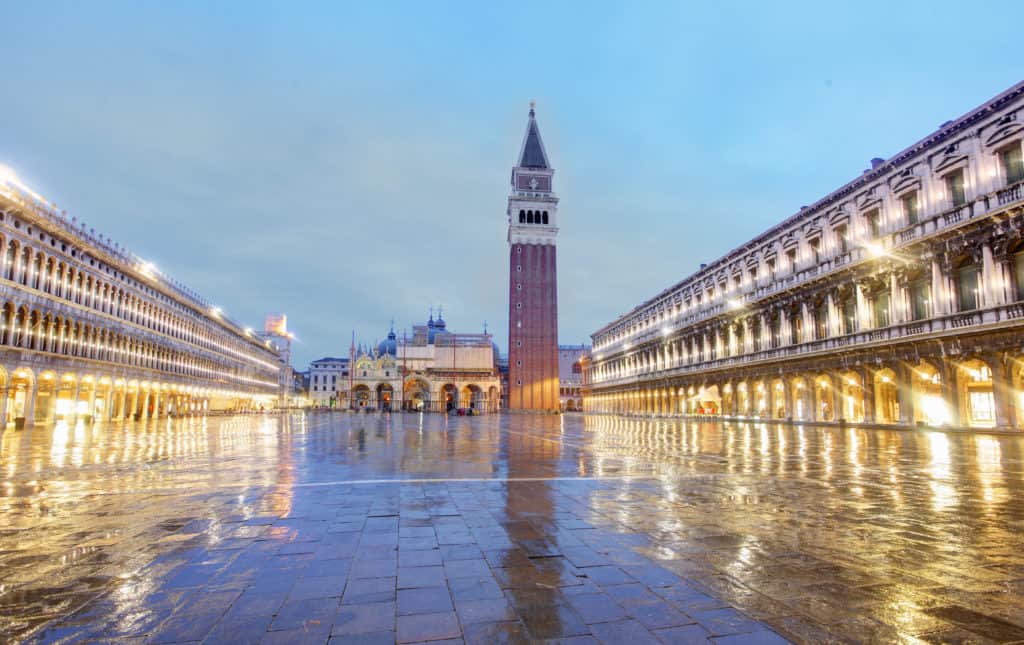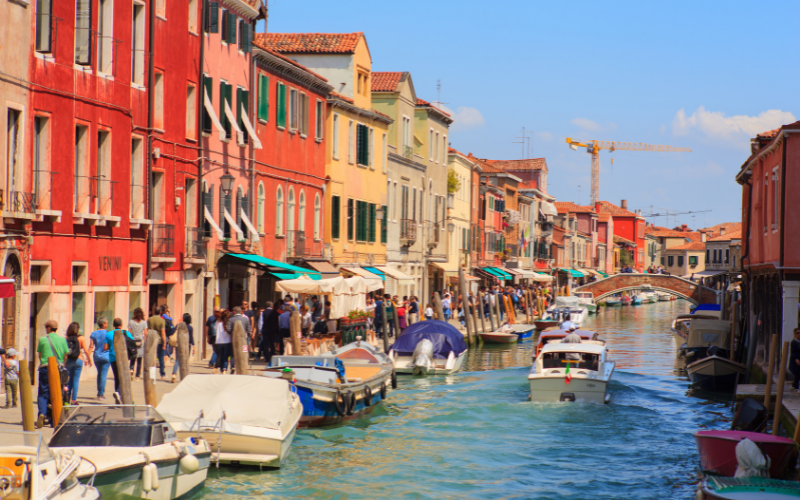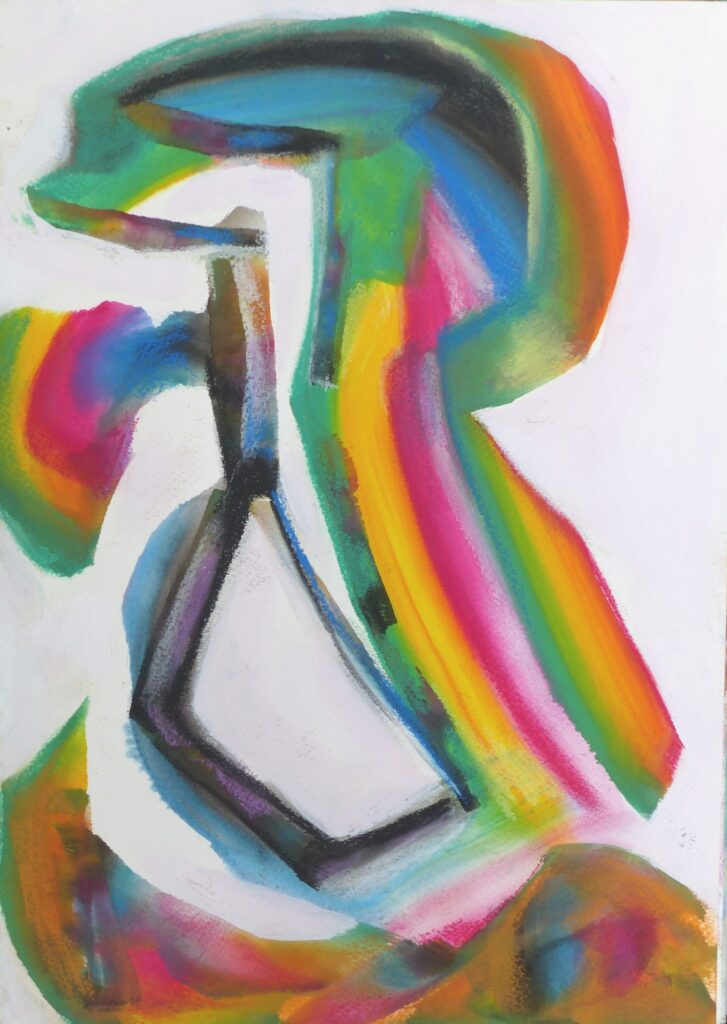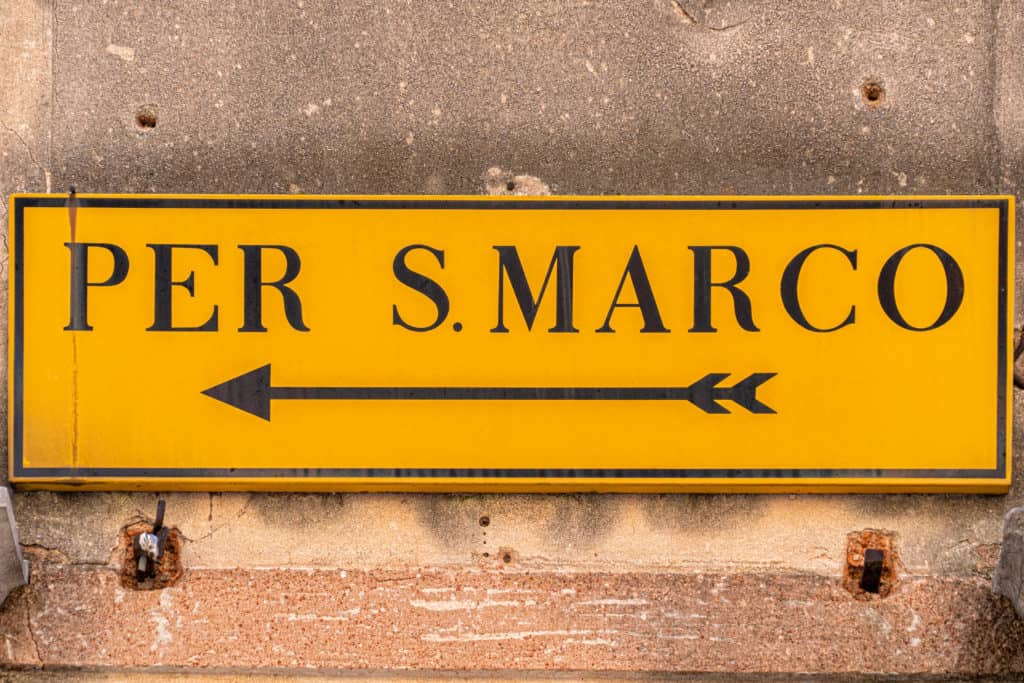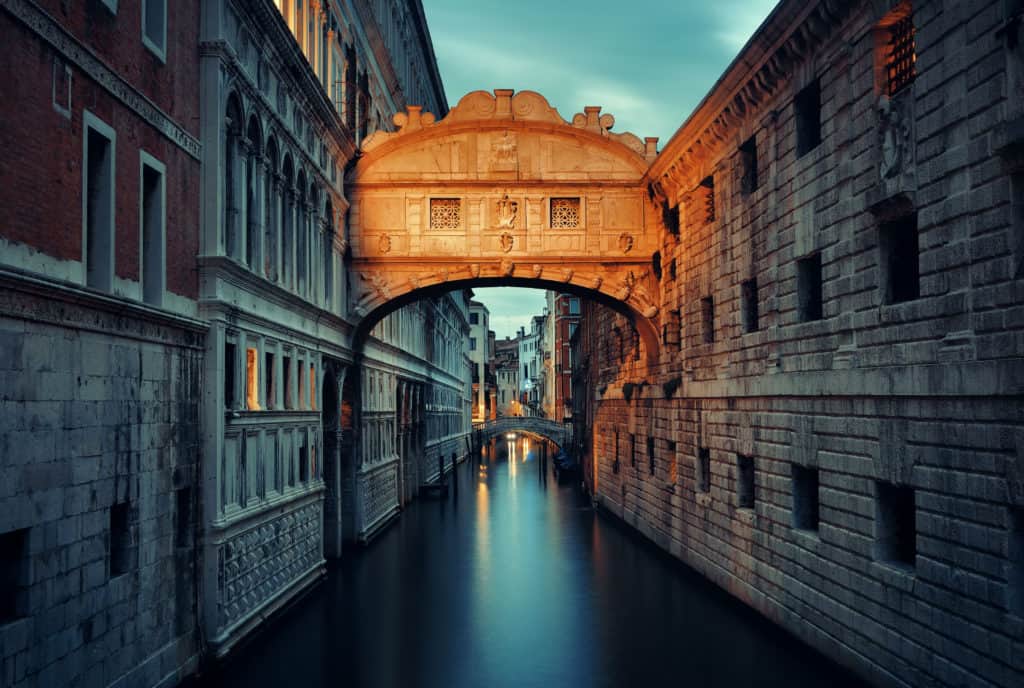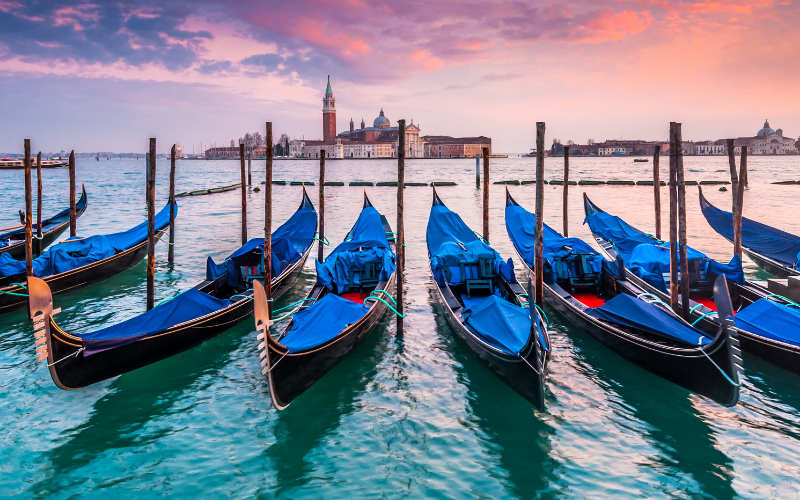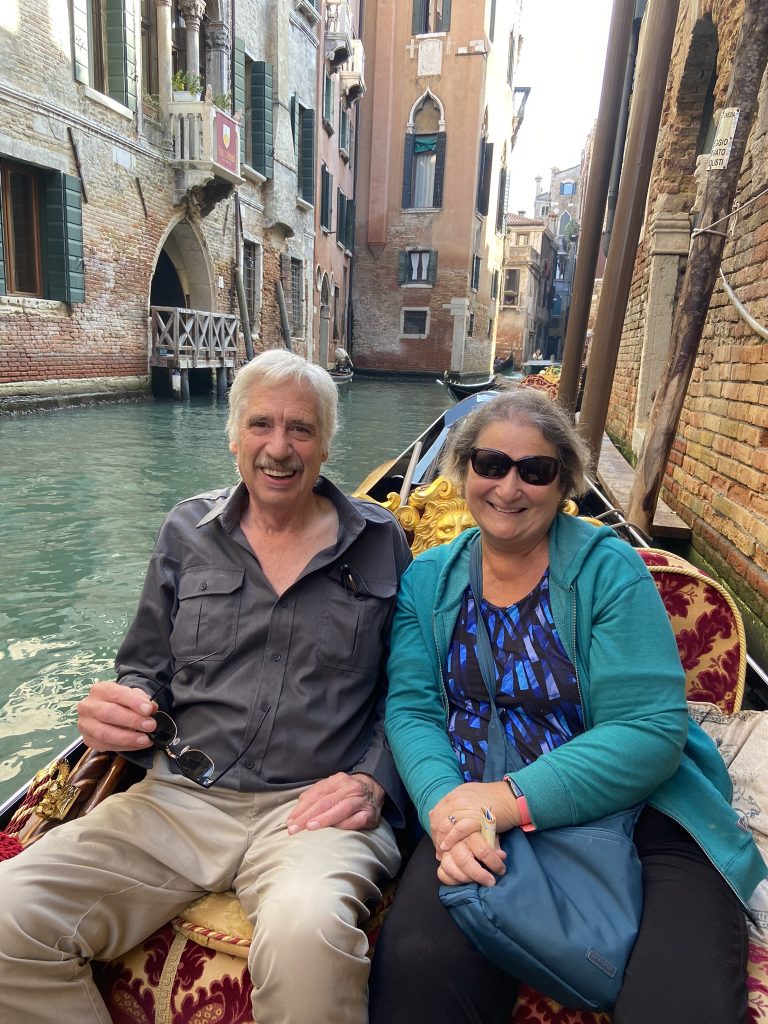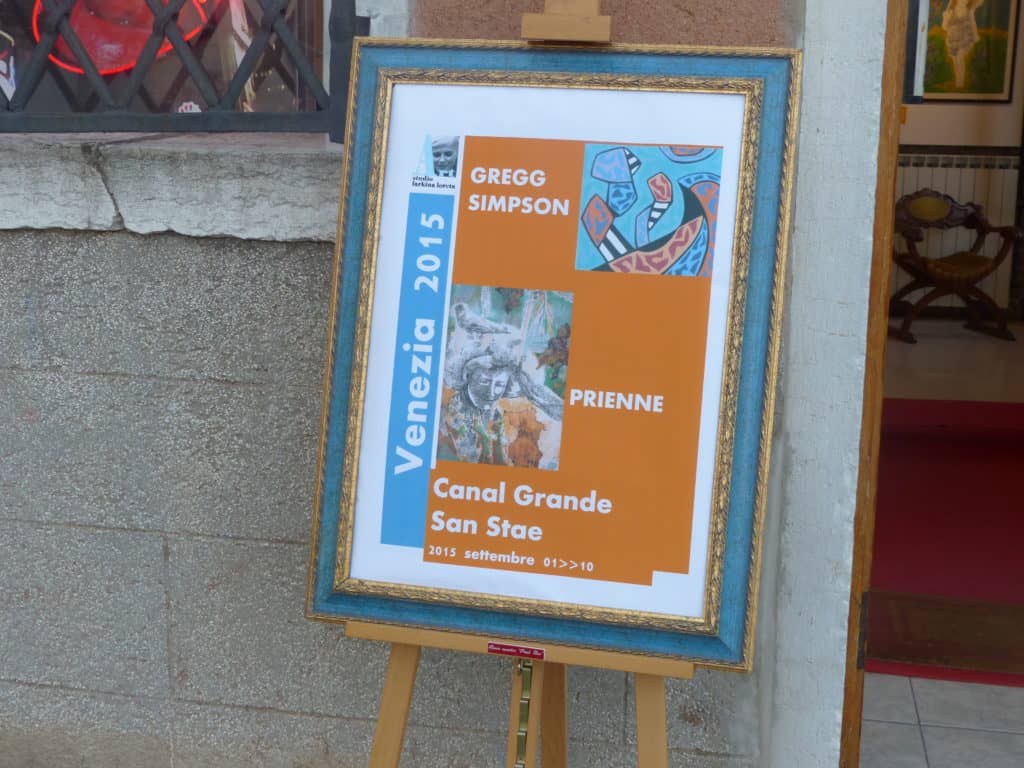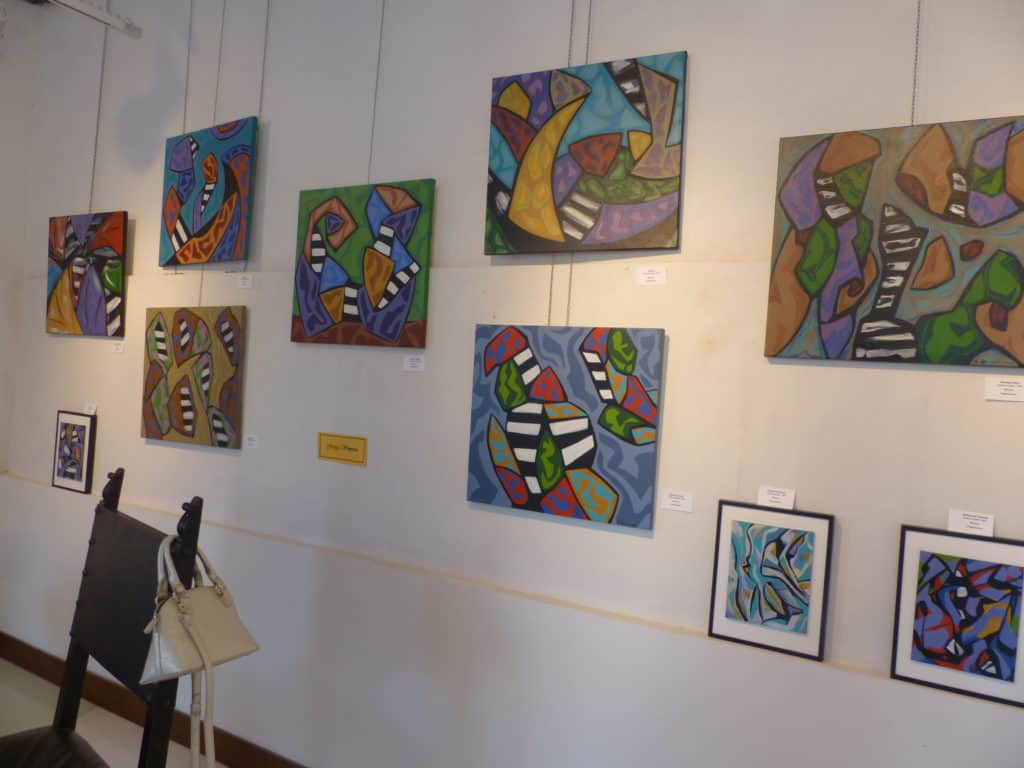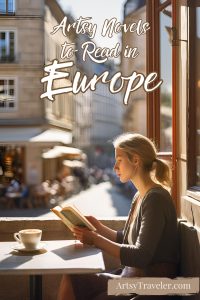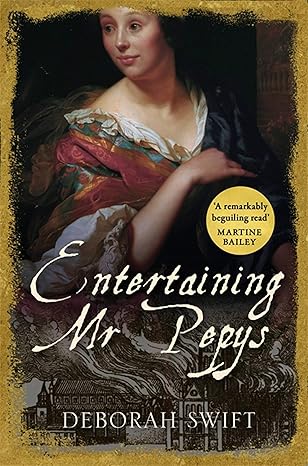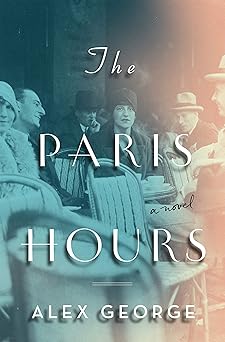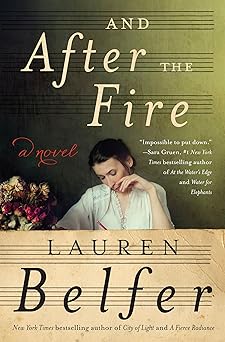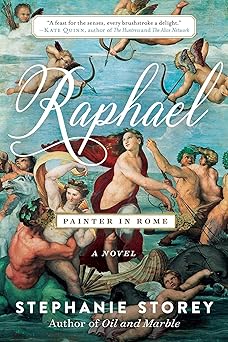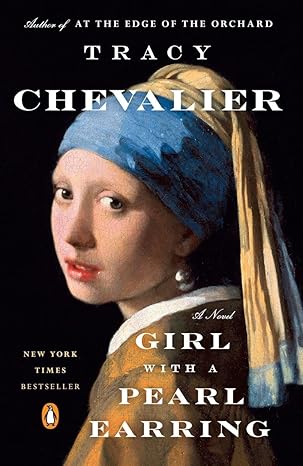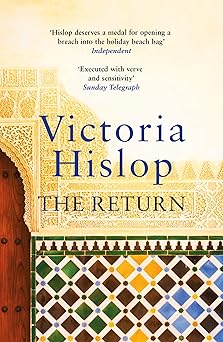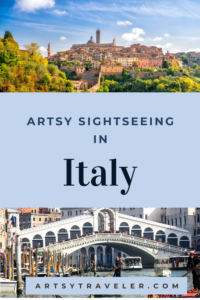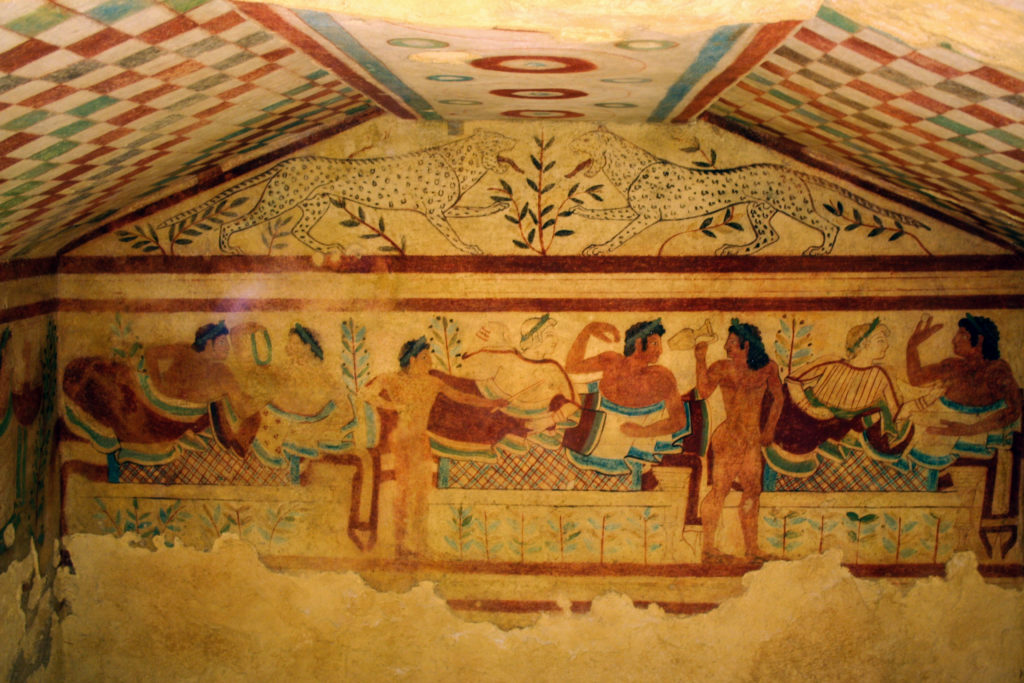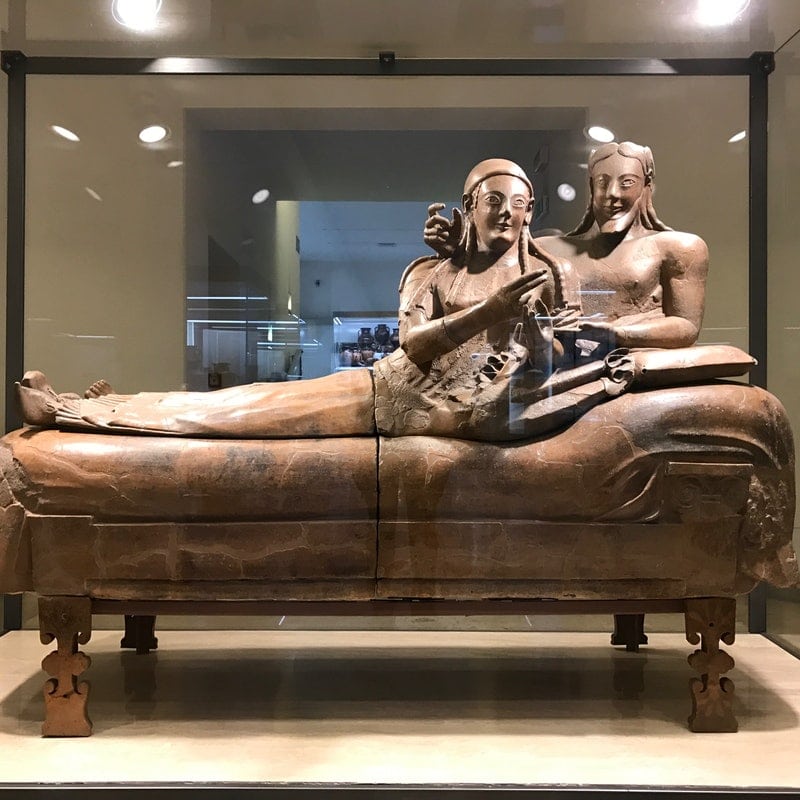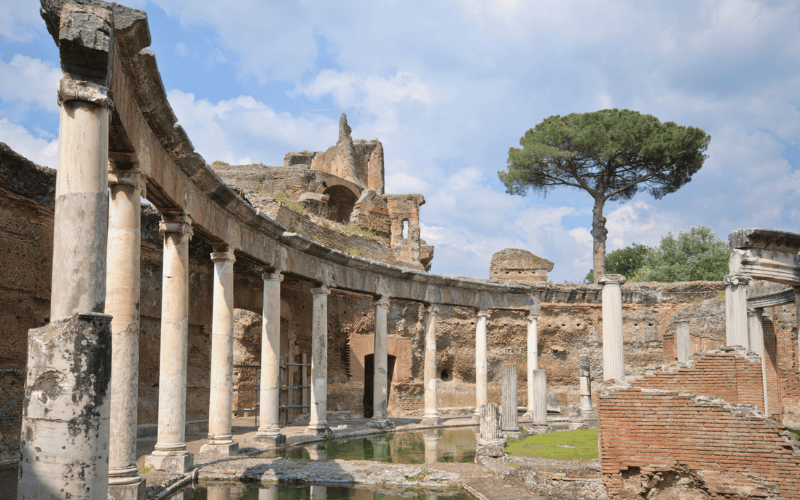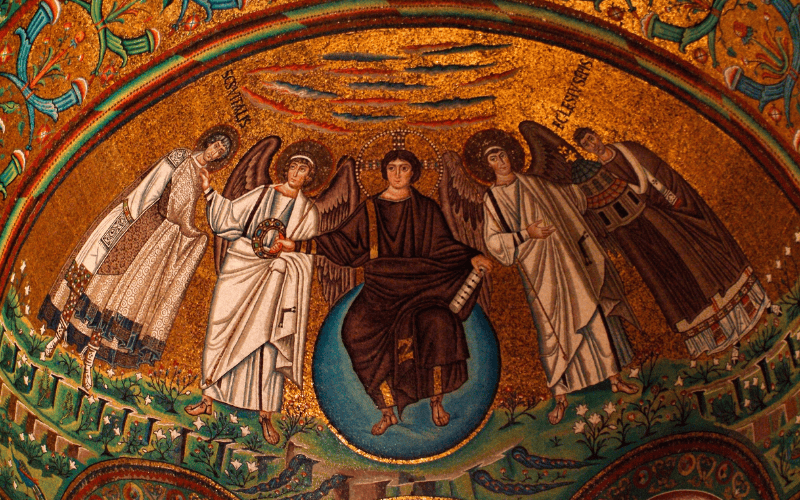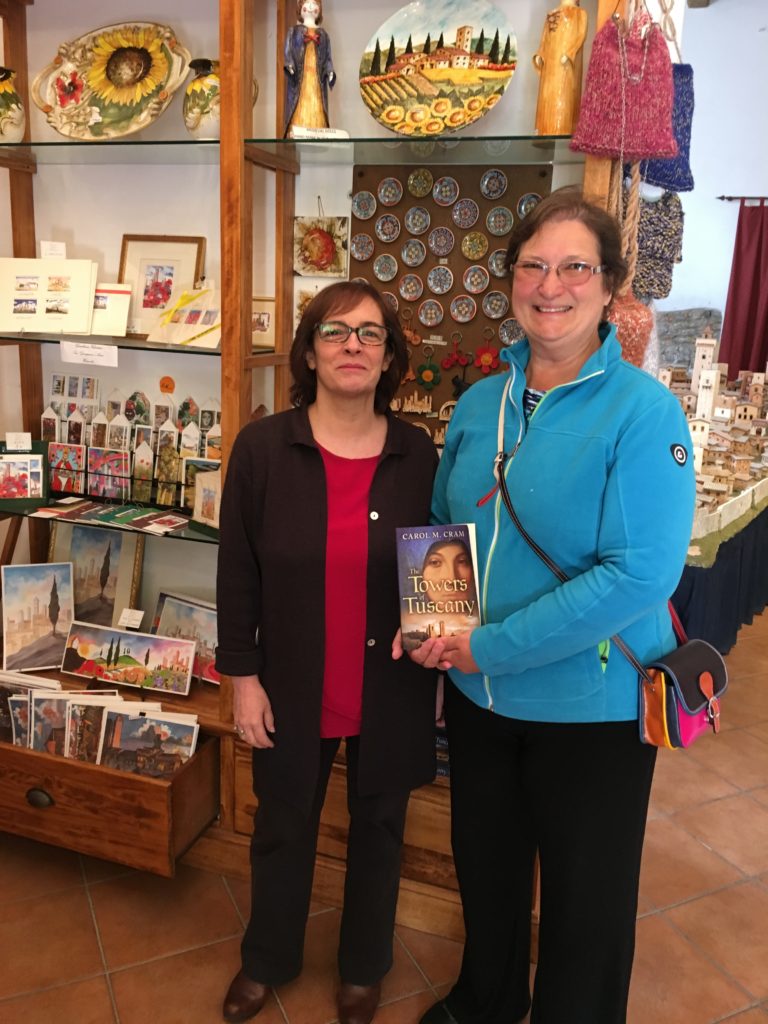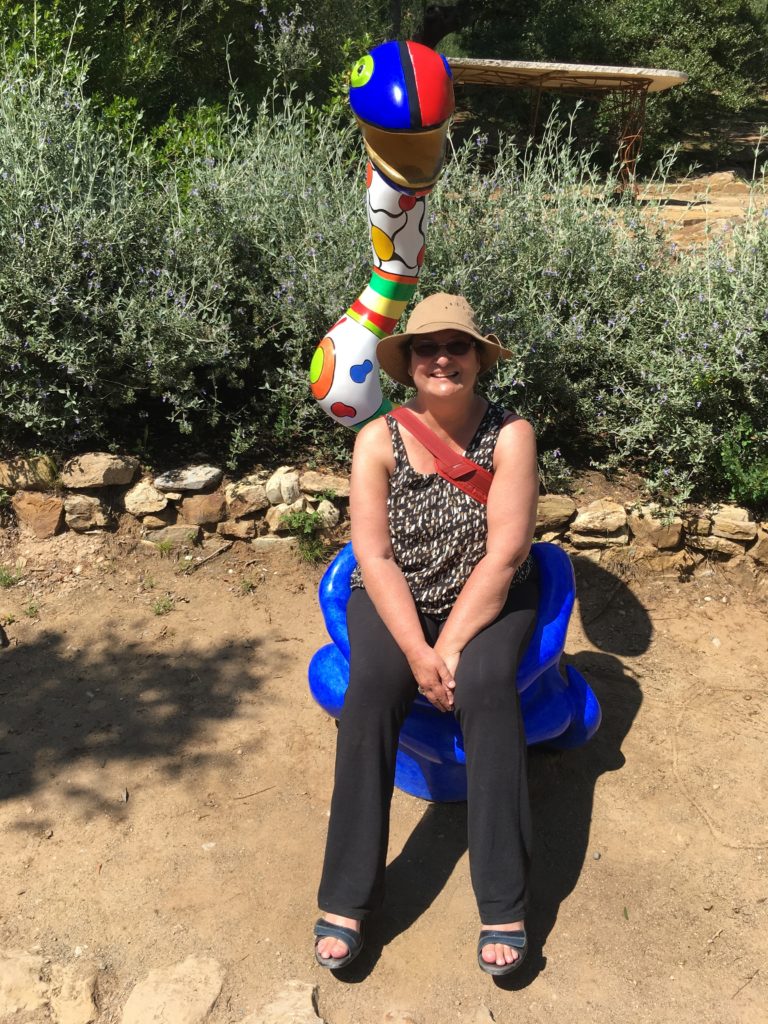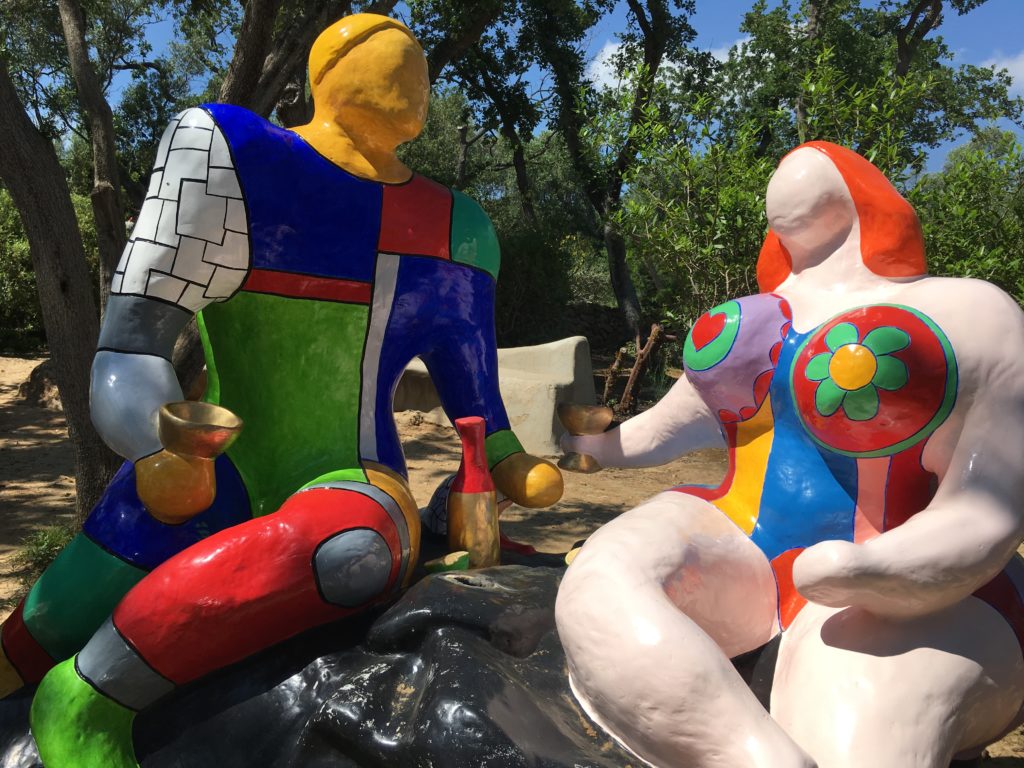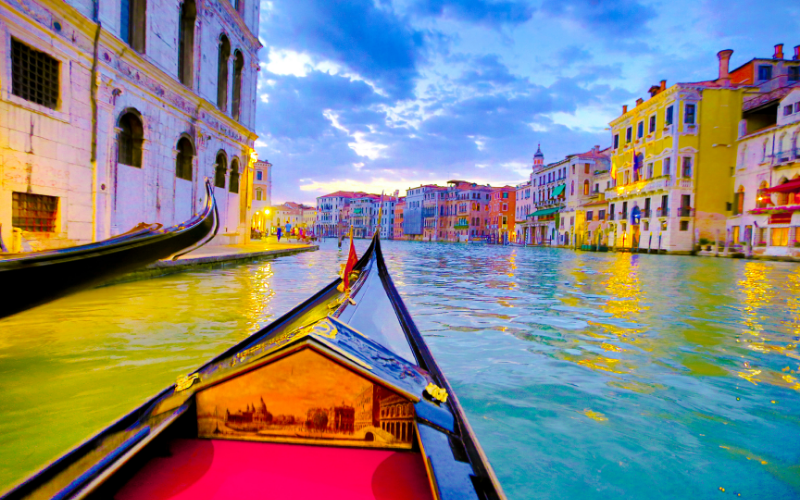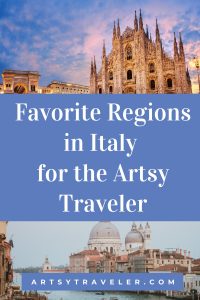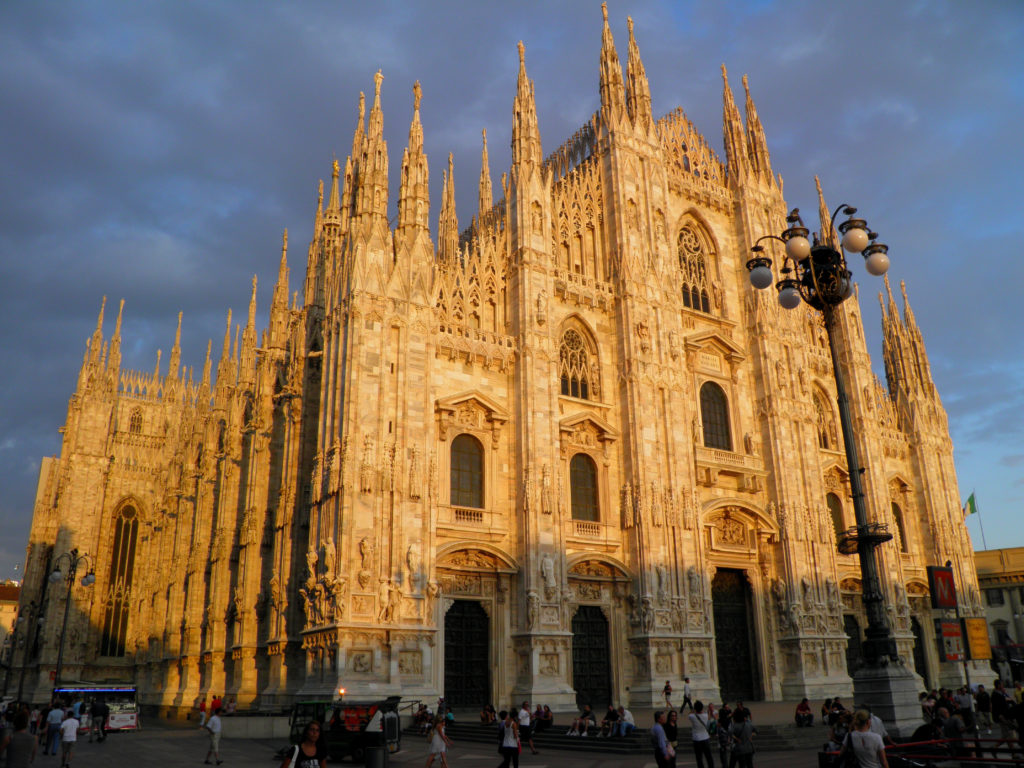Top Ten Favorite Masterpieces at the Uffizi Gallery in Florence
The Uffizi Gallery in Florence is an Artsy Traveler must-see, particularly for artsy travelers who love Renaissance art.
On every trip to Florence, I take the time to marvel at the artworks at the Uffizi Gallery.
Few artsy traveler pursuits equal the joy of wandering blissfully through rooms full of many of western Europe’s most iconic masterpieces.
In this post, I highlight ten of my favorite pieces in the Uffizi Gallery.
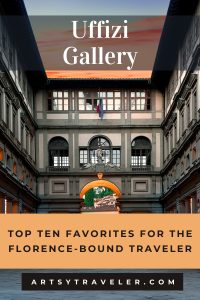
Overview
The Uffizi (which means offices) was built in the mid 16th century by the all-powerful Medici family in order to administer their vast holdings and show off their art collections.
Designed by Giorgio Vasari, the Uffizi was opened to the public as a museum in 1769.
The Uffizi is big and crowded and even, at times, overwhelming. All that amazing art concentrated in one space makes for a heady experience. Take your time and enjoy the ride.
Assume you’ll return!
When to Visit
The very best time to visit the Uffizi Gallery is first thing in the morning, particularly if you are visiting in high season (April to October).
You’ll have the vast complex to yourself, at least for a little while, so you can trip wide-eyed from room to room in peace. You may even snag a place in front of one of the two most famous Botticellis without sharing air with dozens of other people.
If you’re visiting Florence between November and March, you’ll find fewer crowds and a more relaxed pace.
As a result, you’ll likely be comfortable visiting at any time of day. On a recent visit in November, I chose an afternoon time. Although the Uffizi was less crowded than I’ve found it at other times of the year, it was hardly empty.
I still saw a long line-up of people who hadn’t gotten the memo about buying their tickets in advance, and large groups of art lovers jockeying for position in front of the Botticellis.
Getting Tickets
No matter what time of year you visit, purchase your tickets to the Uffizi Gallery in advance. In high season, purchase them at least a week or more before your visit. You’ll get the entry time that suits your schedule and you won’t need to queue up.
We arrived at the Uffizi about 45 minutes before our 13:15 entry time. The weary ticket collector let us in anyway, probably because it was November. The only delay was getting through security. Here’s an option for buying tickets.
https://www.getyourguide.com/florence-l32/florence-uffizi-gallery-skip-the-line-ticket-t638304/?ranking_uuid=f0d9101e-2bb9-453e-bb6c-cdb4745d1bb0
Powered by GetYourGuide
Location of the Uffizi Gallery
The map below shows the location of the Uffizi Gallery in Florence.
Also shown is the location of the Accademia (#2), the Duomo (aka Cathedral of Santa Maria del Fiore) at #3, the Bargelo (#4), the Museo di Palazzo Davanzati–an awesome small museum showing what life was like for a wealthy person in medieval Florence (#5), and the gorgeous apartment we stayed in on the banks of the Arno during our three-day stay in Florence in November (#6: see below for more information about the Palazzo Serristori Residence — high recommended).
This map was created with Wanderlog, an itinerary planner on iOS and Android
Advice for Touring the Uffizi Gallery
As mentioned above, the Uffizi Gallery is large and brimming with amazing art, particularly Renaissance masterpieces. To avoid burnout, I suggest you focus on enjoying ten to twenty pieces rather than stopping to admire every piece. Doing so will quickly exhaust you.
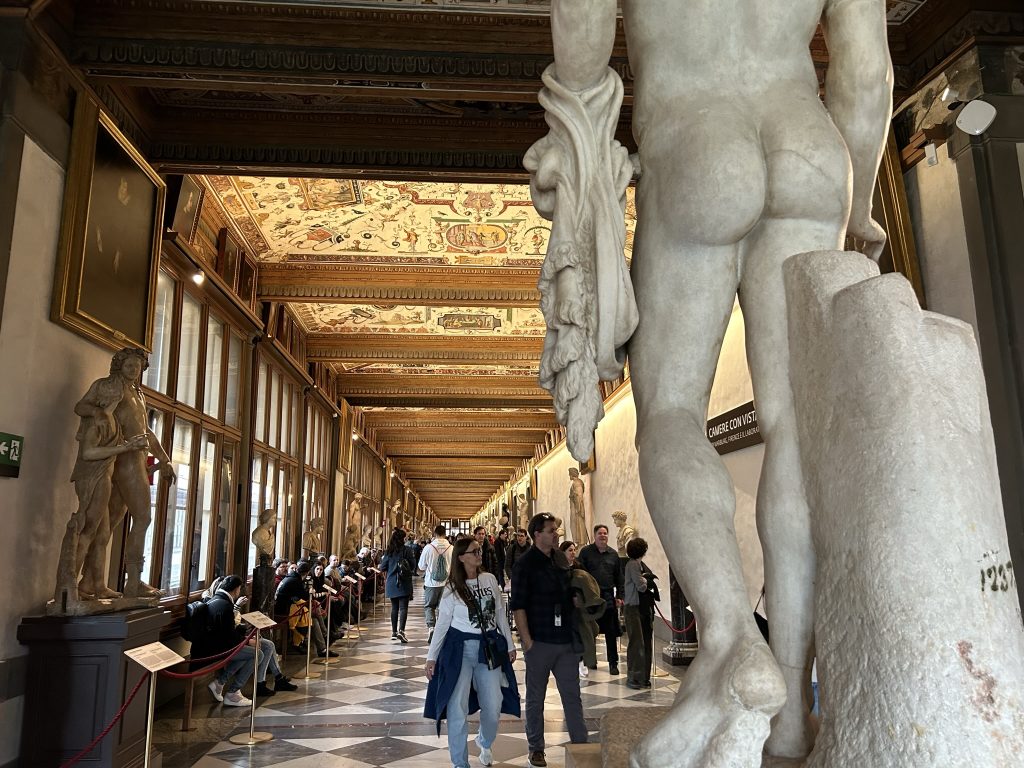
The Uffizi’s collection of amazing artwork is spread across two floors, with the most famous pieces by artists such as Botticelli, Michelangelo, Raphael, and Giotto located on the second floor.
I suggest taking the elevator to Level 2 and then starting with the room of medieval art that contains gorgeous works by Giotti, Lorenzetti, and Martini.
Here are my ten favorite pieces in the Uffizi, presented by artist and in the order in which you’ll encounter them.
Giotto
I’ve become a big Giotto fan over the years. Although he died in 1337, Giotto is considered the first artist of the Renaissance because of his use of realism to depict his subjects.
His most famous works are the frescoes in the Scrovegni Chapel in Padua and in the Basilica of Saint Francis in Assisi.
Madonna and Child Enthroned with Angels and Saints shown below is one of Giotto’s most iconic pieces. It’s truly breathtaking, particularly when you realize that Giotto painted it in 1306 at a time when other artists were still depicting everything on one plane.
Check out the Madonna’s knee under the blue drapery of her gown. It’s three-dimensional. This use of perspective set Giotto apart from his contemporaries and heralded the realism that become the hallmark of the Renaissance painters such as Da Vinci and Raphael over 150 years later.
This painting was a source of inspiration for Florentine artists for generations.
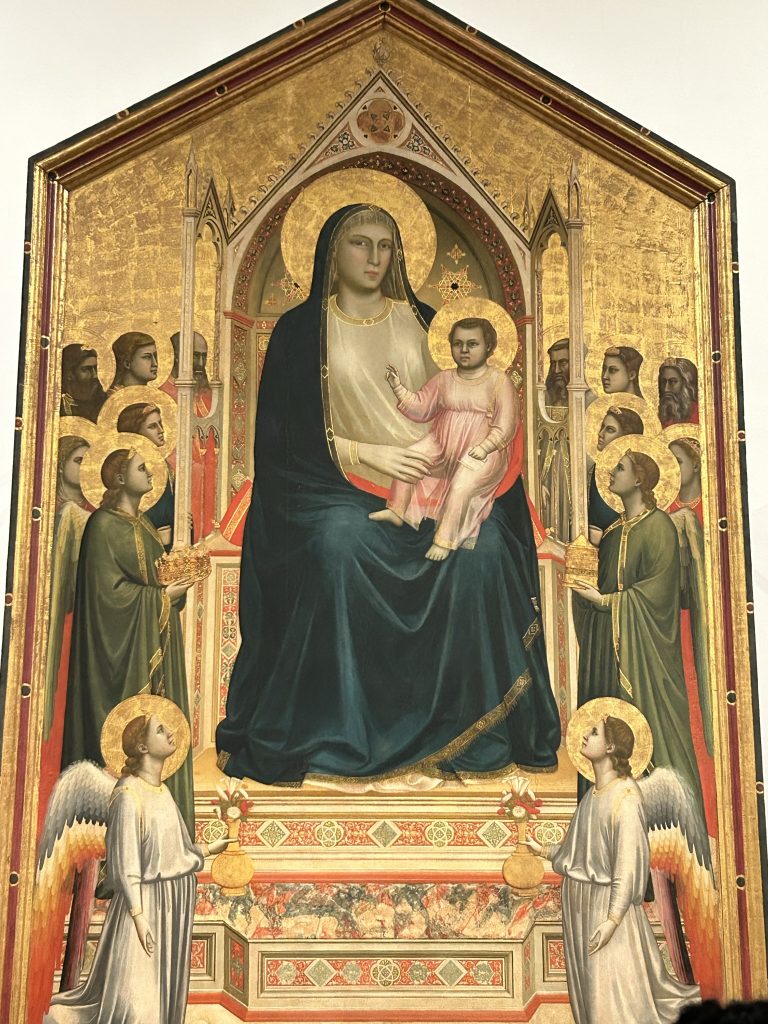
Martini
I have a huge soft spot for Simone Martini, who was active in the mid-14th century. I even include a reference to his Maesta fresco in Siena’s Palazzo Pubblico in my novel The Towers of Tuscany.
In The Annunciation with St. Ansansu and St. Maxima, below, I love Martini’s over-the-top use of gold, as well as how he shows the Archangel Gabriel in relationship to Mary.
Martini depicts a fluttering cloak and unfurled wings to suggest that the angel’s appearance is sudden. No wonder Mary looks distressed, turning away and wrapping her cloak around her. The fact that Gabriel is telling her she’s to be the mother of Jesus would have likely added to her confusion and distress.
In her hand, Mary holds a book. Martini is likening her to a wealthy Sienese woman–the only women who would be able to afford a book, much less read it. Memmo Lippi is also given credit for the work.
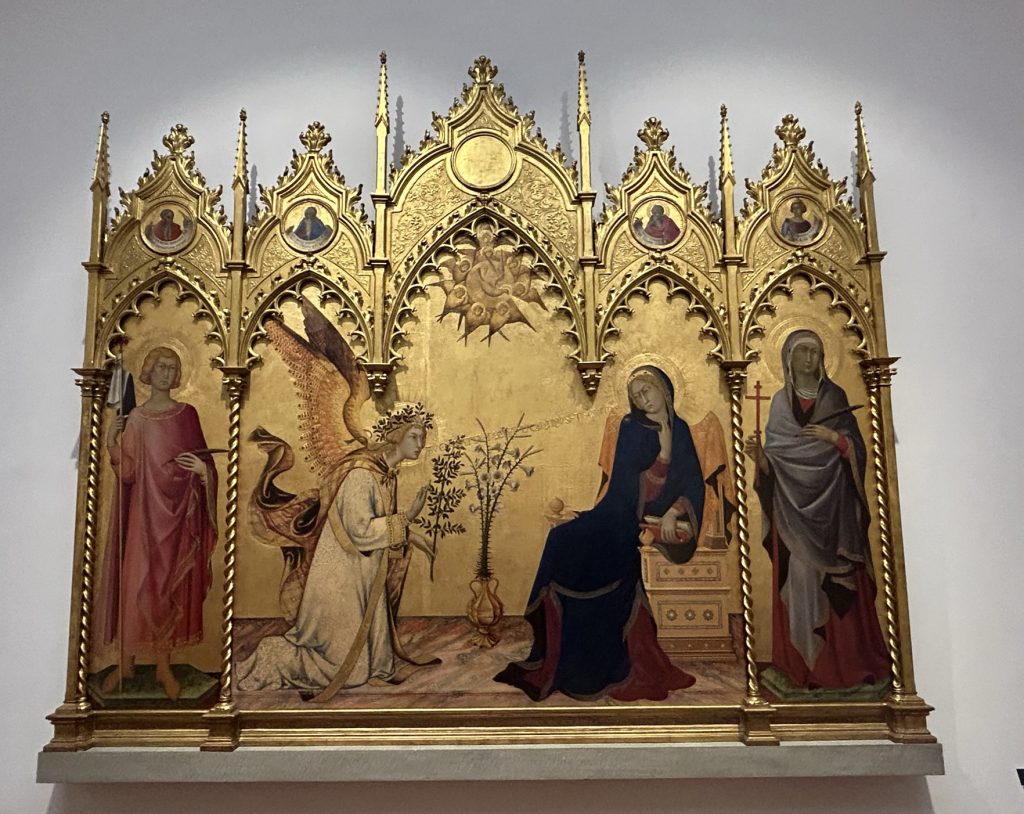
Lorenzetti
Every time I walk into a room of medieval paintings in an art museum, I make a beeline for anything painted by Ambrolgio Lorenzetti. He’s a Siena hometown boy who was a major figure in his day, before succumbing to the plague (so far as we know) in 1348. He painted The Allegory of Good and Bad Government frescoes in Siena’s Palazzo Publicco, one of the palazzo’s many breathtaking highlights.
Lorenzetti painted the four panels from the life of St. Nicholas shown below. I get such a kick out of Lorenzetti’s depictions of people and life in medieval Siena and the architecture–the graceful archways, exterior staircases, and crenelated rooftops.
I’ve spent a lot of time over the years looking at Lorenzetti’s work to help me visualize what Siena looked like in the mid-14th century so that I can accurately write about the period.
St. Nicolas Gives to the Poor
In the top left painting, St. Nicholas is throwing pieces of gold to a poor man to enable him to gather the dowry required to marry off his daughters. The point is that St. Nicholas is carrying out the charitable deed secretly and humbly, without seeking acknowledgment. What a swell guy!
St. Nicholas Gets Ordained
In the bottom left painting, St. Nicholas is being ordained as a bishop of the city of Myra in Asia Minor. The legend is that the prelates who had gathered to elect the new bishop of Myra heard a voice ordering them to choose the first man named Nicholas who entered the church.
And guess who just happened to walk in?
St. Nicholas Raises the Dead
The top right painting depicts a miracle performed by St. Nicholas after his death. He returns to bring a child back to life after the child was killed by the devil disguised as a pilgrim (the figure in black mounting the stairs).
There’s a lot to look at in this panel. I particularly like the way the figures are portrayed in the upper and lower rooms.
St. Nicholas Talks to Sailors
In bottom right panel, Nicholas asks sailors to give some of the grain their ships are carrying to the starving people of Myra. When the sailors comply, the ships are miraculously replenished with grain.
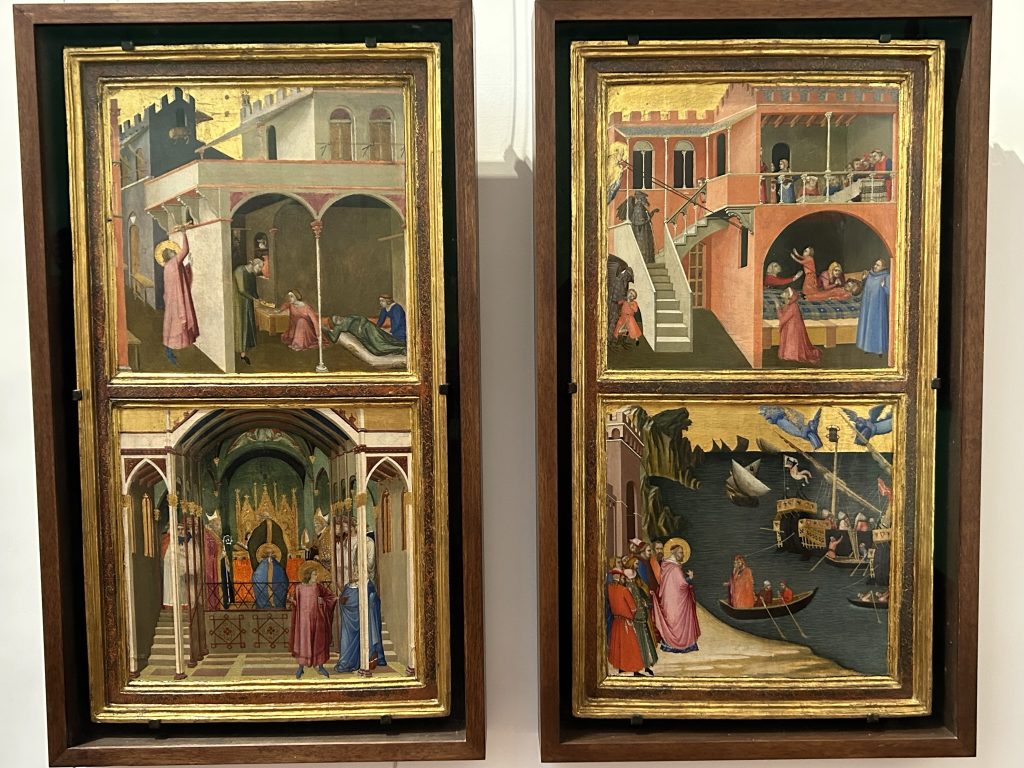
Uccello
This large painting by Paolo Uccello dominated the wall on which it was installed in the Uffizi. Check out all the horses–so much vigor and action.
The painting is called The Battle of San Romano and is part of a cycle of three paintings that celebrated the victory of the Florentine forces over the Sienese troops in 1432.
Poor Siena. It had a tough time after being devastated by plague in 1348 and then suffering numerous mercenary raids, famines, and hostile takeovers culminating in its defeat at the hands of the bellicose Florentines in 1432.
While I’m firmly on the side of Team Siena since I’m currently writing a novel set there, I have to admire how Uccello depicted the battle in his painting.
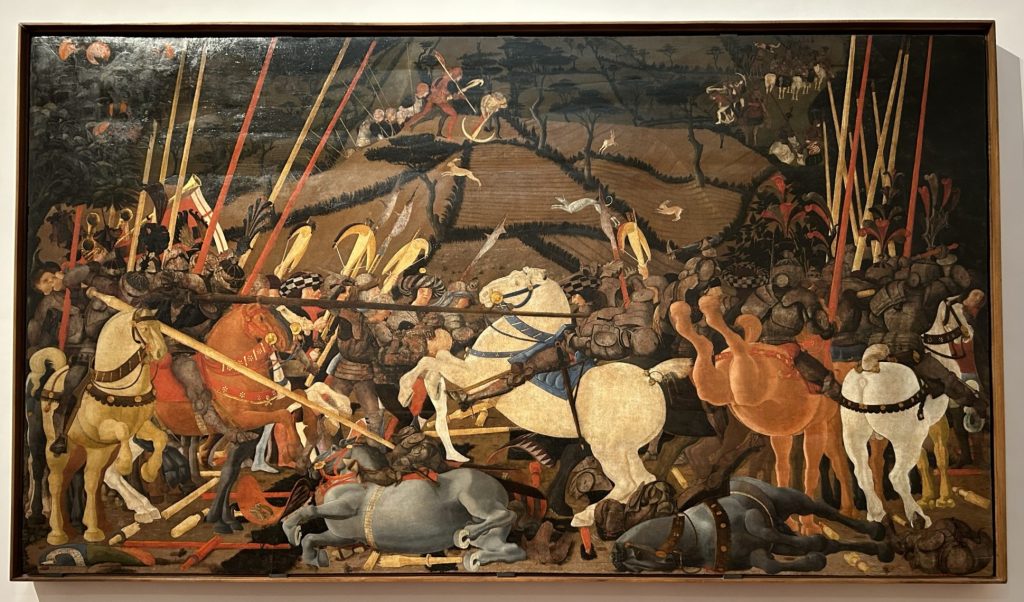
Botticelli
No visit to the Uffizi Gallery is complete without doing some serious swooning in front of two of Botticelli’s most famous paintings–Primavera and The Birth of Venus.
They are both huge and both fantastic–that is, if you can get close enough to get a good, long look.
The large room in which the paintings are hung is mobbed with visitors, all brandishing cell phones and elbowing for position to get a good shot. I know. I was one of them.
Standing in quiet contemplation is out of the question. But it’s still worth seeing the paintings in the flesh, so to speak, just to confirm that yes, indeed, they deserve their vaunted place in western art history.
The figures are ethereal and also realistic, the movement joyous, the themes full of promise and celebration. I don’t think it’s possible to look at Botticelli’s masterpieces and not smile.
Primavera
Here’s what you see while approaching Primavera.
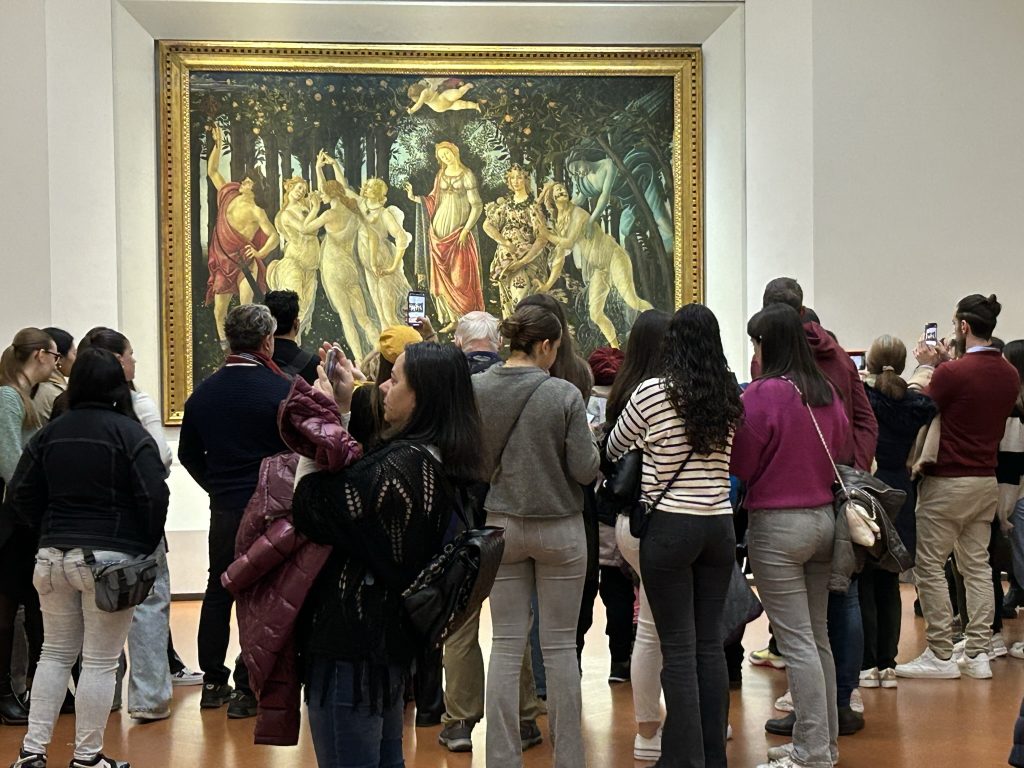
And here’s the shot I managed to get when it was my turn to step in front of the painting. It truly is a wonderful work.
Botticelli had chops, all right. Look at how he depicts the gossamer draperies encasing the three dancing muses and the figure to the right. The central figure in the painting is Venus, goddess of love and beauty. She’s a stunner for sure.
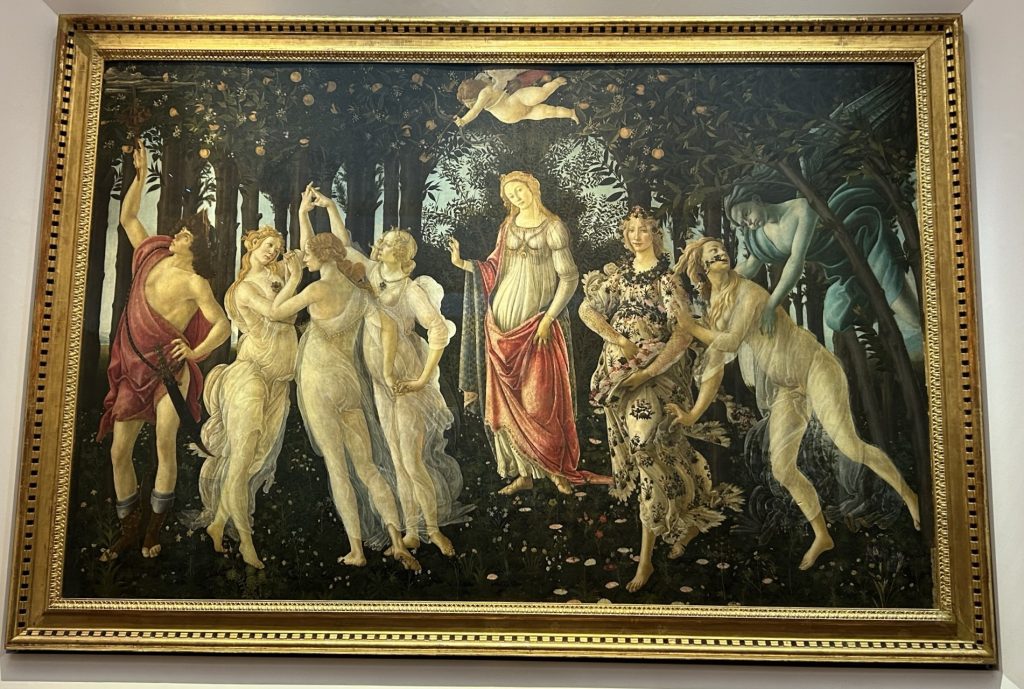
The Birth of Venus
The Birth of Venus is just as mobbed as Primavera, which comes as no surprise considering versions of this work appears on everything from aprons to mugs to mouse pads in Florence’s gift shops.
There is so much movement; you can practically feel the wind in your hair as you contemplate this painting, which depicts Venus, goddess of love and beauty, surfing to land on a clam shell, gently spritzed with sea spray and blown by the winds Zephyr and Aura.
I wasn’t able to get a decent shot of the painting, so the image below is from the Uffizi’s marvelous website.
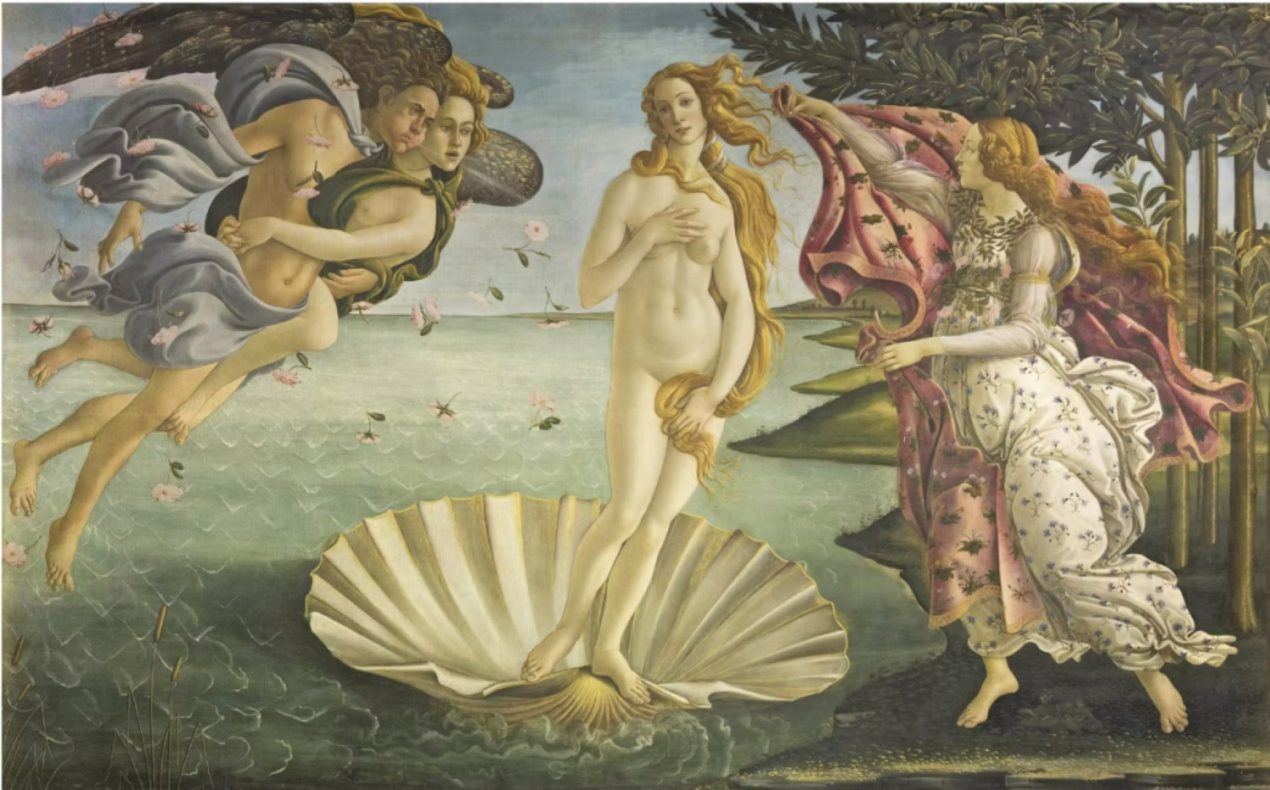
Michelangelo
Florence’s Number One Son is well represented at the Uffizi Gallery and elsewhere in Florence. Thanks to a long and prolific career, Michelangelo’s work is pretty much synonymous with the Italian Renaissance.
One of the masterpieces at the Uffizi Gallery is the magnificent, circular Doni Tondo, the only finished panel painting done by Michelangelo that has survived the centuries. It glows.
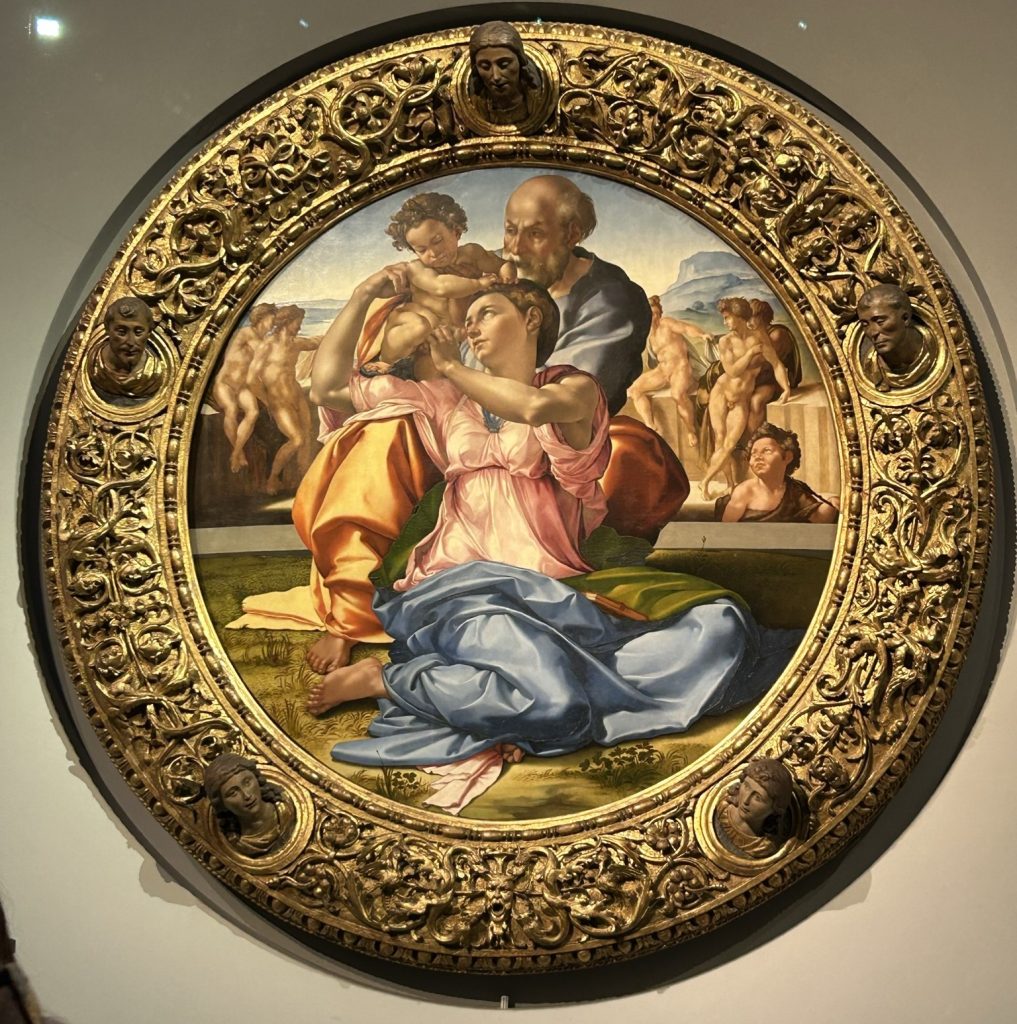
Piero della Francesca
Piero della Francesca’s double portrait of the Grand Duke of Urbino and his wife positively defines aristocratic haughtiness. Imagine the amount of time the duchess must have had to sit still to have that hairdo done.
I’m hoping it wasn’t a daily thing.
Look at the background–how it continues through from one side to the next. Showing the two figures in profile is a typical device in 15th century portraits that was a throwback to ancient coins. The artist’s attention to detail is a result of his training in both Florentine and Flemish traditions.
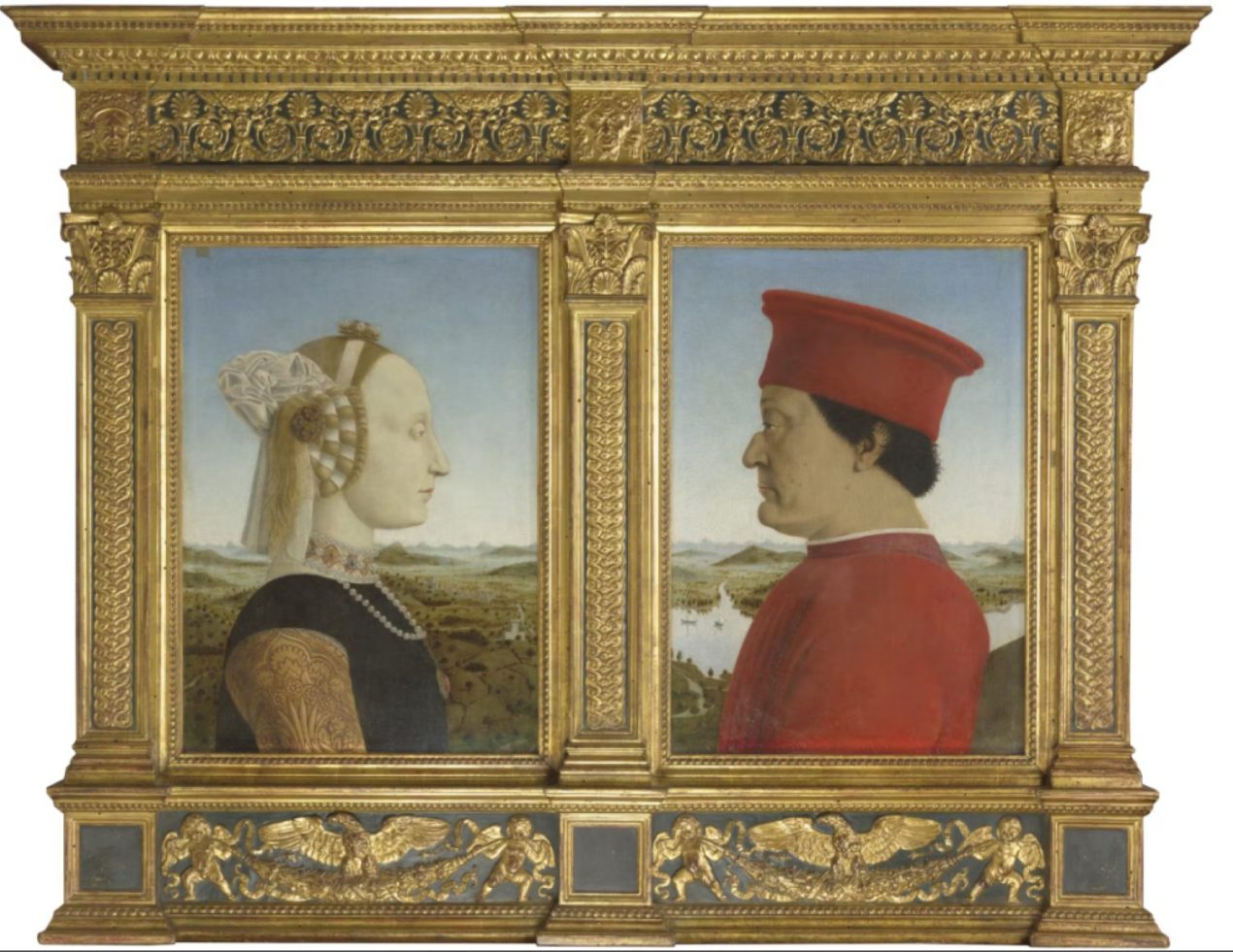
Leonardo da Vinci
Another big draw to the Uffizi Gallery is the presence of a handful of paintings by Leonardo da Vinci.
My favorite is his Annunciation because I love the contrast in styles between da Vinci’s version done in the late 15th century and Martini’s version done in the mid-14th century (see above).
In da Vinci’s Annunication, the figures are rendered extremely realistically and are also quite static. The Virgin is not shrinking away from the Archangel Gabriel, but is confident and receptive. The trees almost look like fantasy trees, and the distant mountains like something out of Lord of the Rings.
The way da Vinci renders the folds of the clothing is remarkable, considering he completed this painting when he was still quite young.
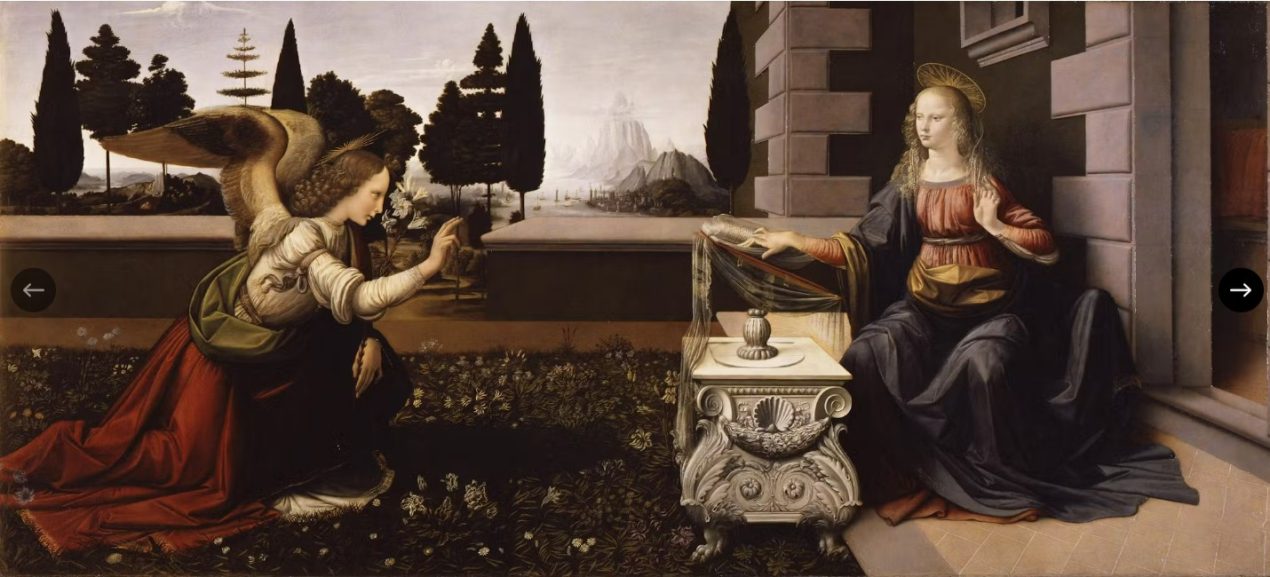
Raphael
I’ve grown to appreciate Raphael’s work over the years. He’s certainly one of the biggies, considered by some to be the greatest painter of them all.
There’s a lot of justification for that view. Unlike Michelangelo and da Vinci, who had other pursuits (science for da Vinci and architecture and sculpture for Michelangelo), Raphael only did painting–and an astonishing amount of it considering he died young, while da Vinci and Michelangelo both lived to ripe old ages.
The work by Raphael I most liked in the Uffizi is Madonna of the Goldfinch. The expression on the face of the Virgin Mary is so youthful and serene. Unlike many Madonnas, she really does look like a young mum.
The trees and landscape in the background are so beautifully rendered. In places they almost look like something Cézanne would have painted 400 years later. And check out the red of the Madonna’s gown–so rich and full and Florentine. It’s a keeper.
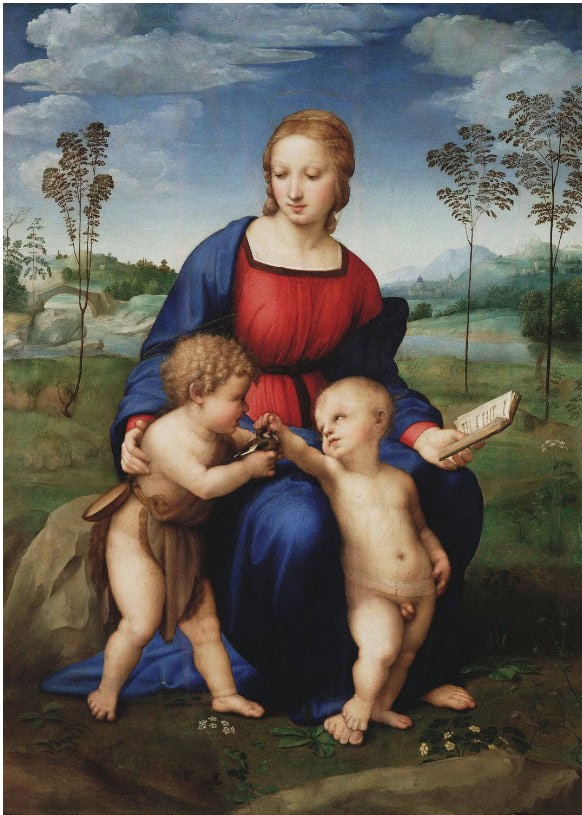
More Uffizi
After exploring the long galleries on Level 2 of the Uffizi, descend to Level 1 to take in even more masterpieces of the 16th, 17th, and 18th centuries.
Highlights are the Titian’s Venus of Urbino, Caravaggio’s Medusa, and my fave, Judith Beheading Holofernes by Artemisia Gentileschi.
Enjoying Florence
You emerge from the Uffizi into the beautiful piazza della Signoria. Here, you’ll stare up at the Palazzo Vecchio with its iconic tower, check out a statue of Michelangelo’s David (the original is displayed in the Accademia), and marvel at the fountain and statue of Neptune.
Here’s a shot of it in the evening.
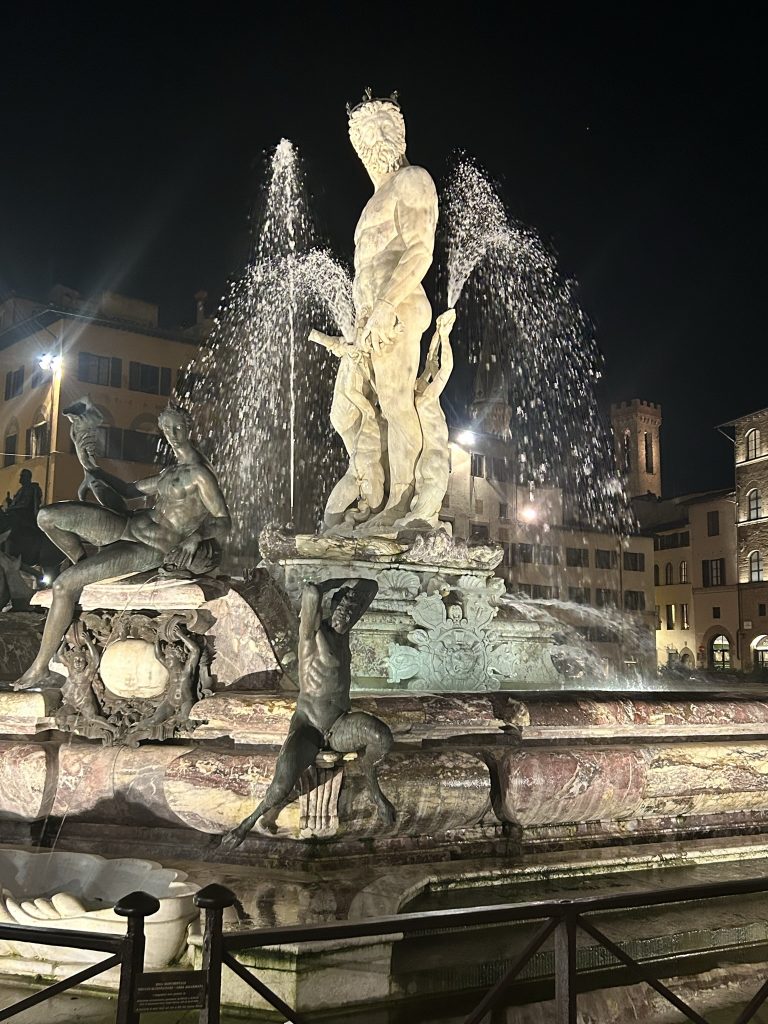
Resist the urge to stop and have a coffee at one of the cafes in the piazza, These high-rent places cater to tourists and have sky-high prices.
Walk a few blocks into the maze of streets leading from the piazza toward the river to find slightly less touristy places, although to be honest, Florence is Tourism Central.
And no wonder! It’s crowded, crammed with souvenir shops, and far from undiscovered. But hey, it’s Florence, and there’s no place on Earth quite like it for conjuring the grandeur and pomposity of the Renaissance.
Staying in Florence
On each visit to Florence, I’ve stayed somewhere different–sometimes on the outskirts and sometimes in the middle.
My very favorite place was Serristori Palace Residence. Although a bit on the pricey side, the Serristori Palace Residence is excellent value because of the size of the one-bedroom apartment, with high ceilings, view of the river, and its excellent location.
Here’s a video I shot from the bedroom window early on a breezy November morning.
You will need to walk a good fifteen minutes to reach the center of Florence. But the walk that takes you along the Arno is just spectacular, particularly at sunset. Compared to a typical hotel room in Florence, the Serristori Palace Residence is almost a bargain, at least for Florence.
Here’s me on the walk into Florence on a brilliantly sunny (but not particularly warm) November day.
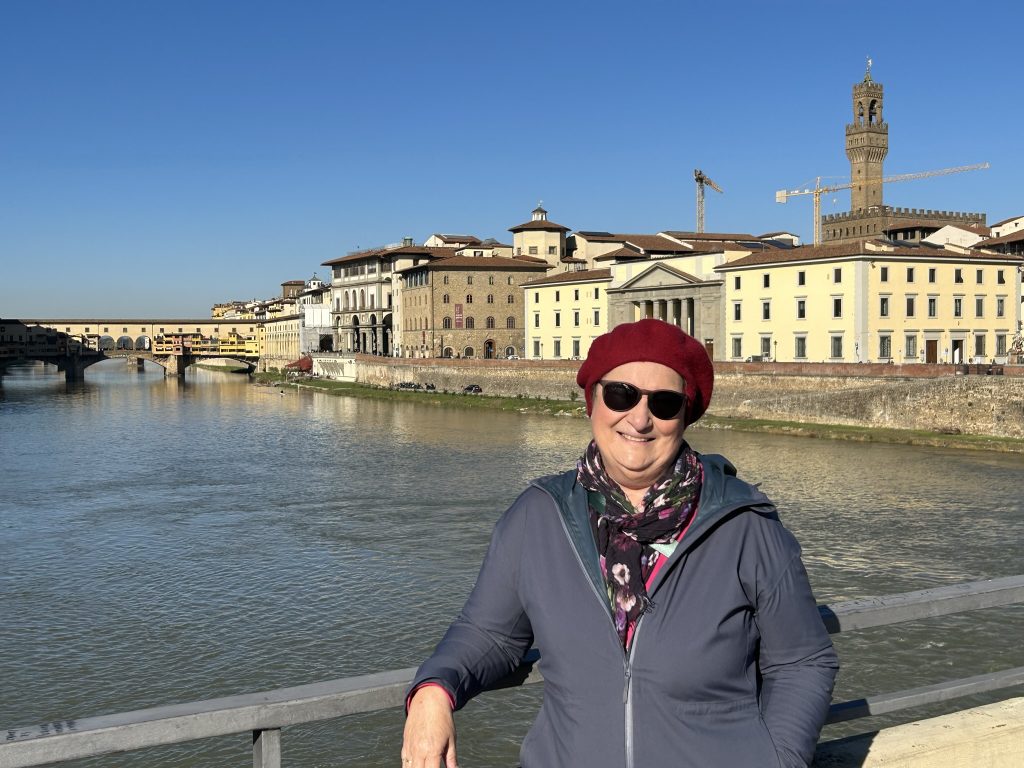
Tickets and Tours in Florence
You can easily spend several days in Florence, immersing yourself in the great art of the western world. If you’re short on time, consider a guided tour. Here are a few suggestions from GetYourGuide and Tiqets.com. I’ve purchased tours and tickets through both companies and been very satisfied with the prices, the quality of the tours, and the ease of booking
Walking Tours in Florence
Florence is a great city for a walking tour. It’s relatively small and that is a LOT to see. Check out these tours offered through GuruWalks.
Conclusion
Have you visited the Uffizi? What were some of your favorite pieces? Share your thoughts in the Comments below.
